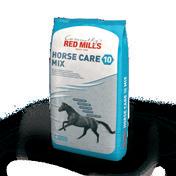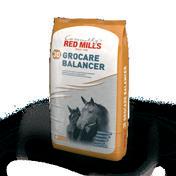

HOW TO TREAT
SPRING
ALLERGIES
Understanding the effects they have on the respiratory tract

ACT TO GET OUR VOICES HEARD Survey of European thoroughbred practices


THE STABLE ENVIRONMENT
Maximising your horse’s comfort and well-being







SPRING
Understanding the effects they have on the respiratory tract

ACT TO GET OUR VOICES HEARD Survey of European thoroughbred practices


THE STABLE ENVIRONMENT
Maximising your horse’s comfort and well-being




Becoming a professional table tennis player or building a career in racing was the career choice facing our cover trainer profile, Henk Grewe, in his formative years. He chose the latter, simply because he felt there was more money in racing.
He started training just over ten years ago and since then has been crowned champion German trainer on two occasions and last year won his first German Derby with Palladium.
In October, Palladium became the most expensive horse to sell as a hurdling prospect when changing hands for €1.4m at the October Arqana Arc sale. He was also the second consecutive German Derby winner for Liberty Racing - an ambitious German based syndicate who won the 2023 Derby with Fantastic Moon.
Will luck strike for the third year in a row? Well Grewe certainly has high hopes for the Liberty Racing owned son of Camelot called Amico (pictured with Grewe on cover).
In this issue Adam Jackson covers what can be done to maximise the stable environment as a prelude to our survey on European Thoroughbred Racehorse Practices – which relates to the day-to-day management of the stabled horse.
Paull Khan is the Secretary-General of the European and Mediterranean Horseracing Federation (EHMF) and in his column, covers the reviews being undertaken of the European Union’s laws on animal welfare.
Many readers may well be familiar with the review relating specifically to welfare in transport.
But as Khan tells us, there is much less awareness of the second strand of this EU review – and this one threatens to have yet more far-reaching implications for trainers and the way they operate.
The review covers a broad range of animals, but the Commission has asked the body to which it turns to for scientific advice in these areas – the European Food Safety Authority (EFSA) – for a scientific opinion specifically on the protection of horses and other Equidae.
They make it clear that EFSA should specifically consider horses kept for competition – racehorses.
They will be reviewing the most common husbandry systems in place and then identifying welfare consequences of the above and making recommendations to prevent or mitigate those welfare consequences.
It’s important that trainers across Europe get the opportunity to have their voices heard in order to try to ensure that wellintentioned legislative change does not have unintended consequences.
We invite you to complete the survey of European Thoroughbred Practices (see page 45). Our aim is to help start discussions, to pool ideas and expertise so that our industry can, in due course, speak to the European institutions in as informed and measured a way as possible.
Wherever your racing takes you this spring - good luck!











08 Cavalor Trainer of the Quarter
Lissa Oliver features Niels Petersen with Queen Azteca winning in the UAE Oaks at Meydan.
10 Henk Grewe
Catrin Nack profiles the Classic winning German trainer on how he grewe from a middle-of-the-road jockey to a champion trainer.
24 Organic minerals
Catherine Rudenko looks at organic minerals and why they should be part of the racehorses diet.
32 Maximising the stable environment
Adam Jackson covers aspects such as ventilation, flooring, bedding, lighting and the use of therapeutic tools for the stabled horse.
42 European thoroughbred practices
Paull Khan explains why it’s important for trainers to ensure their voices are heard in a key review of animal welfare legislation.
46 Have horse, will travel
Lissa Oliver highlights the key races and prize money earning opportunities on offer this summer.
58 Early entries and where does the money go?
Daragh Ó Conchúir looks at where race entry fees go and and asks if the concept of early entries needs changing.
64 European Champions 2024
Paull Khan ranks the champion trainers and jockeys across Europe in 2024 by prize money.
70 Spring allergies
Becky Windell gives advice on how to treat spring allergies and the effects they have on the respiratory tract.
76
Celia Marr gives tangible improvements to equine safety and welfare to reduce the prevalence of both EASD incidents and severe musculoskeletal conditions.
82
Jacqui Matthews reports on how the industry must adopt management-based and test-led methods to control worm populations effectively.
88
Holly Robilliard looks at how we can tailor training programs based on DNA to optimise performance.
92 Recruiting new talent
Virginia Lisco examines the broader initiatives that support workforce development in the industry to attract and retain a new generation of professionals.


Editorial Director/Publisher
Giles Anderson
Sub-Editor
Nico Jeeves
Design/Production
Damian Browning
Advert Production
Lauren Godfray
Circulation/Website
Lauren Godfray
Advertising Sales
Giles Anderson
Cover Photograph
Frank Sorge / galoppfoto.de
Trainer magazine is published by Anderson & Co Publishing Ltd.
This magazine is distributed for free to all ETF members. Editorial views expressed are not necessarily those of the ETF. Additional copies can be purchased for £8.95 (ex P&P). No part of this publication may be reproduced in any format without the prior written permission of the publisher.
Printed in the European Union
For all editorial and advertising queries please contact:
Anderson & Co. Publishing
Tel: +44 (0) 1380 816777
Fax: +44 (0) 1380 816778
email: info@trainermagazine.com www.trainermagazine.com
Issue 89
Cassie Fraser, a native Vermonter, is the content writer for Etalon Equine Genetics. Her background in veterinary medicine, horse training and marketing helps her bridge the gap between equestrians and genetic testing.
Adam Jackson MRCVS is an independent vet at Jackson Equine, a modern independent equine veterinary practice based in Farnham, Surrey serving Hampshire, Surrey and West Sussex. Initially, he started work in a mixed practice in Hampshire and then began to focus on Equine veterinary medicine and surgery. He was involved with care and treatment of horses that attended both the Rio and Tokyo Olympic and Paralympic Games.
Paull Khan, PhD. is an international horseracing consultant. He is a member of the Executive Council of the International Federation of Horseracing Authorities (the global peak body for thoroughbred racing) and Secretary-General of the European and Mediterranean Horseracing Federation. His other clients include the British Horseracing Board. Previously, Dr Khan held many senior roles at Weatherbys, including Banking Director and Racing Director.
Virginia Lisco, born and based in Italy and studied International and Diplomatic Sciences. She has always been passionate about horses and a few years ago discovered the world of horse racing which has since become her world. She has worked in some Italian stables, and subsequently sought to explore all areas related to racing. Her ambition is to thoroughly understand all aspects concerning the industry and the promotion of horse welfare.
Professor Celia Marr is an RCVS recognised Specialist in Equine Internal Medicine based at Rossdales Equine Hospital and Diagnostic Centre, Newmarket. She has previously worked at Cambridge University, the Royal Veterinary College, the University of Pennsylvania, and in racehorse practice in Lambourn and is the editor of Equine Veterinary Journal.
Prof. Jacqui Matthews qualified as a vet before completing a PhD in parasitology. She worked in academia for >25 years, leading projects valued >£14M. Outputs include >150 peer-reviewed papers, plus patents and lay articles. She is a fellow of the RCVS and Royal Society of Edinburgh and RCVS Specialist in Parasitology.
Catrin Nack became hooked with racing when she watched Zauberer ploughing through the mud to win the German Derby in 1978 and has missed only two editions since. She joined the German racing newsletter Turf-Times as a freelance writer in 2010 and has been contributing about English and Irish racing, with a focus on National Hunt, ever since.
Daragh Ó Conchúir is a native of Rinn Ó gCuanach, Co Waterford and is a freelance media professional with more than 30 years’ experience of writing and broadcasting in sport, covering a multitude of disciplines and roles for a variety of national and regional organisations. An author of four books, nominee as HWPA Racing Writer of the Year (for Irish and UK racing writers) and reporter for TG4’s acclaimed Rásaí Beo racing coverage.
Lissa Oliver lives in Co. Kildare, Ireland and is a regular contributor to The Irish Field and the Australian magazine, Racetrack. Lissa is also the author of several collections of short stories and two novels.
Holly Robilliard is a published author and scientist, with a passion for equine health. For the past two years she has worked at Etalon Equine Genetics, helping to revolutionise the way we breed and train horses.
Catherine Rudenko is an independent registered nutritionist with a focus on thoroughbreds. Based in the UK Catherine has worked in the USA, Europe and Asia with trainers and studs creating feeds and feeding plans customised to their needs and climate. With a keen interest in education and research, Catherine works with professional bodies and universities to promote knowledge of nutrition and its importance in the management of thoroughbreds and other breeds.
Becky Windell studied Animal Science at the University of Nottingham before gaining an MSc in Applied Equine Science at the Royal Agricultural University (RAU), Cirencester, England. She helped develop a technology for steaming hay at high temperatures and carried out the initial research on the efficacy of comparative methods of cleaning hay as well as the effect that steaming has on the hay’s nutritional profile. Her career has focussed on technical sales as well as research and development specifically for equine respiratory health.


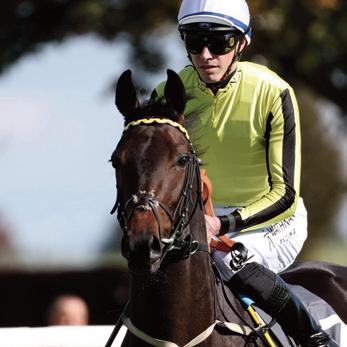
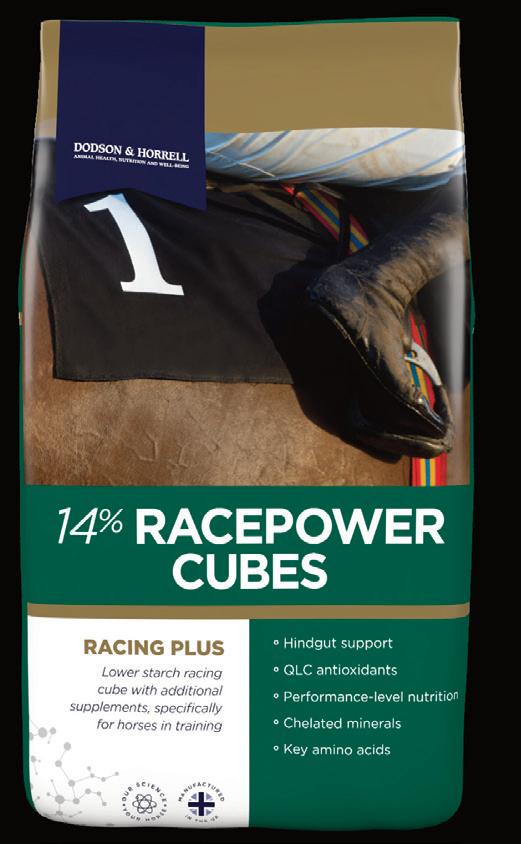
James Owen says it all
“I have been feeding D&H 14% Racepower Cubes since I started training. The horses look great on it and they eat well. The feed is especially great when I’m backing them up quick; it suits what I need. Both my flat and jump horses seem to thrive on the feed, it is a great all-round feed and my horses are really performing. D&H look after us well as a customer and we are proud to work alongside them.”
For feed advice, please call our helpline team on 01270 782 223 or email helplineenquiries@dodsonandhorrell.com www.dodsonandhorrell.com

AIMS and OBJECTIVES of the ETF:
AIMS andOBJECTIVES of theETF:
a) To represent theinterests of allmembertrainers’ associationsinEurope.
a) To represent the interests of all member trainers’ associations in Europe.
b) To liaise with politicaland administrative bodies on behalf of European trainers.
b) To liaise with political and administrative bodies on behalf of European trainers.
c) To exchange information between members for the benefit of European trainers.
c) To exchange information betweenmembers forthe benefitofEuropeantrainers.
d) To provide a network of contacts to assist each member to develop its policy and services to member trainers.
d) To provide anetwork of contacts to assist each member to developits policyand services to member trainers.

Chairmanship:
GuyHeymans (B elgium)
CHAIRMANSHIP: Gavin Hernon (France)
tel: +33 (0)7 87 16 02 48 email: contact@aedg.fr
Tel:+32(0)495389140
Email: heymans1@telenet.be

Vice Chairmanship:
NicolasClément(France)
Tel:+33(0)344572539
Fax:+33(0)344575885
Email:entraineurs.de.galop@wanadoo.fr
VICE CHAIRMANSHIP: Paul Johnson (United Kingdom)
tel: +44 (0) 1488 71719 email: p.johnson@racehorsetrainers.org
Mrs Živa Prunk
Tel: +38640669918
Email: ziva.prunk@gmail.com

ITALY
Joseph Vana
Tel:+42(0)602429629
Ottavio Di Paolo
Email: horova@velka-chuchle.cz
tel: +39 328 355 95 81 email: ottaviodipaolo@gmail.com
Aggeliki Amitsis
Tel:302299081332+
Email: angieamitsis@yahoo.com

SWEDEN
GERMANY
Jessica Long
ErikaMäder
email: jplong@live.se
Tel:+49(0)2151594911
Fax:+49(0)2151590542
Email: trainer-und-jockeys@netcologne.de

Vice Chairmanship:
Christianvon derRecke (Germany)
Tel:+49(02254)845314
Fax:+49(02254)845315
VICE CHAIRMANSHIP: Christian von der Recke (Germany)
Email: recke@t-online.de
tel: +49 171 542 5050 email: recke@t-online.de
HUNGARY
Mr Botond Kovács
Email: botond.kovacs@kincsempark.hu

ITALY
BELGIUM
Agostino Affe
Email: affegaloppo@gmail.com
tel: +32 (0) 495389140 email: heymans1@telenet.be
Geert van Kempen
Mobile: +31 (0)6 204 02 830
Email: renstalvankempen@hotmail.com

GERMANY
Erika Mäder
Are Hyldmo
Mobile: +47 984 16 712
tel: +49 (0) 2151594911
Email: arehyldmo@hotmail.com
www.trainersfederation.eu

Treasureship:
MichaelGrassick(Ireland)
TREASURERSHIP:
Tel:+353(0)45522981
Mobile:+353(0)872588770
Fax:+353(0)45522982
Feidhlim Cunningham (Ireland)
Email:office@irta.ie
tel: +353 (0) 45522981
email: office@irta.ie
Rupert Arnold
Tel:+44(0)148871719
Fax:+44(0)148873005
Email: r.arnold@racehorsetrainers.org

RUSSIA
Olga Polushkina
NETHERLANDS
Email:p120186@yandex.ru
Birkje Hoorens Van Heyningen
tel: +31 (0) 250 930 016 email: birkjehvh@gmail.com
Jaroslav Brecka
Email: jaroslav.brecka@gmail.com

NORWAY
Tom Lühnenschloss
SWEDEN CarolineMalmborg
mobile: +47 (0) 46445345
Email: caroline@stallmalmborg.se
email: lynet3108@yahoo.no



Grosser Preis von Baden, Gr.1, Baden-Baden
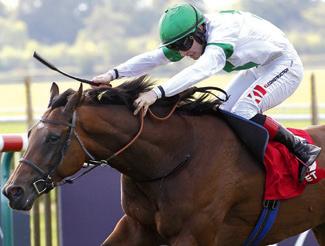


Spring Breeze Up Sale: 30th May 2025
HIT August Online-Sale: 15th August 2025
Premier Yearling Sale: 5th September 2025
October Mixed Sales: 17th and 18th October 2025



The Cavalor Trainer of the Quarter award has been won by Niels Petersen. Petersen and his team will receive a Cavalor voucher of €1,000 for Cavalor supplements and care products as well as a consultation with one of their senior product specialists.
WORDS: LISSA OLIVER PHOTOGRAPHY: EMIRATES RACING AUTHORITY
We are delighted this quarter to award our prize to Norwegian-based trainer Niels Peterson, in recognition of the success in Dubai of his threeyear-old filly Queen Azteca. Given that even in late-March at the time of our interview it was 7°C in Norway, and 31°C in Dubai, Peterson faces a far greater challenge when sending horses over to the carnival than most international handlers.
“We are in the wrong place, really,” Peterson says of the Norwegian racing scene, “we are so far north, wherever we go to race, even in Norway, it’s a long way to travel.”
For many years he has been sending a select group of horses to Dubai to take advantage of the winter sun on their backs. “We take horses who have shown maximum ability in Norway, but in Dubai against better horses they are always struggling. We do
spend the winter trying to win, but mostly it is so that we can take them back home to clean up, because the winter at home is so bad and they have the advantage. I did that a lot, so now I’m thinking it’s time to do something different.
“We’ve taken horses to Bahrain, Saudi, Qatar and Dubai, but in October it gets cold at home, we get frost in November and then we can’t train properly. So I’ve fetched the horses early, we arrived in Dubai 1st November and I’m here as a local now.”
The earlier arrival has certainly benefited Queen Azteca, who was a chance buy for Peterson on behalf of her owner. He had gone to Tattersalls to buy a colt with Dubai in mind, secured a “nice, but a little later-maturing colt than we’d hoped” and still had a bit of the budget left. “So I looked for a nice filly for the owner and saw Queen Azteca. I liked her a lot, she was a big imposing filly and with her Dirt pedigree I thought she might suit

Dubai and be able to compete. Of course we had a plan, but to succeed with it is not always the case.”
The 30,000gns/€36,000 filly tried a mile for the first time at Jagersro and won comfortably, before wintering in Dubai. Runner-up in December on her debut there, she has since won the Cocoa Beach Stakes en route to the Gr.3 UAE Oaks, the
most prestigious win of Peterson’s already impressive career.
The 13-times Norsk Champion Trainer has sent out 15 Scandinavian Derby winners, but his goal is to a prominent name on the bigger stage. “I want my horses to go out and win big races. I’ve done everything I can back home, and I need a challenge. I want to make a real impact,” he told the press after the UAE Oaks and there is every chance that Queen Azteca is the horse to realise that dream a lot sooner than he might have expected.
At time of writing she is due to line-up in the Gr.2 UAE Derby and she has already received an invitation to the Gr.1 Kentucky Oaks, which is under serious consideration.
“We’ll see after the race,” says Peterson.
He acknowledges a good team in support of higher ambitions and, not surprisingly, his staff like to travel and go away to a better climate during the winter. “We have been travelling a lot for a long time now and have good riders, including my sister who is my assistant. It’s a good, solid team, they know how things work and how I like to do things, so I’m privileged in that sense.”




CAVALOR FREEBUTE & CAVALOR LACTATEC
Cavalor FreeBute supports muscles and joints for improved mobility. FreeBute will offer relief from discomfort in the recovery process after heavy effort.
Cavalor LactaTec is a complete supplement that supports muscle activity, stimulates muscle recovery and prevents stiffness, damage, and fatigue in a variety of ways.
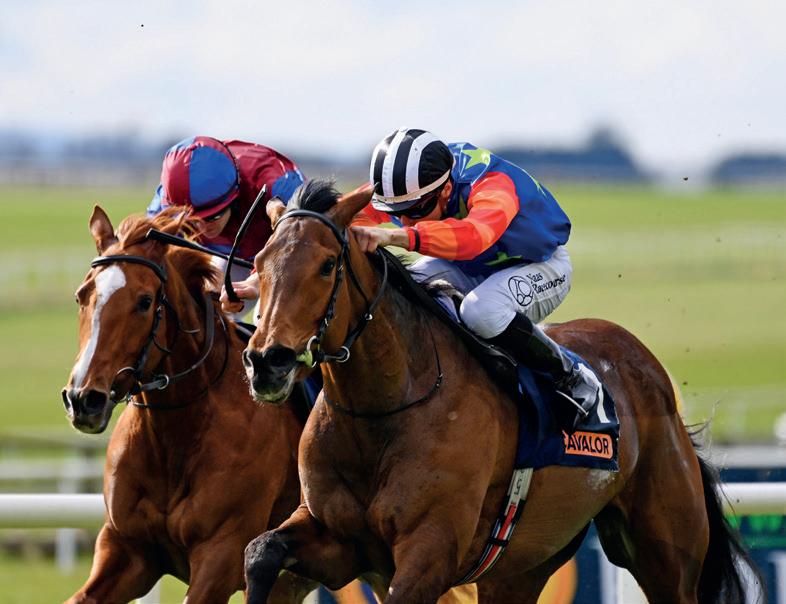
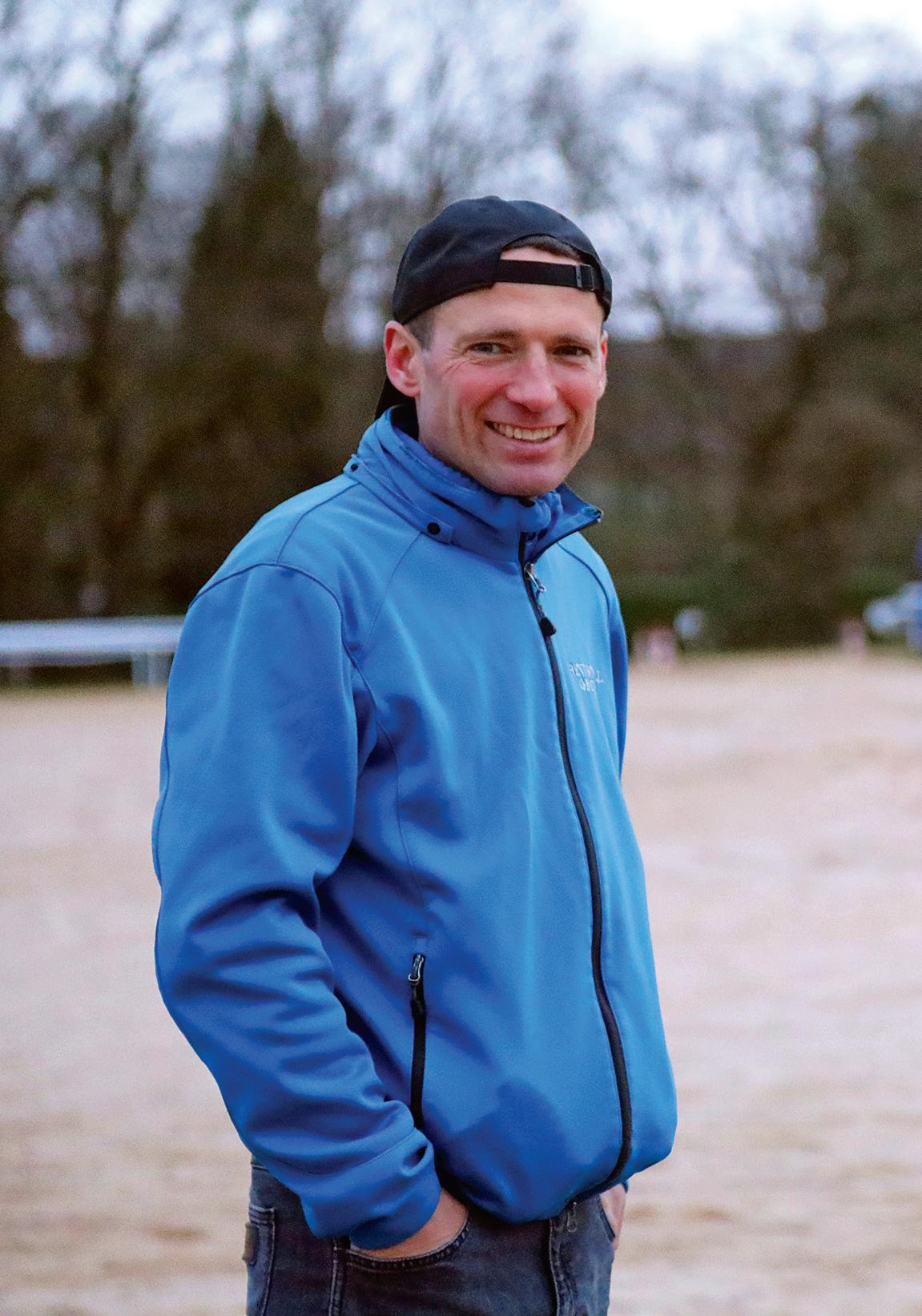

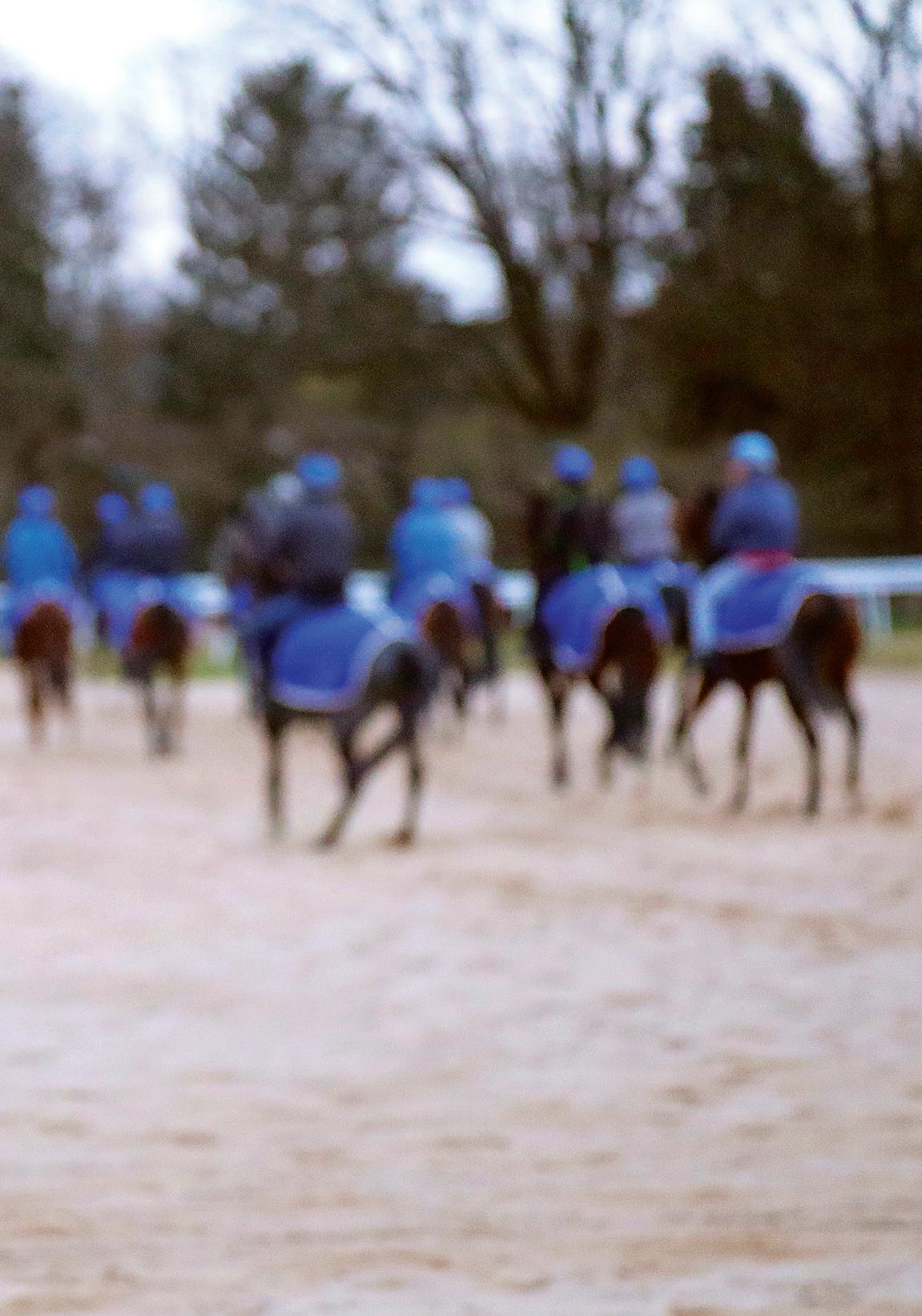
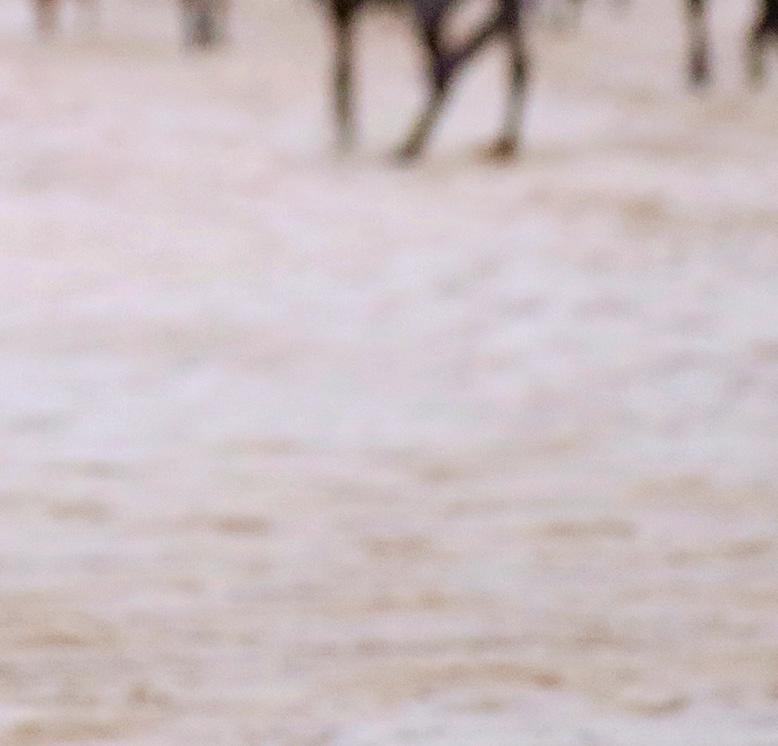
When Grewe retired from race-riding and took up training in 2014, it wasn’t exactly the hottest news in German racing. He had been a middle-of-the-road jockey, never reaching lofty heights. But as a trainer, he has made it to the top of his profession.
Eleven years later and February 2025 – it’s six fifteen in the morning and it’s pitch black. The first lot is out already, and Grewe is in the saddle.
The majority of German racehorses are trained on a racecourse. Nearly every main track – think Düsseldorf, Cologne, Hannover, Iffezheim or Hoppegarten – doubles as a training centre. A chosen few have the luxury of private premises, but Grewe shares Cologne racecourse with three other major trainers, and roughly 300 horses.
Shared facilities consist of a trotting ring, and two sand gallops, sand, not artificial. His roughly 78 boxes are split into four stable blocks, of various size and quality. The largest block of roughly 40 boxes was actually a grandstand in bygone times.
Tighter animal welfare measures saw a row of windows being installed, with one row of horses glancing onto the stable alley, the other side enjoying a room with a view to both sides.
Every box is filled generously with straw, something increasingly rare in domestic racing yards. “The year I used sawdust was my worst ever, and I am convinced there is a correlation. Horses feel comfy on straw so there you go.” Three horse-walkers grace the place, one is called “the terrace” as it has no roof. And basically, that’s it. The height of technical racehorse training.
A covered trotting ring is in the distance, but “that’s not mine. That’s Peter’s [Schiergen, of Danedream fame]” says Grewe.


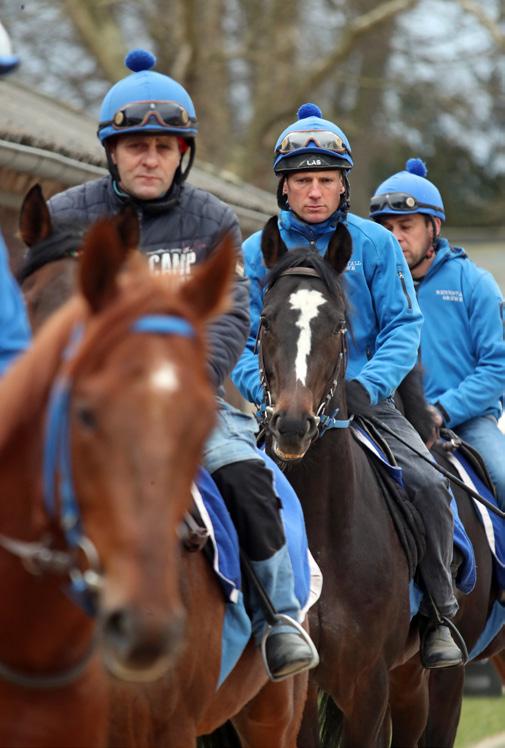


THE MOST IMPORTANT THING IS ROUTINE. ROUTINE. ONCE THE HORSE FIGURES OUT WHAT HE HAS TO DO HE CAN RELAX IN THAT ROUTINE, AND HE FEELS SECURE.”
No saltbox, treadmill, solarium, let alone a pool. Scales somewhere, “but I hardly use them.” He concedes that horses may have a perfect racing weight, “but I need to see that. If a trainer can’t spot it, well….”
There is a simplicity in the whole setup, mirrored in the trainer’s beliefs. “Really, you can train a horse anywhere. HansWalter Hiller [who was Champion Trainer in 1999, and whose yard he was attached to as a jockey] trained on a strip next to a motorway, so clearly you don’t need much.”
Grewe’s principles when it comes to readying horses are cut from the same cloth. “The most important thing is routine. Routine. Once the horse figures out what he has to do he can relax in that routine, and he feels secure. I don’t like fresh horses. On average my horses are out three hours a day, it comes down to three things: routine, the feeding, and proper medical care.”
The yard has a couple of paddocks now too, and some horses are turned out in the afternoon. Roughly 23 people work for Grewe, with active and retired jockeys playing a vital part in the morning. Thore Hammer-Hansen is one of them.
Having returned to his roots in 2024, the jockey, with a retainer from Cologne racecourse president Eckard Sauren, wasted little time to take German racing by storm. He combined with Grewe (but not Sauren) to win the German Derby on Palladium (more of him later); the end of the year saw him crowned Champion jockey as well.

Fresh from a trip to Riyadh, where he guided the Marian-Falk Weißmeier-trained, Straight to a respectable 5th place at Gp.2 level, Hammer-Hansen feels slightly under the weather but is full of praise of Grewe, who “is a team-player and a very good trainer”.
Much needed positives after other work-riders declare that the trainer’s most remarkable trait is “his bad mood before the first lot”. While such statements are (hopefully) tongue-in-cheek, the relaxed atmosphere with a lot of banter is duly noted; Grewe is usually riding three lots himself and doesn’t shy away from the general chores.
Grewe doesn’t miss a beat: while preparing his horse and answering cumbersome questions at the same time, his eye is all over the place and every idleness is (duly) spotted.
It all started inconspicuously. Born in 1982, his parents had a couple of horses, so the foundations were laid early on. “I had to decide whether I wanted to be a professional table tennis player or pursue horses. I felt there was more money in the latter.” The good, the bad and the ugly, money is a recurring theme for Grewe.
It is what drives him, because, quite plainly, “I want to be rich”. Grewe retired from race-riding with a handful of Black-Type wins to his name. With the help of then-business partner Christoph

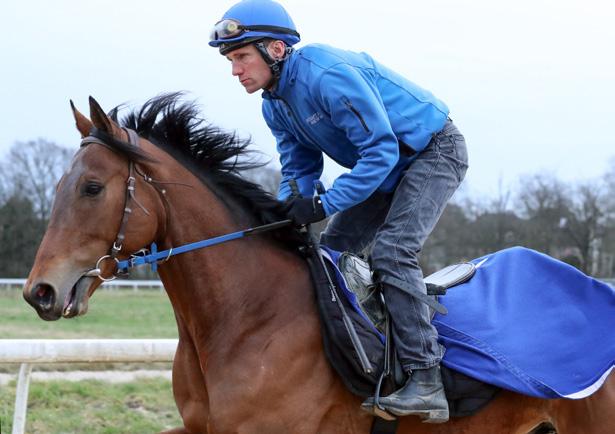
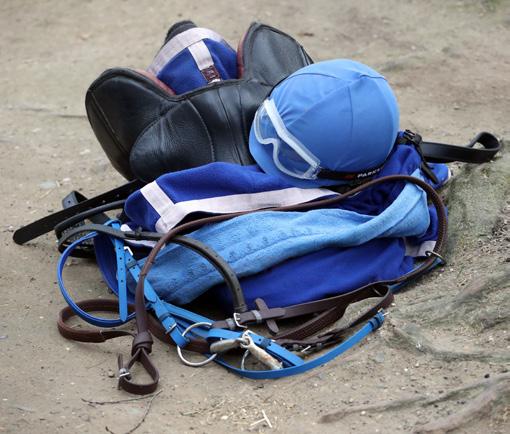
Holschbach he set up a limited company to train racehorses on August 1st 2014, with a mere 12 (bad) horses; his first runner, just 20 days later, was a winner.
They kept coming. It was quantity over quality at first, “I had to get my name out.” In his prime Grewe had roughly 120 horses. The first Listed winner came in 2017, the first Group winner, Taraja in a Hamburg Gp.3, in May 2018. Khan, who eventually switched to hurdles, provided the breakthrough at the highest level when taking the Großer Preis von Europa in September 2018.
The hardy and consistent Rubaiyat flew the flag for four seasons; unbeaten as a 2yo in 2019, he won at least one Group race in every season. While he missed out on valuable Gp.1 glory, his trainers list of high-class winners started growing: the German Derby (Gp.1) twice (Sisfahan and Palladium), the German Oaks (Muskoka), the Großer Preis von Europa (Donjah and Khan) and The Großer Preis von Bayern (Sunny Queen and Assistent).
When asked if he has a preference for fillies or colts, the answer is an emphatic “no”. While the German Derby was the highlight of 2024 (next the birth of his son Mikk), the yard won eight more Group races. Having been crowned Champion Trainer in 2019 and 2020, Grewe’s focus started to shift.




He still likes to travel, but now it’s for Black-Type and not for claimers. His intimate knowledge of the French racing system means that country still is his preferred hunting ground, along with Italy, where he has won 10 Group-races to date if our counting hasn’t let us down. But gone are the days when for every domestic runner he had two abroad.
Grewe no longer has that number of horses, nor does he want to. “Horse numbers are down [in Germany] because training is just too expensive,” he admits. “Look, I am very open about this but every month my owners part with €3000 per horse. Who can afford that? Look at the prize money and do the maths. Syndicates are the solution, no two ways about it.”
It helps that Grewe has syndicated horses in his yard. While Germany may not be ready for micro share syndicates (even though Hammer-Hansen evidently thinks so), it was certainly ready for a syndicate called Liberty Racing, founded in 2020 by shrewd entrepreneur Lars-Wilhelm Baumgarten and partner Nadine Siepmann. Selling 25 shares at €25.000 apiece (for a bundle of three hand-picked horses) may have taken some persuasion at first, but success came almost instantly; now there is a waiting list.
EVERY MONTH MY OWNERS PART WITH €3000 PER HORSE. WHO CAN AFFORD THAT? LOOK AT THE PRIZE MONEY AND DO THE MATHS. SYNDICATES ARE THE SOLUTION, NO TWO WAYS ABOUT IT.”






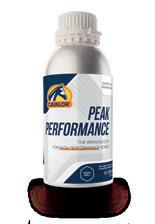
“The horses seem to find the products palatable and since using the brand from the start of 2024, we had a record-breaking season.
After kicking off 2025 well and adding a first international winner to the CV we couldn’t recommend Cavalor’s products enough and will continue to use them.”
Tom Clover Racehorse trainer


Buying (and owning) a Group 1 winner in every year since its foundation, Liberty Racing has now won two German Derby’s in a row. Fantastic Moon was their flagbearer in 2023 when taking the blue ribbon for trainer Sarah Steinberg, and Palladium was the winner of last year’s race on the first Sunday in July – the traditional date for the German Derby.
Palladium was trained by Grewe, who still marvels in the wonders of it all. After spending considerable time telling me that he doesn’t ‘do’ emotions, doesn’t have a favourite horse and doesn’t get attached to horses, his eyes did light up when recalling that day. “Look, nothing came easy to Palladium and he didn’t excite us at home.” He ran okay as a 2yo [no win] and proceeded to win a small race on his fourth start, before finishing a lacklustre 4th in Germany’s main Derby trial, the Union Rennen.
“I am still not sure what wonders combined in Hamburg and how we managed to win there. It was great, especially with my girlfriend being heavily pregnant with our first child [son Mikk was born later that month].”
So you had emotions that day? “Maybe for five minutes,” he smiles. Mikk naturally changed a lot. “Everything changed with him, and I wonder what I did all day before he came. We came home from a holiday the other day, so many suitcases and his buggy. I thought - clearly we need a bigger car! I don’t think it changed the way I train, but I do feel more pressure to succeed, to earn money as I want him to have every chance in life.” The money, right? No emotions, right?



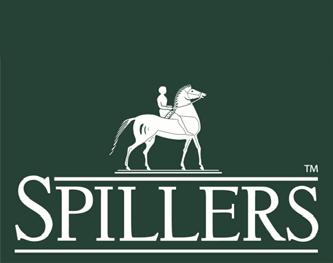


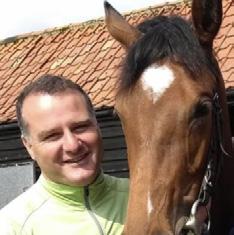

“When
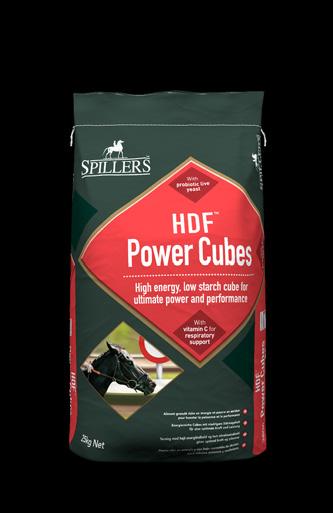



- Dylan Cunha

Palladium of course went on to write his own chapter in Grewe’s (and Liberty Racing’s) vita when selling for €1.4 million at last year’s Arc Sale. This made him the highest-priced horse ever to go hurdling and joined Nicky Henderson’s famed Lambourn stable. He was a winner on his first start over the smaller obstacles at Huntingdon in late January. But, come this summer, an ambitious flat campaign may beckon too.
It’s not that Grewe and Liberty Racing are resting on their laurels. The latter naturally features prominently on Grewe’s owners list, with five 3yo’s for three different syndicates. Among those is a strapping son of Camelot, purchased for €180,000 at the 2023 BBAG Sales and from Röttgen Studs fabled A-damline. Called Amico, and stabled in the same block that housed Assistent and Muskoka, Grewe asks, “do you want to see this year’s Derby winner?” Well that is some introduction. History in the shape of three Derby winners in a row would beckon for Liberty Racing, and while that’s not unprecedented in the annals of the German Derby, it certainly hasn’t been done with shared ownership.
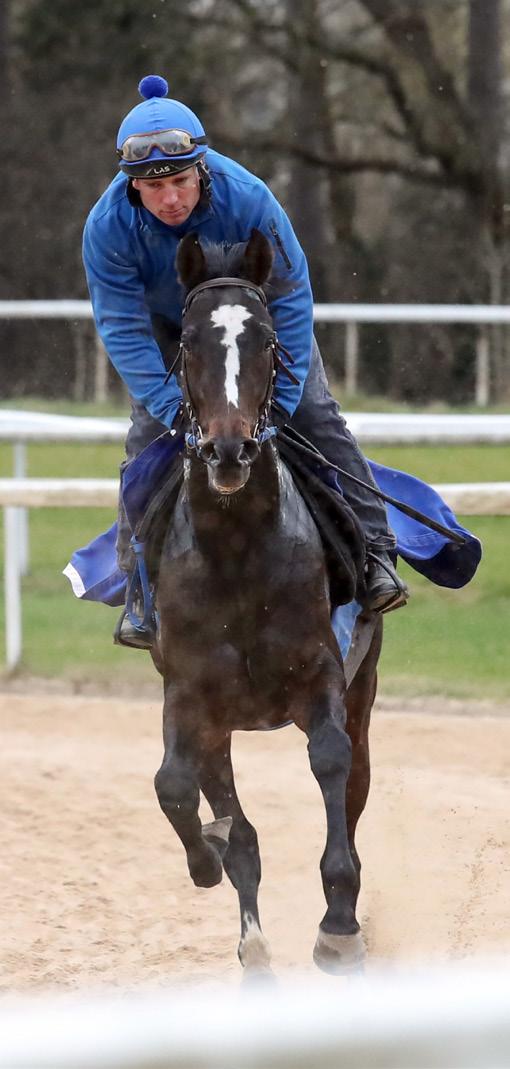



Nowadays Grewe trains roughly 80 horses and runs a tight ship. “It’s too expensive to have a bad horse in training and I am quick to call a spade a spade. Not everyone likes that.”
He always has an eye on the strike-rate and had nearly 30% winners to runners in 2024. His horses are brought along a little slower nowadays, but 2yo racing with its lucrative sales races is vital to his business. “Nothing wrong with training 2 year olds, in fact they need it and studies clearly show the benefit of starting early. I am no fan of pre-training though.”
He calls a spade a spade when it comes to German racing too, where low prize money, “ineffective” leadership and rival racecourses are his main complaints.
He misses the sense and obligations for the wider good of racing from the latter group in particular, but feels the tide is ever so slowly turning for the better.
“They [the racecourses] need to work together, and with the owners, to create a more potent environment. My impression is they slowly understand. I do speak my mind, and people listen.”
Syndicates, as mentioned, are Grewe’s idea of accelerating fortunes in German racing and he sees responsibilities with trainers, himself included. “I know I need to get much better at communicating with owners, and yes, no doubt trainers could –and should – set up racing clubs and syndicates.”
Grewe remains as hungry as ever, if not hungrier. “I have won nearly everything worth winning in Germany, but there is loads left abroad.” Eckhard Sauren’s horse, Penalty – a rare son of Frankel on these shores, is pencilled in for European Gp.1 mile races.
Constant rumours suggest that Grewe is only biding his time in Germany, but more imminently he plans to take the helm of his training company buying out his (new) business partners in 2025. New chapters will be written, and the best is surely yet to come.
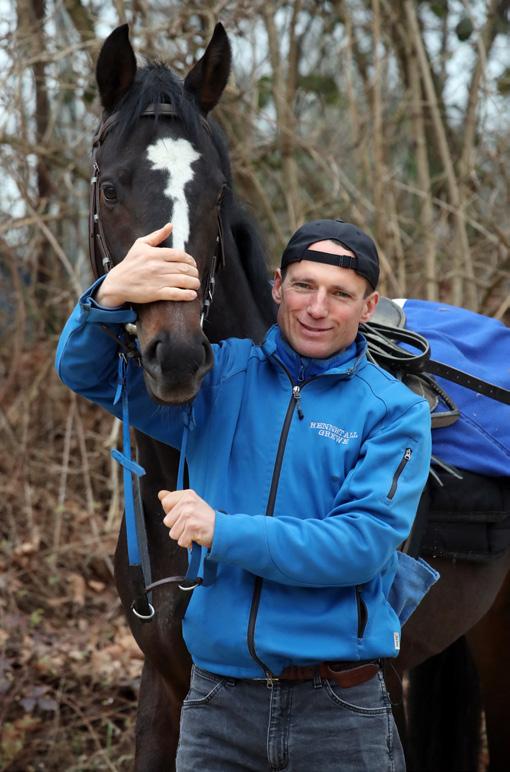






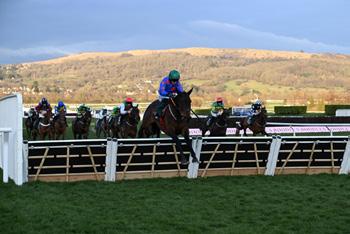



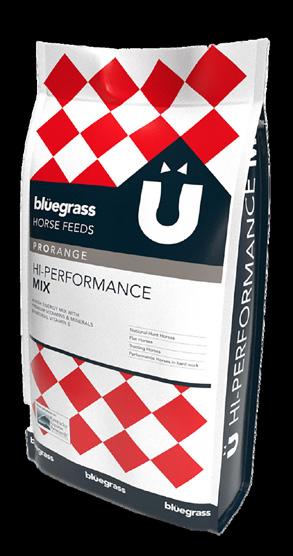




WHAT
WHY

Chelated minerals, commonly known as ‘organic minerals’ have been around since the 1980s and were quickly adopted into feeds for production animals as benefits relating to health, production and physical gains became apparent through a growing body of research and proven results on farms.
Early in the 1990s organic minerals appeared in horse feeds with most brands adopting a partial replacement concept, using a low inclusion of organic minerals alongside inorganic minerals.
By early 2000 researchers began querying if diets could be reliant fully on organic minerals, working on the basis that ‘nature identical’ minerals would require lower feeding rates and could still deliver the same level of performance whilst also benefitting the environment.
Fast forward to today and some feed companies, including equine, are now operating with organic minerals only. Is this the future of mineral nutrition for racehorses?
What is an organic mineral and where do minerals come from?
Most mineral additives come from inorganic compounds such as oxides, sulphates, carbonates and phosphates. Interactions between inorganic minerals combined with lower levels of digestibility means inclusion levels are often high in feeds to ensure dietary needs are met. Variability in forage is also a factor in why mineral levels often run well above recommended intakes as well as catering for the ‘more is better’ mindset in the marketplace.
Over-formulating and over feeding of mineralised feeds or supplements does not get better results. In fact, quite the opposite. There is a fine balance between minerals, which actively compete with each other for absorption in the body. Then there is the question of energy efficiency as processing excessive and unnecessary nutrients requires energy within the body.
Organic minerals offer an interesting alternative, having a greater bioavailability, not competing for the same absorption sites, reducing effects of interactions, and wastage of nutrients excreted into droppings. The excretion of minerals was a key driver behind the increased use of organics in the agri sector as the impact of farming on the environment continues to be closely scrutinised. The benefits of using organic minerals aren’t just about animal health and performance, they are also about environmental responsibility.
Organic minerals are trace elements, also known as micro minerals, that are complexed or otherwise associated with an organic molecule. Most commonly referred to as chelated minerals. The term organic mineral is used quite
broadly, and there are several different types of organic minerals used in animal feeds. Copper, zinc, manganese and iron are available in chelated form, whilst selenium is available in organic yeast.
Creating an organic mineral is a process of reacting the inorganic mineral salt with a suitable non-metal entity known as a ligand. Ligands are mostly single amino-acids or small peptides (chains of amino acids). Once bonded the mineral becomes part of a biologically stable, and more available structure.
The key word is stability as this influences how that mineral behaves when fed, as the digestive system presents several challenges, including varying levels of pH. As a general rule, minerals organically bound with peptides (amino acid chains), that have a greater potential to form bonds, create more stable organic minerals than those based on a single amino acid.
Chelation of minerals is the process used for zinc, copper, iron and manganese. Selenium is a little different, belonging to a different group of elements, that are difficult to chelate in the same manner. For that reason, organic selenium is also derived from selenised yeast, a form commonly used in equine feeds and for which equine specific research is available.
Mineral stability and resilience to some of the challenges of the digestive tract is one part of the success story behind chelated organic minerals. Binding with amino acids also means that organic minerals utilise different pathways for absorption compared to inorganic minerals. This improves absorption and reduces competition with other minerals.
As the ‘what goes in’ with organic minerals is more stable and is easily absorbed there is less needed to meet requirements and still provide benefits to health and performance. On a feed tag or supplement label the number might look lower but the efficacy is greater.
When reviewing your feed choices and looking at all the numbers it is worth asking the question as to what form of mineral is being used, not just the milligrams per kilogram value in the brochure. The mineral source is not always declared on a website or datasheet but by law is noted on the feed label in the additive section, so it is worth walking out to the feed room and taking a look.


The whole concept of using chelated minerals is to “do more with less”. That is the challenge as Steve Elliott, Global Vice President of Companion Animal at Alltech describes it, and what Alltech have set out to prove is possible.
There are multiple papers on the benefits and efficacy of organic minerals in farm animals. There is however much less equine specific research available. That does not mean organic minerals aren’t good for horses, or don’t work as well, it’s just that horses aren’t generally for eating (which influences spend on research) and they are harder to research.
What research likes is specific measurables that can easily be linked back to a change in diet, such as live weight gain or milk production. As we don’t fatten horses to eat, or use them for milk, the measurables in horses are harder to work with. Increased performance has too many other variables involved, such as ground conditions, rider etc. As such, we have to work with a smaller pool of data on horses specifically and combine that knowledge with other species with similar digestive systems.
Inclusion of organic chelates in animal feeds has been a common practice for the last 40 plus years. Typical inclusion levels are 30-40% of the total mineral being provided as organic, with the remainder as inorganic. At that level there is plenty of research to show a positive effect. Inclusion levels much below that rate of inclusion are questionable. Just because a feed or supplement says ‘contains chelated minerals’ does not guarantee they are included at a meaningful or effective level.
More recently the use of organics only has been the area of interest for research. This is an area Alltech have been heavily involved in, and at present have conducted 253 trials, resulting in 131 peer-reviewed papers.
One of the key questions when considering organics is how much less can be fed versus traditional inorganic minerals in the daily diet. Just how much better are they? From other species the answer is a whole lot less, with research into poultry and swine showing less than half the amount is needed compared to inorganics mineral sources.
Whilst there are no feed tables specifically for horses referencing organic mineral and inorganic mineral requirements there is enough evidence to give confidence that organic minerals could be, and already are being, used as the sole micro mineral source for horses.
Horse feeds are typically generously fortified or over-fortified against requirements. For horses in training where feed intake is easily 4 times that of a sport horse the daily intake of copper, zinc, manganese and selenium is often significantly above requirement. For example, horses in training are often consuming copper at 250-300% of requirement.
With the source of copper being either dominantly, or entirely inorganic, the level given is not necessarily, in fact it is quite unlikely, to be twice or three times as good as feeding the required level. High intakes will result in greater losses into faeces, having little benefit to the horse, and having a negative impact on the environment.


From ultra low to traditional levels
A range of options to suit different degrees of gastric sensitivity
All designed to fuel performance and recovery
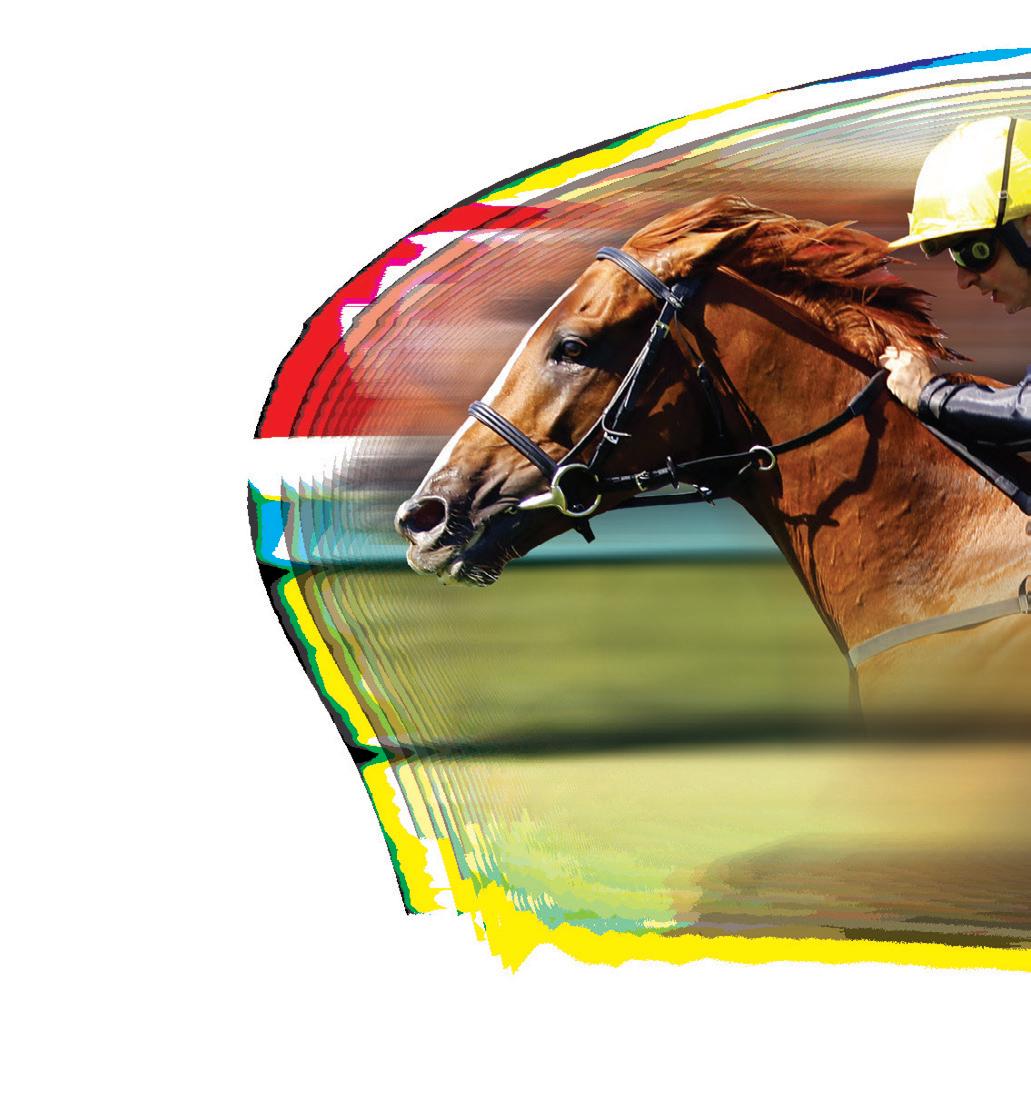




There are equine feed companies already working with organics only, including Guabi Horse Feeds in Brazil and McCauleys feeds in the USA. Working closer to daily requirements, rather than high dosing, and using organic minerals only, these companies are proving organics are a real option for performance and racing horses just as much as they are for other animals.
Minerals such as selenium, manganese, iron, copper and zinc are added to feeds and provided in supplements for two reasons, to address the shortfall and variation in mineral content from forages, and to provide levels above basic requirements with the aim of enhancing performance or using nutrition as a therapeutic tool.
Organic mineral research orientates around improved uptake and efficacy within the body, trying to improve as an aspect of performance related to that mineral. Each mineral has its own role in animal health.
Selenium has many roles in the body. Primarily, its role in regulation of the antioxidant system. Following the uptake of selenium by the body, selenium becomes incorporated into numerous selenium-dependent enzymes and proteins, which play many major biological roles.
Selenium is also a mineral which is regulated, having a maximum permitted level in the daily diet for horses, as whilst being beneficial selenium can also be toxic. When looking at feeding horses in training additional selenium should only be given if feed and forage levels have been assessed and factored into the daily intake.
Major biological roles of selenium-containing proteins
Iodothyronine deiodinases Thyroid metabolism
Glutathione peroxidases, Thioredoxin reductase, Selenoprotein P, Selenoprotein W
Antioxidant Properties
Sperm capsule selenoprotein Sperm Structure

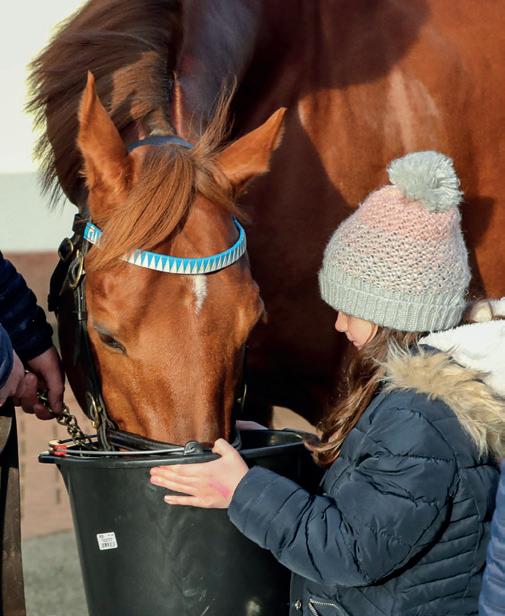
Research into organic selenium benefits for poultry, swine and cattle includes:
• Improved disease resistance
• Improved antioxidant defence
• Improved retention of selenium in muscle and tissue
• Improved fertility
• Improved growth rates
• Improved selenium content in milk and colostrum
Equine specific research has also shown the same effect on mare’s milk and colostrum.
Each of these minerals has a role to play in health and performance. When researching efficacy for organic minerals these are often grouped in research as the objective is to determine if replacing this group in part or in full improves the finished feed .
Copper is one of the most important micro minerals for horses. It has many key roles including, mobilising iron stores, correct functioning of enzymes, maintaining elastic tissues, proper skeletal growth and development, and its role as an antioxidant.
Zinc has a broad reach in the body, being an enzyme activator or co-factor, as well as being part of over 200 proteins. Zinc is required for normal functioning of insulin and for normal glucose utilisation. It is also important for a functioning immune system, healing of wounds and neurological functions.
Manganese is involved in bone formation, fatty acid synthesis and amino acid metabolism. Unlike copper and zinc that are naturally low in forages, the level of manganese can be sufficient to meet daily requirements. Variability in levels found within forage is high and supplementation is common practice to cater for this risk.
Iron is part of hemoglobin, the component of red blood cells that allows oxygen to be carried to tissues. Iron deficiency is rare as the horse has a high ability to conserve iron. Approximately 67% of the body’s iron is stored in red blood cells in the form of hemoglobin.

Care for your horse from the inside out with the digestive health benefits of NUTRI-GARD
Nutri-Gard is a scientifically advanced supplement to support stomach and hindgut health. Containing 12 active ingredients, including prebiotics, postbiotics, and B-vitamins, it is designed to support the entire digestive tract.
Postbiotics are new, innovative additive that have been proven to improve the robustness of gut microbiome in stress-challenged horses; postbiotics help to maintain healthy gut function even when horses are exposed to high stress environments.
Also features:
• Prebiotics
• B-vitamins
• Pectin
• L-Threonine
• DL-Methionine
• Oat fibre
SCAN QR CODE TO FIND OUT MORE
UK: Adam Johnson T: +44 7860 771063
Ire: Lorraine Fradl T: +353 87 2575398
Email: info@foranequine.com
www.foranequine.com
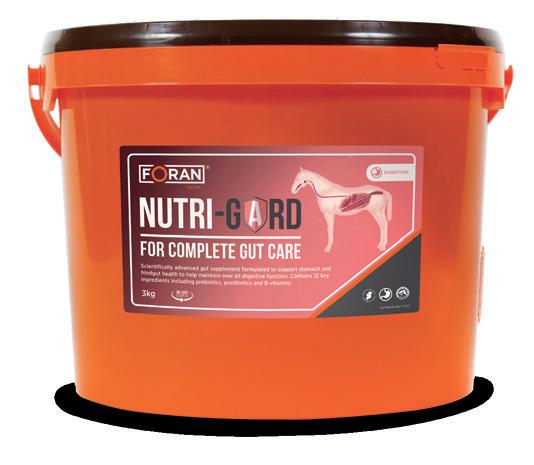
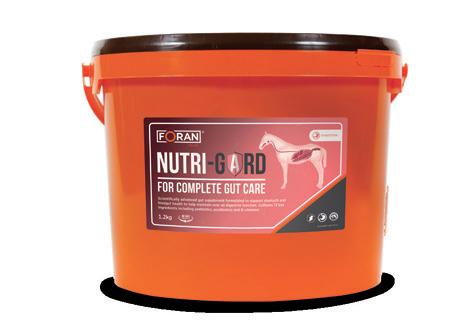

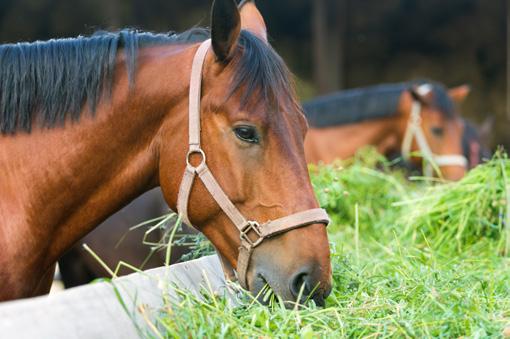
Red blood cells are formed within the body and remain in circulation for around 150 days. When they die, the iron they contain is recycled and used to build new red blood cells. As such, there is rarely a time where iron is lost from the body. The exceptions to that being horses with high worm burdens, horses with gastric ulcers that cause blood loss, and horses suffering from EIPH (Exercise Induced Pulmonary Haemorrhage). Iron is found in good quantities in feed ingredients and forages, sufficient in most cases to meet requirements. Iron is often added to feeds at low levels to ‘top-up’ naturally occurring iron.
Research from other species including farm, aquatic and dog show, organic minerals when fed in combinations, have benefits including:
• Improved bone mineral content
• Increased growth rates and weight gains
• Improved milk and colostrum mineral profile
• Increased total antioxidant capacity
• Improved gut morphology
• Improved availability in the presence of antagonists
In horses, a study looking at the influence of oxalates, a substance that reduces calcium uptake, researchers were able to demonstrate that organic minerals were better able to prevent bone resorption compared to inorganic minerals. Diets contained organic copper, zinc, manganese and selenium.
One of the achievements of organic minerals is reduced mineral leaching, an important consideration for farm animals. Alltech have investigated this in horses also, looking at the effect of their organic minerals (Bioplex) on fecal mineral excretion and fecal mineral leaching potential.
In this research horses were fed one of three diets, a standard diet with no mineral supplementation (CON) or diets containing either inorganic (ING) or organic added minerals (ORG). In both diets with added minerals there were increased mineral levels found in droppings. The diets were supplemented to be higher than requirements (120-380% NRC), which replicates what is commonly found in industry feeds. The organic zinc and copper levels found in the manure were lower than inorganic levels, demonstrating better uptake in the body.
Both supplemented diets resulted in increased levels of phosphorus leaching from the manure, although the organic mineral diet resulted in numerically lower levels of phosphorus leaching than inorganic. The same pattern was seen for sulphur.
Manure from all diets was then used to grow tall fescue grass to determine if the diet influenced grass growth. Grass was grown using the manure from the horses fed the three different diets, with water on its own (WAT), and a liquid nutrient solution (NUT).
Grass grown with manure from horses fed diets supplemented with organic minerals (ORG) had 16% greater biomass than grass grown with manure from diets supplemented with inorganic minerals (ING).
Plant Biomass – Organic matter derived from plants, containing stored chemical energy from the sun, generated through photosynthesis.
Whilst the majority of research is from other species the science is sound, and the benefits found are equally relevant for horses in training. The majority of feed companies already use chelated minerals in their feeds to provide a proportion of minerals in this format, albeit at varying levels. What is less common, at least in equine, is the total replacement of trace elements with organic formats only, but it is being done and done successfully.
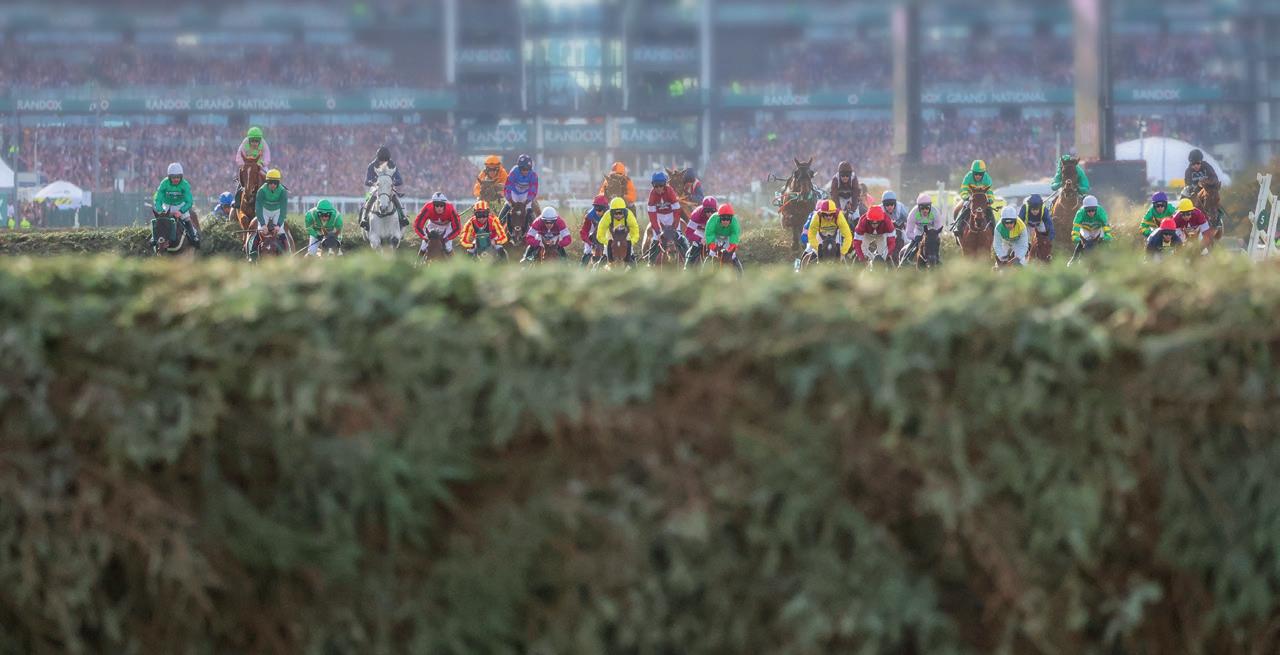





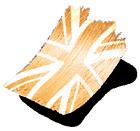




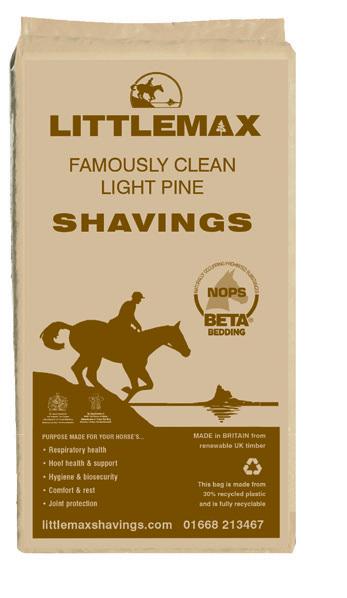



Horses stay in their stables for different durations based on their care, training regime, health status, and seasonal changes. Ensuring your horse’s comfort and well-being in their stable is crucial, as inadequately designed facilities can lead to injuries, health issues, and fire hazards. With horse welfare under the spotlight with the focus being on the keeping and protection of animals under the European Union review, there is no better time to look at how we can maximise the stable environment.
Ammonia is a serious irritant that can harm the respiratory tract and cause breathing difficulties. Lower concentrations of ammonia can irritate a horse’s upper respiratory tract, while higher levels may skip this area and lead to inflammation and fluid buildup in the lower lungs. Ammonia triggers inflammation, which increases mucus production and disrupts the function of cilia in the respiratory tract, negatively impacting the immune response. When cilia malfunction, dust and dirt can accumulate in a horse’s lungs, causing health issues and decreased performance.
Monitoring ammonia levels in stables is crucial, as levels should ideally be below 10 ppm, and an odour of ammonia typically indicates levels are dangerously elevated at 20-30 ppm, which can harm horses’ health.



Ammonia can be managed effectively through proper stable management in addition to ensuring good ventilation. To improve the absorption of urine and faeces and lower ammonia levels, add extra dry bedding in the areas of the stable where the horse often soils. A recent study has shown that even with regular cleaning, elevated ammonia levels can remain near the floors. Using a combination of highly absorbent bedding materials and an ammonia-neutralising product can help lower ammonia levels.
Bedding made of pine shavings is excellent at controlling the ammonia levels. The pine oil in the shavings tends to inhibit the bacteria that converts urine into ammonia, thus keeping the ammonia levels low. In addition, bedding that has strong shavings provide cushioning rather than compacting together.
The type of surface on which a horse stands for extended periods can significantly influence its comfort, movement quality, and overall soundness. Consequently, it is essential to invest time and resources in choosing the appropriate flooring for your stables. Moreover, selecting the right flooring can enhance operational efficiency and lower costs associated with hygiene management and stable cleaning. Finally, conduct routine inspections of your flooring to guarantee safety and avert potential hazards.
There are two main categories of flooring: permeable and impermeable.
Permeable or porous stable flooring can consist of either conventional packed clay or a specially engineered geotextile membrane. In the case of the latter, the membrane layers act as a barrier between the horse and bedding and the underlying base material.
In both scenarios, it is essential to install pervious materials on a foundation of well-graded crushed and compacted stone. There are disadvantages associated with the use of pervious flooring. While packed clay is softer than cement or asphalt, it is prone to becoming uneven when exposed to additional moisture, particularly if deep bedding is not utilised.
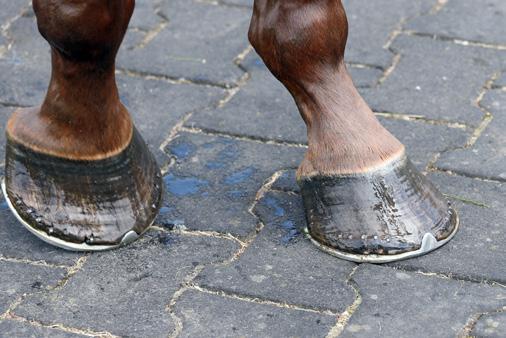
Membrane layers can also contribute to urine accumulation, leading to an increase in ammonia levels that negatively impact the respiratory health of horses. Furthermore, this moisture can permeate the underlying base material, resulting in the development of unpleasant odours. Another significant issue with this type of stall construction is the potential for groundwater contamination. Stable flooring that is impermeable or impervious is specifically engineered to stop urine and moisture from seeping through. To facilitate the elimination of urine and faeces, it is essential to either grant the horse access to an outdoor space or to supply bedding that can absorb moisture and offer cushioning. It is essential to have a solid foundation beneath for the entire system to function effectively. Stall flooring consists of a base layer and an upper layer of material. If the base is not properly established, the overall performance will be compromised. Additionally, rubber matting is regarded as an ideal durable choice due to its ability to mitigate hardness, alleviate fatigue in the horse’s legs, and simplify the cleaning process. Rubber mats may require a significant initial investment; however, they offer long-term benefits by facilitating consistent cleaning, lowering bedding expenses, and enhancing the health, comfort, and overall wellbeing of horses.


Redweld Stables are leading designers, manufacturers and installers of stables and other equine products in Ireland and the UK. Offering our designs in standard and bespoke sizes, we cater directly to the individual needs of our clients.
We pride ourselves on our reputation for the quality of our designs and workmanship and achieving customer satisfaction through our completed installations.
• Internal Stables
• External Stable Blocks
• American Barns
• Stable Fronts
• Stable Dividers
• Stable Doors
• Stable Windows
• Hayracks
• Swivel Feeders
• Washbays
• Equine Feeding Barriers
• Equine Stocks
For mid to large-sized projects, we offer a turnkey design & build service. One point of contact to manage and deliver your project, efficiently, on time and on budget. We are happy to offer a 5-year warranty on all our products.
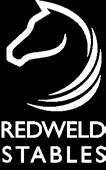
Scan here to visit us
A correctly installed rubber mat should be even and stable while offering a degree of cushioning. The market offers a range of matting options, including custom wall-to-wall installations and interlocking mats. It may be beneficial to explore mats that are thicker and more cushioned to provide insulation against cold floors and to minimise the risk of pain in the hip, stifle, hock, fetlock, and pastern areas.
In certain circumstances, it may be necessary to install a drain in a non-porous stall to facilitate the collection of liquids. A drain is particularly beneficial in veterinary or maternity stalls that require regular washing. Drains should be situated near a wall, and the stall should be graded appropriately. If drains are installed, ensure that cleanout traps are included to capture and eliminate solid waste.
Good ventilation in stables is essential for removing bad odours, improving indoor air quality and humidity, which supports horse health, while also controlling temperature and condensation to extend the building’s lifespan.
Horses are obligate nasal-breathers and grazing posture hinder their ability to effectively clear dust and debris from their respiratory systems. Prioritising good ventilation is essential for maintaining horses’ health, as it mitigates the risks of respiratory diseases caused by airborne pollutants. Failure to minimise airborne particulate matter like mould, mildew, and dust-borne bacteria can lead to serious respiratory diseases, including asthma, allergic reactions and upper respiratory tract viral infections (i.e. herpes, influenza).

Another source of moisture is the condensation that develops within the barn. Inadequate ventilation, especially from closed doors during cold weather, can lead to increased moisture buildup indoors. The horses themselves are a source of moisture and with the more horses kept in for longer periods, the more condensation that is generated. Therefore, it is vital to refresh the air inside the barn constantly to ensure the health and wellbeing of the animals.
Natural ventilation offers the most affordable solution with minimal initial investment, zero maintenance expenses, and no energy consumption. However, a combination of natural and mechanical ventilation can enhance air quality and comfort in a stable block.





Installing air inlets low and outlets high in the barn harnesses the natural tendency of warm air to rise, improving ventilation efficiency. To optimise ventilation, high outlet vents should be installed at the roof’s ridges, where warm air naturally accumulates.
During winter, the barn doors may remain shut to retain heat, while strategically placed vents ensure adequate airflow, and in summer, windows and stable doors may be left open to promote ventilation and comfort. Using horse body heat to warm a stable leads to very poor interior air quality due to inadequate ventilation and the accumulation of ammonia and other gases. In a well-ventilated, unheated stable with good air quality, the air temperature typically stays within 0-5° C / 5-10° F of the outdoor temperature.
A well-designed mechanically ventilated barn allows for precise regulation of indoor air quality, surpassing the capabilities of a naturally ventilated barn. Power ventilation systems in barns often incorporate exhaust fans and highvolume, low-speed units strategically placed in main aisles, barn ends, or between stables for optimal airflow. Individual fans in stables or aisles primarily serve to disperse particulates and repel insects rather than provide significant cooling.
If you are designing a brand new stable, the steeper the pitch of the roof, the faster the stale air will exhaust through the top ridge vents. Vents and grates at the bottom of stable partitions help improve air circulation, effectively reducing ammonia fumes from urine. Stabled doors should feature grated panels to ensure both security and proper ventilation.
A steady availability of clean, fresh water is crucial for preventing dehydration and colic. You can provide water in your stable using either buckets or automatic drinking bowls, depending on your setup.
Automatic drinking bowls can be costly and require installation. It’s difficult to gauge your horse’s water intake, but you can minimise physical labour in the yard and make sure your horse has constant access to fresh, clean water.
Water buckets are an affordable choice and you can track your horse’s water intake, but it involves lifting and transporting the buckets to and from the stable.


Horses possess an internal timing mechanism known as a circadian rhythm, which regulates various physiological and behavioural functions. This internal clock is controlled by the daily 24-hour cycle of light and darkness and operates in nearly every tissue and organ.
Scientific research supports the use of lighting systems that emit blue light similar to sunlight is advised for daytime use and a soft red light should be utilised during the night. Enhancing stable lighting can optimise the horse’s health and wellbeing by supporting its natural circadian rhythm. All elements of their physiology can function more harmoniously and in sync with the environment.
Recent studies indicate that private stables may not promote health and well-being as effectively as communal environments. The results indicated that horses housed in ‘parcours’ exhibited minimal abnormal behaviours like stereotypies, had the freedom to move throughout most of the day, engaged with other horses, and maintained positive interactions with humans.
Although this may not always be viable within training yards, stable adaptations can be made to increase social interactions. Windows in stables with views to other stables or paddocks allow horses to see and interact, even if they are not in direct contact, stall partitions with bars allow for visual and olfactory contact and individual turnout paddocks or pens allow horses to graze and interact in close proximity.


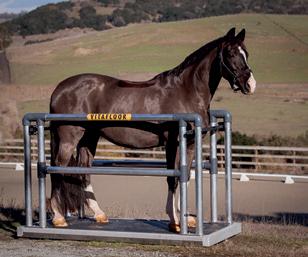



Horses should ideally have unrestricted access to hay; however, using slow feeders or automated feeders are also available to provide small portions throughout the day.
Entertainment devices can also help stimulate interaction and engagement, reducing the chances of stress and the emergence of negative habits (vices). Stable toys, mineral licks, stable treats, spreading forage in different locations, visual stimulation such as mirrors and brushes affixed to walls or fences all offer enrichment.
A range of technology is increasingly accessible to facilitate continuous care around the clock. Technology has the potential to staff, allowing them to redirect their time towards enhancing equine welfare. The integration of camera-GPS surveillance with specialised software monitors the movements of individuals and determines the typical behaviour patterns for each horse within
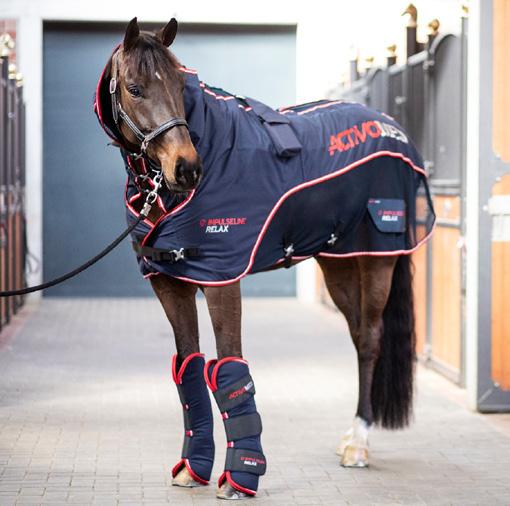
the herd. This cost-effective technology can alert yard personnel if a horse exhibits unusual behaviour.
There are a range of therapeutic technologies that can be utilised in the stable environment such as massage rugs, leg wraps and boots and handheld complimentary devices; as well as additional training and rehabilitation systems such as spas, treadmills, combi floors and solariums. All of which can be considered for enhancing the horse’s well-being.
Ensuring the comfort and well-being of the horse within the stabled environment by adapting structures and utilising enrichment tools can help prevent injuries, health issues and fire risks. By promoting best practice for keeping the competition horse and ensuring natural behaviours are expressed as much as possible within the training regimes, will only benefit the horse thus increasing performance results.




There has perhaps never been a time when it is more important for European trainers to be aware of what is happening politically in Brussels.
It is likely that, by now, readers will be aware of the review being undertaken of the European Union’s laws on animal welfare. The EMHF has, for some years now, been keeping a close watch on developments with the first strand of this review – that relating specifically to welfare in transport. We have been making representations – in writing and by visiting key decision-makers in the European Commission and Parliament – in order to try to ensure that well-intentioned legislative change does not have unintended consequences, not only for our industry, but for our horses themselves. Wherever
possible, we have sought to join forces with our sister organisations, to present a unified front across an industry whose political influence is all too often weakened by internal differences. For the most part, these efforts have borne fruit. Thankfully, the Commission’s proposals for the new laws would, if adopted, give us the continued ability to transport our racehorses in the frictionless way that we have enjoyed for decades and which we doubtless take for granted. However, despite specific requests to allow the same freedoms to horses being travelled for breeding or to go to the sales, those journeys have not been included in the Commission’s plans. We continue to fight, alongside the European Federation of Thoroughbred Breeders Associations and many others, for the inclusion of breeding and sales – if we

fail, there will be devastating impacts.
There is much less awareness of the second strand of this EU review – and this one threatens to have yet more far-reaching implications for trainers and the way they operate.
This second focus is on the keeping and protection of animals – their husbandry. Work is just beginning on this workstream, but already the Commission has given a strong hint as to the areas that it will be looking into. The review covers a broad range of animals, but the Commission has asked the body to which it turns for scientific advice in these areas – the European Food Safety Authority (EFSA) – for a scientific opinion specifically on the protection of horses and other Equidae. The Terms of Reference it has given EFSA are illuminating and arresting.
First, they make clear that EFSA should specifically consider horses kept for breeding, and also ‘working’ horses, which are to include those kept for competition (eg. racehorses). They will be reviewing the most common husbandry systems in place and then identifying welfare consequences of the above and making recommendations to prevent or mitigate those welfare consequences.
For example, EFSA will be assessing, from a welfare perspective, minimum space allowances for the boxes in which horses are housed, the air quality, temperature and lighting in those boxes, the degree to which they can see, hear and smell other horses and the amount of outdoor access and opportunities for grazing and free movement that horses are allowed. They will also be looking at the nutrition and feeding strategies that are used.
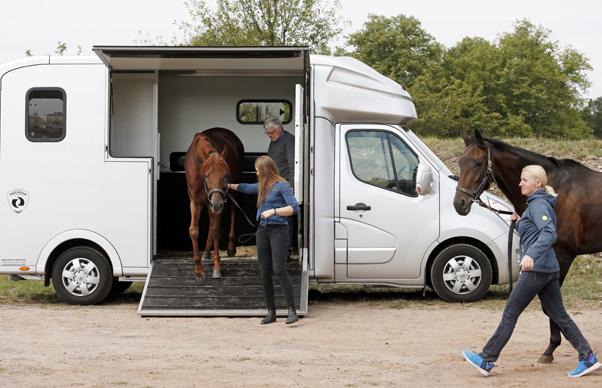

They will be considering locomotory, gastro-enteric and metabolic disorders that are found in horses and identifying ‘animal-based measures’ by which those disorders may be identified.
In relation to training, they will be looking at the age at which horses may start to be trained, the temperatures in which training takes place and whether there should be a maximum and the duration of effort and whether there should be a minimum resting period. Practices such as gelding and thermocautery of the limbs (firing) will also come under the spotlight.
In the breeding arena, they will be doing similarly with gestation and weaning conditions, including the age at which weaning takes place, the age of a mare when she is first bred, the number of gestations a mare has and whether there should be a maximum, the period of time between pregnancies and whether there should be a minimum and the practice of Caslick’s procedure.
A presentation on the tasks that EFSA has been set can be found at trainermagazine.com/efsa
While EFSA has been given until the end of next year to deliver its report, and more time will obviously pass before legislation is agreed and introduced, it is never too early for industries affected to start preparing.
The EMHF is keen that trainers (and others, including pre-trainers) are aware of this activity and is grateful for the opportunity to publicise it through this magazine. Trainers should be given the chance to consider the possible implications of this, to reflect on their own practices and to give thought to whether and in what ways they might look to adjust those practices to ensure maximum welfare benefits for the horses in their care.

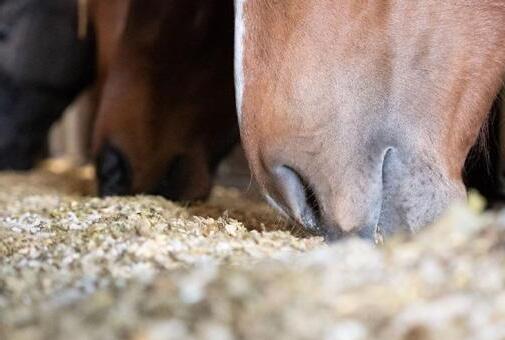
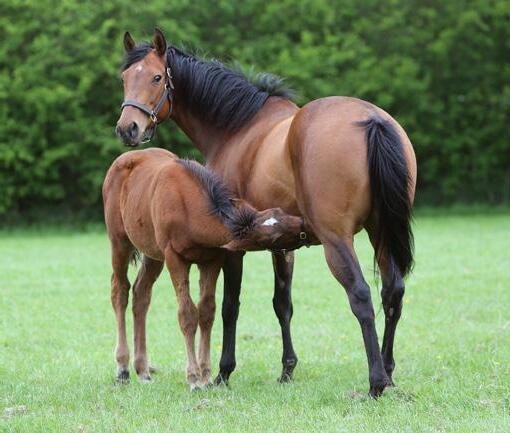
It is important that, collectively, we are aware of how things currently work. What are the husbandry practices that are adopted in the training of racehorses, across Europe?
To answer this, we are launching this survey, which readers are strongly encouraged to complete and submit.
This magazine offers a good way to help start discussions, to pool ideas and expertise so that our industry can, in due course, speak to the European institutions in as informed and measured a way as possible.



WORDS: LISSA OLIVER

Awell-publicised European Pattern Committee (EPC) review of European races was made earlier this year and the EPC sanctioned a total of 814 Black-Type races to be held in Europe in 2025, down from 826 in 2024, with 411 Gp. races (416 in 2024) and 403 Listed races (410 in 2024). A total of five Pattern races have been downgraded in 2025, and 12 Listed races have lost their status.
A total of 22 Pattern and Listed races will be at risk of potential downgrade in 2026, depending on this season’s performance. Already hard-hit, Italy has nine races at risk, Germany six, Britain and Ireland two and France, Denmark and Turkey one each.

It is now compulsory for all trainers to enter their horses’ vaccinations onto the server via the France Galop website before any race entry is validated. Most racing authorities will also require a Racing Clearing Notice (RCN) for a horse travelling abroad rather than a passport endorsement.
France Galop has implemented some changes in entry fees to be aware of with regard to Black-Type races. Based on the changes introduced for Gp.1 races in 2024, the entry fee in Gp.2 and Gp.3 races now stands at 0.65% of the total prize money. This reflects a €355/£293 reduction in the entry fee for Gp.2 races and a reduction of €210/£173 in Gp.3 races, guaranteeing sustainable funding of the Owner’s Pool (Poule Proprietaire), which funds 32% of prize money offered in Gp.1 races.
The French programme offers an opportunity to enter a horse in a Pattern race between the early closing and the supplementary entry stages and the fee has been standardised at 2% of the total prize money. Second entries, part of the revision of the entry process, will close on the Tuesday of the week preceding the race. The three Gp.2 races run over the Prix de l’Arc de Triomphe weekend are the only exceptions to this rule, their second entry closing now a Tuesday midSeptember. With the aim to standardise entry fees in all Pattern races, the supplementary entry fee in Gp.2 and Gp.3 races now stands at 7.2% of the total prize money. This percentage also applies to Gp.1

races, with the exceptions of the Prix de l’Arc de Triomphe, the Prix du Jockey Club and the Prix de Diane.
The Gp. 2 Vicomtesse Vigier at ParisLongchamp, 15f/3100m, four-year-olds up, in May, has been upgraded to offer an earlier Gp. 1 opportunity for staying horses in the spring. The Gp. 1 Prix Jean Romanet, 10f/2000m, now open to three-year-olds and upwards fillies and mares, has been increased in value to €400,000/£330,280 and effectively now replaces the former Gp.2 Prix Alec Head (Prix de la Nonette) that had been on the same card at Deauville in August. Similarly, the Gp.3 Prix du Prince d’Orange, 10f/2000m, Maisons-Laffitte, replaces the 10f/2000m Gp.3 Coupe de Maisons-Laffitte and has been put back to 14th September to avoid a clash with the new date of the Arc trials.
Joining the Gp.1 Prix du Moulin de Longchamp 7th September will be the three Arc trials, Gp.1 Prix Vermeille, Gp.2 Prix Foy and Gp.2 Prix Niel. Prize money for the Prix du Moulin increases from €450,000/£371,565 to €800,000/ £660,560, entirely financed by the owner’s fund.
The Listed Prix Joubert has been retained in preference to the former Prix des Tourelles and will be run over 14f/2800m for three-year-old fillies and older, while the Gp.2 Prix Kergorlay, 15f/3000m, effectively replaces the former Listed Prix du Carrousel and sees its prize money increase to €180,000/ £148,626 as a result.
ParisLongchamp
Other prize money changes are the Gp.3 Prix du Palais-Royal 7f/1400m from €80,000/£66,000 to €150,000/£123,855. Its traditional stepping-stone, the Listed Prix Servanne 6f/1200m, increases from €55,000/£45,400 to €70,000/£57,800. However, the Gp.2 Prix Guillaume d’Ornano, 10f/2000m has been halved from €400,000/£330,280 to €200,000/£165,140 to increase prize money in other Black-Type races. The Prix d’Aumale, a trial race for the Gp.1 Prix Marcel Boussac, has been upgraded to Gp.2 with a value of €130,000/£107,340.
The Black-Type programme for two-year-olds has been altered in the hope of increasing the number of starters and improving the competitiveness of the races, particularly throughout September. The decision was made to stagger some races and redefine their role by changing distances and surfaces. The Gp.3 Prix des Chenes 8f/1600m moves from the beginning of September to 20th September at Chantilly, becoming a stepping stone for the Gp.1 Criterium International. The Gp.3 Prix de Conde is now 10f/2000m, from 9f/1800m, at Saint-Cloud as a stepping stone for the Gp.1 Criterium de Saint-Cloud. The Gp.2 Prix Thomas Bryon 7f/1400m moves to 18th November on the Chantilly fibresand, three weeks after the Criteriums at Saint Cloud. The Listed Prix Isonomy 9f/1800m will also be run on the Polytrack at Chantilly, 27th October.
Finally, the Gp.2 Gros-Chene at Chantilly has been downgraded to Gp.3 and the Listed Prix Ceres at Fontainebleau has lost its Listed status.


Britain will stage two new Gp.1 races this year, with both the City of York Stakes, 7f/1400m, three-year-olds up, at York in August, and British Champions Long Distance Cup, 16f/3200m, threeyear-olds up, at Ascot in October, being upgraded. Both races will also see a significant increase in total prize money for this year. The City of York Stakes now joins the Prix de la Foret at ParisLongchamp in October as the only two all-aged 7f/1400m Gp.1 races in Europe.
BHA’s Director of International Racing and Development, Ruth Quinn, observes, “A very different picture to this time last year, with the outcome of the EPC meeting an encouraging demonstration of what can be achieved when we work together. It really is a significant achievement to see the City of York upgraded to a Gp.1, with this having been our long-term and ambitious plan as the race gradually climbed through the ranks from Listed status. York has been a patient and consistent supporter of the long-term strategy to develop this race into
Britain’s 7f Gp.1 race, only the second of its kind in Europe. Similarly, it’s wonderful to now be in a position to reward the Long Distance Cup on Qipco’s British Champions Day and see that too, become a long-awaited and much-deserved Gp.1 event. The overall progress for the stayers’ project across Europe is extremely heartening; we must continue to add fuel to the upward momentum being experienced.”
Qipco British Champions Day at Ascot will become the first British raceday to stage five Gp.1 races, following the upgrade of the British Champions Long Distance Cup. Prize money for the race will also be increased to £500,000 this year, bringing it in line with the Fillies’ & Mares’ and Sprint races. The day will also feature a new £250,000/€301,800 race for two-year-olds, bringing the total value of the day to €5.21m/£4.35m. The new race will be a 6f/1200m conditions race open to all two-year-olds and to be run without penalties. Details will be released later in the year.
Ascot’s near neighbour, Newbury, have also announced prize money increases for two Gp.2 races - the Hungerford Stakes and the Mill Reef Stakes. Each race has been boosted by £25,000, bringing the Hungerford Stakes to £150,000 and the Mill Reef Stakes to £125,000.
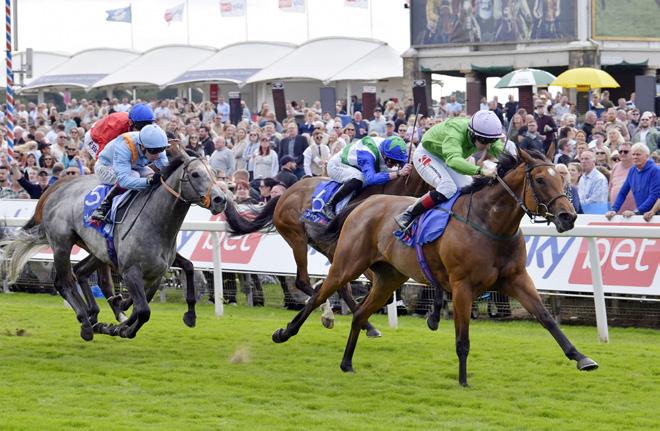
Newbury Racecourse Executive are also offering a £50,000 bonus, for any horse who wins any two-year-old race at Newbury this year and then goes onto win the 2025 Mill Reef Stakes. £40,000 will be paid to the winning owner and £10,000 to the racing staff of the winning trainer.
Some British Black-Type races have moved, the Gp. 3 Criterion Stakes in June, 7f/1400m, moving from Newmarket to York, while the Listed Fred Archer Stakes in July, 12f/2400m, has moved from Newmarket to Beverley and has been renamed the Charlie Wood Stakes, in honour of the local Hull-born Victorian jockey. In November, Newcastle has lost both the Listed Churchill Stakes, 10f/2000m, and Listed Golden Rose Stakes, 6f/1200m, to Southwell, where they will be run one week later.

ASCOT RACECOURSE
Tuesday 17th - Saturday 21st June 2025
TUESDAY, APRIL 29TH 2025
THE QUEEN ANNE STAKES (1m) STRAIGHT | £750,000
THE KING CHARLES III STAKES ( FORMERLY THE KING’S STAND STAKES) (5f ) | £650,000
THE ST JAMES’S PALACE STAKES (1m) ROUND | £650,000
THE PRINCE OF WALES’S STAKES (1m 2f ) | £1,000,000
THE GOLD CUP (2m 4f ) | £650,000
THE COMMONWEALTH CUP (6f ) | £650,000
THE CORONATION STAKES (1m) ROUND | £650,000
THE QUEEN ELIZABETH II JUBILEE STAKES (6f ) | £1,000,000
For further information contact: Chantal Chappuis, chantalchappuis@orange.fr, +33 6 07 763234 (French runners)
Adrian Beaumont IRB, adrian@irbracing.com, +44 (0) 7808 903158
Friday 18th July
Saturday 12th April
The Watership Down Stud Too Darn Hot Greenham Stakes (Group 3) (3yo) 7f
The Dubai Duty Free Stakes (Group 3) (Fred Darling Stakes) (3yo) 7f
The Dubai Duty Free Finest Surprise Stakes (John Porter Stakes) (Group 3) (4yo+) 1m 4f
Saturday 17th May
The Lockinge Stakes (British Champions Series) (Group 1) (4yo+) 1m
The Sky Sports Racing Aston Park Stakes (Group 3) (4yo+) 1m 4f
The Fillies’ Trial Stakes (Listed Race) (3yo) 1m 2f
The Highclere Castle Gin Carnarvon Stakes (Class 1) (Listed Race) (3yo) 6f
1m 2f
The St Hugh’s Stakes (Listed Race) Fillies (2yo) 5f
The Hungerford Stakes (Group 2) (3yo+) 7f
The Geoffrey Freer Stakes (Group 3) (3yo+) 1m 5f
The Dubai Duty Free Cup (Listed Race) (3yo+) 7f
The Dubai Duty Free Mill Reef Stakes (Group 2) (2yo) 6f
The Dubai Duty Free International Airport World Trophy (Group 3) (3yo+) 5f
The BetVictor St Simon Stakes (Group 3) (3yo+) 1m 4f
The BetVictor Horris Hill Stakes (Group 3) (2yo) 7f
£75,000 €90,000 £55,000 €66,000

To maintain an optimum gap, the Listed Wild Flower Stakes at Kempton Park, 12f/2400m, has been moved back by two weeks in December. The Listed Rothesay Stakes, 10f/2000m, will move from Ayr to Haydock Park and be run 24th May.
In addition to the EPC changes, over €3.92m/£3.3m in prize money will be available across 89 High Value Developmental Races for the 2025 Flat season in a further boost for the British racing and breeding industry. Richard Wayman, Director of Racing at the BHA, explains, “We are really pleased to confirm the continuation of the High Value Developmental programme for 2025 after another successful year. It is important for us to take steps to encourage the racing and breeding of horses in Britain, and the increased returns in prize money that these races provide is a vital part of that process.
“It has been brilliant to see the races so well engaged with by owners and trainers, and that wouldn’t be possible without the support of British Stallion Studs (EBF), Darley, Juddmonte and Tattersalls, who have worked together with the BHA to enable this initiative to thrive. We are also grateful to the Horseracing Betting Levy Board and our host racecourses for supporting the running of the races.
“In producing this year’s list of races, we have increased the focus on the staying horse as part of our ongoing strategy to attract and encourage quality horses with an aptitude for stamina. We very much hope to grow this significant initiative in the future.”
The programme of races, primarily for two-year-olds and three-year-olds at the beginning of their careers, begins with a €47,550/£40,000 three-year-old contest at Southwell 15th March and concludes at Chelmsford 1st December. Introduced in 2023 with 63 races, this year sees 89 races, with 31 Open Novice/ Maiden races for two-year-olds, worth a minimum of €47,550/ £40,000, 30 Restricted Novice/Maiden races for two-year-olds, worth a minimum of €35,660/£30,000, and 28 Open Novice/ Maiden races for three-year-olds up, worth a minimum of €47,550/£40,000.
Simon Sweeting, Chairman at British Stallion Studs (EBF), says, “The British EBF will again lead the industry sponsorship of this £3.3 million project in 2025 which focuses prize money into a vital, foundation area of the programme. With Open Maiden and Novices worth a minimum of £40,000 and Restricted races a minimum of £30,000, we hope more owners and trainers will target the great prize money on offer in these development opportunities for their horses’ careers.”

The Gp.2 Golden Fleece Stakes at Leopardstown, on Irish Champions Weekend in mid-September, will be upgraded to Gp.1 for 2026 and will increase in distance from 8f/1600m to 9f/1800m, for two-year-olds. The Gp.3 Anglesey Stakes, 6f/1200m in late-July will swap dates with June’s Gp.2 Railway Stakes over the same course and distance at the Curragh, in an attempt to create better progression through the Irish Pattern for two-year-olds. The Gp.3 Blue Wind Stakes, 10th May, will swap dates with the Listed Naas Oaks Trial Stakes 25th June.
A new Listed race for two-year-olds, the 8f/1600m Pat Smullen Stakes at Naas in early-July, will be run with similar allowances as those of the Irish EBF Median Sires Series.
Jonathan Mullin, Director of Racing at Horse Racing Ireland, points out that the race “feeds into that strategic policy around producing and retaining quality middle-distance and staying horses, and it is fitting that the newest addition to the Irish Pattern roster should be named in honour and in memory of one of our finest riders.”
Mullin says, “The welcome upgrade of the Golden Fleece Stakes by the EPC is a continuation of efforts to promote the production of stamina, and is part of a suite of Irish measures, some already in place, to assist that strategic ambition. The Gp.1 Golden Fleece will, in 2026, be an option for staying two-year-olds on better ground than is likely in late October for the Futurity Stakes, the Criterium de Saint-Cloud and the Criterium International, but will also act as a lead-in to these three races, many of which are being won and heavily populated by Irish-trained runners.”
As part of its commitment to the production and retention of middle-distance and staying horses in Europe, Horse Racing Ireland will review the opportunities, including for auction and median auction horses, for two-year-olds at 8f/1600m and beyond later in the season.
The Gp. 3 Athasi Stakes has been increased to 8f/1600m and will now be for three-year-old only fillies. The Gp.3 Cornelscourt Stakes has been opened up to three-year-olds up fillies and decreased to 7f/1400m. The Listed Cairn Rouge Stakes 8f/1600m is now for three-year-old only fillies and the Gp.3 Rathbride Stakes has increased to 10f/2000m and is now for four-year-olds up fillies. The Listed Listowel Stakes has been reduced to 8f/1600m and the Listed Navigation Stakes has changed to 10f/2000m and is now restricted to three-year-olds only. The Listed Victor McCalmont Memorial Stakes is now
BELOW: The Irish EBF has announced the creation of the Smullen Series, of middle-distance races for two and three-year-olds, with the highlight being the Listed Irish EBF Pat Smullen Stakes to be held at Naas in July

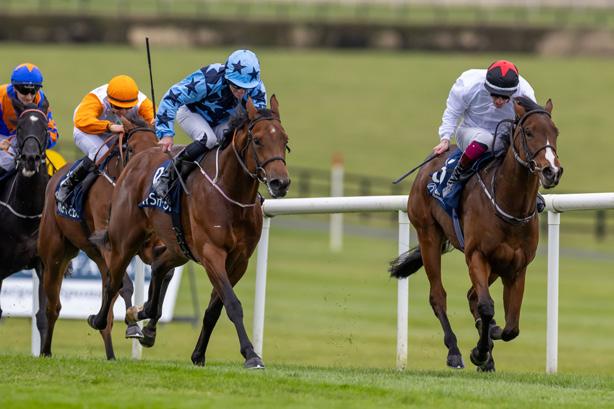
9f/1800m and for four-year-old up fillies. Among the European automatic downgrades, the Gp.3 Amethyst Stakes, 8f/1600m at Leopardstown in May has been downgraded to Listed.
The Irish European Breeders’ Fund has also announced new initiatives and record-high sponsorship of €3.1m/£2.56m for 2025. Supplementary to this spend are prize money commitments of €150,000 to Irish EBF-named races in Britain and for retired racehorses through TREO EILE. Principally, the sponsorship has allowed for the creation of the new Smullen Series of 18 middledistance races for two and three-year-olds, including the new aforementioned two-year-old Listed race at Naas in July named in honour of Pat Smullen.
The Spring Series of races originally designed for middledistance three-year-olds, including the valuable €200,000 Gowran Classic, will become part of the overall Smullen Series that will provide trainers, owners and breeders of middle-distance horses valuable opportunities to race throughout the season.
To boost prize money and interest in nursery races, there will be three Irish EBF nursery handicaps each worth €40,000/£33,000, starting in August, followed by the Auction Series Nursery at Cork in September and culminating with the traditional Birdcatcher Premier Nursery at Naas in October. There is also a total of €1.6m/£1.32m of prize money on offer for two-year-olds in the successful Auction Series and the Median Sires Series, which both include big race targets in the €120,000 Irish EBF Auction Series Final and the €200,000 Irish EBF Ballyhane Stakes.
Jessica Harrington, 2024 Gowran Classic and Auction Series Final-winning trainer observes, “Last year we were lucky to have won two big prize money pots from the Irish EBF, the first running of the €200,000 Gowran Classic with Fleur De Chine and the €120,000 Auction Series Final in Naas with Fiona MacCoul. Those two races alone brought in €182,000 in prize money for our owners and gave them tremendous thrills in the process. The exciting new Smullen Series with the new Listed is another example of how the Irish EBF is constantly coming up with great ideas and keeping prize money at the core of its decisions.”
Ralph Beckett, for whom Pat Smullen rode his first Breeders’ Cup winner in 2008 with Muhannak, adds, “The new Smullen Series is a wonderful showcase for middle-distance horses that is sure to put the spotlight on these type of horses to help promote their breeding and retention in the training ranks.”




On Sunday 24th August, Øvrevoll racecourse stages its annual Norwegian Derby Day card which also features the 35th running of the Gp.3 Marit Sveaas’ Memorial and will a have a total purse of 1.200.000 NOK (approx. €103,500), and 750.000 NOK (approx. € 64,700) to the winner. Travel concessions for horses trained outside of Scandinavia will be available.
This Gp.3 contest is one of the most valuable run in Europe over 1800m (1m 1f) and is sponsored by Kistefos a Norwegian company who played a significant role in Norway’s industrial history.
The Derby Day card also boasts two Listed races - The Polar Cup at 1370m (6f 185y) and the Lanwades Stud Stakes at 1600m (1m). The winning filly / mare of the latter race will be entitled to a complimentary nomination to a suitable Lanwades stallion for the 2026 breeding season.
Two races have been upgraded to Listed status in Sweden and Denmark, the Valley Chapel Memorial in July at Jagersro, 8.5f/1730m, for three-year-olds up, and the Zawawi Sprint at Klampenborg in August, 6f/1200m, for three-year-olds up.

Milan has created the new Listed Premio Bimbi for two-year-old colts and geldings, over 6f/1200m, in June and the Gp.2 Derby Italiano in Rome has moved from mid-May to a national holiday, 2nd June. But the remainder of changes this season are far from good news for the Italian industry. At Milan, the Gp. 2 Gran Criterium, 7.5f/1500m for two-year-olds has been downgraded to Gp.3. The Gp.3 Premio Primi Passi 6f/1200m for two-year-olds is now Listed. And the Seregno, the Mario Incisa della Rocchetta, Nogara Memorial Mil Borromeo, Gran Premio d’Italia, and Merano all lose Listed status. Similarly in Rome, losing Listed status are the Conte Felice Scheibler, Rumon Memorial Daneile Porcu, Criterium di Pisa, and Piazza Dei Miracoli.
In a statement, the Associazione Nazionale Allevatori Cavalli (ANAC, Italian breeders’ association) insisted the defence of the Italian Black-Type races had been fought for “tooth and nail”.

As a result, the Gp.2 Oaks d’Italia (11f/2200m) and now downgraded Gran Criterium, together with several other races issued with EPC warnings, have been given make-overs to attract better quality entries, with the comment from ANAC, “MASAF (Ministry of Agriculture) rightly puts in the money, our owners do their best by buying where and how they can... When the market in a country is reduced to the bare bones, it is the only lifeline. However, a change of gear is needed between payment of prizes, betting reform and revaluation of our breeding, which has too few [foals] born to be competitive in the rest of the world.”

The initial closing for the 54th running of the Gp.2 Comer International Orleander-Rennen (Sunday 11th May) will have passed ahead of publication date. But trainers have an opportunity to make supplementary entries on Wednesday May 7th.
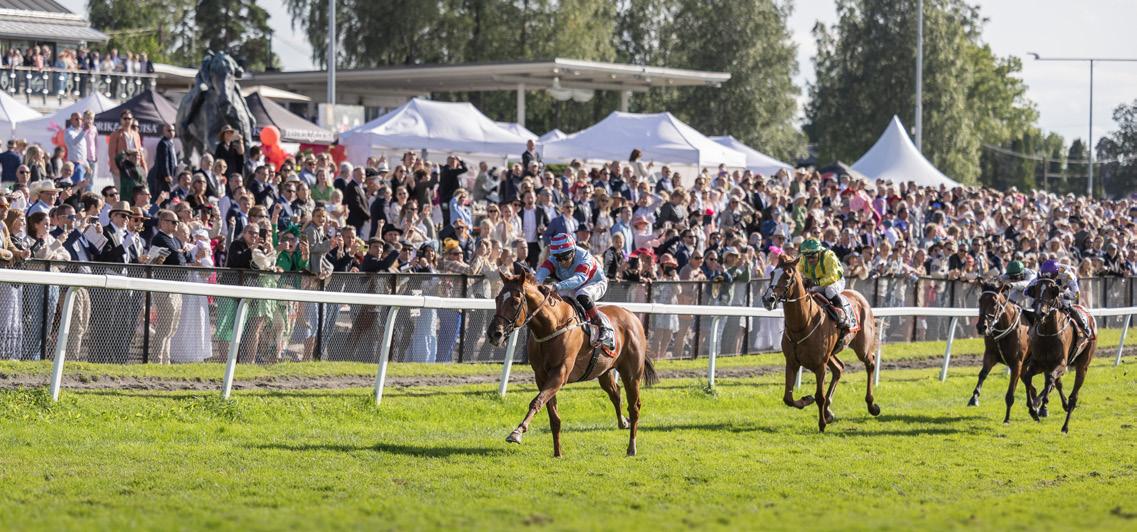
The winner of this race receives an all-fees paid invitation to the $250,000 (prize money paid to all horses) Gr.2 Belmont Gold Cup, Invitational for 4yo+, 3200 metres (about 2 miles) on turf at Saratoga on June 6th 2025.
The first, second and third placed horses are also entitled to a free entry in the Irish St. Leger, Gp.1, 2800 metres (about 1 mile and 6 furlongs) €500,000 (prize money paid down to eighth place) on September 14th, 2025 at The Curragh.
The winner of the 135th running of the Gp.1 Westminster Grosser Pries von Berlin on Sunday August 11th will receive an automatic entry to the Japan Cup, Gr.1, 2400m turf, on November 30th, 2025. The conditions for the Japan Cup, rules for travel allowances and the bonus programme can be found at www.japanracing.jp/en/japancup/jc/2025.
Losing Listed status are the Diana Trial 9f/1800m at BadenBaden in early June and the Grosser Preis der Hannoverschen Volksbank 7f/1400m at the end of May at Hannover. This is worrying for the German industry, where already on the EPC watchlist are the Gp.1 Deutsches Derby, Gp.1 Preis der Diana and Gp.2 Mehl-Mülhens-Rennen (German 2000 Guineas). Two Listed sprints and the Gp.3 Goldene Peitsche 6f/1200m at Baden-Baden have been added to the watchlist this year. In an effort to rest the decline of the two Classics, the Deutsches Derby will be worth €390,000/£321,900 to the winner and the Preis der Diana worth a first prize of €300,000/£247,600.
Good news for the fillies, however, is that the Gp.2 German 1000 Guineas at Dusseldorf in May (supplementary Entry 9am 21st May €12,500/£9,900), with a value of €125,000/£103,270,
is now a win-and-you’re-in race for Newmarket’s €333,000/ £275,000 Gp.1 Falmouth Stakes 11th July. As well as picking up €70,000/£58,000, the winner of the German 1000 Guineas will receive an all-fees paid invitation to Newmarket.
Both the Listed 6f/1200m Hamburger Fliegerpreis and Listed 6f/1200m Hoppegartener Fliegerpreis will receive prize money boosts to bring the value of each race to €40,000/£33,000, while the Goldene Peitsche over the same distance will now be worth €70,000/£57,800.
In a statement, Deutscher Galopp Managing Director Daniel Krüger said, “A strong sprint programme is of crucial importance for German racing and our breeding. Without targeted support, there is a risk of a gradual erosion of this segment, which would have negative long-term consequences for owners, trainers and breeders. With these measures, we are sending a clear signal that we are acting early to preserve these races and the diversity of our racing. I am particularly proud that we as an association are acting with foresight and setting the course for a stable future of the German sprint programme. Our commitment shows that we not only recognise problems but also move forward with wellthought-out concepts.”

The Gp.3 International Istanbul Trophy, 8f/1600m at Veliefendi has been downgraded to Listed, having dropped off the international radar somewhat and attracted only domestic runners in recent years.
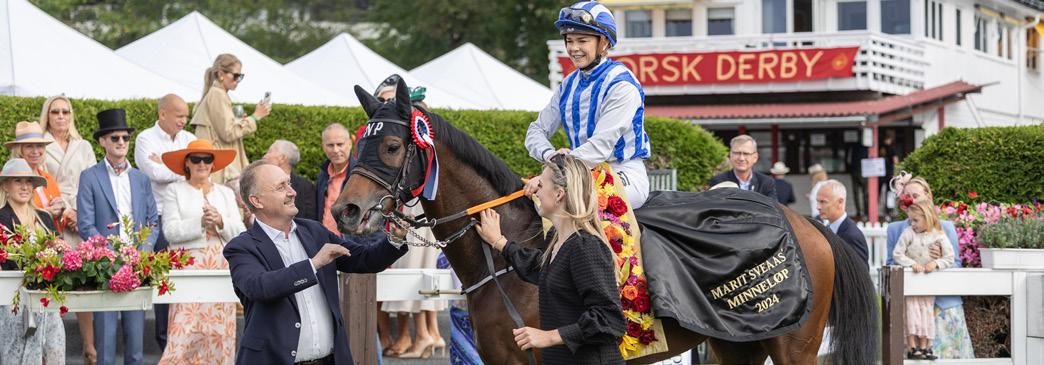
In 2025, the Marit Sveaas Minneløp (Group 3) will have a total purse of NOK 1,200,000 (approx. €64,700 to the winner). Last year, a female jockey was victorious for the first time. But we’ve never had a winner trained outside the Nordics. In the 35th running of the race – will you change that?
Sunday August 24th, to close on June 30th. Supplementary entries on August 11th
THE MARIT SVEAAS MINNELOP (Group 3) 1800 meters (1m1f), total value NOK 1,200,000 THE POLAR CUP (Listed) 1370 meters (6f185y), total value NOK 455,000 LANWADES STUD STAKES (Listed). For fillies and mares, 1600 meters (1 m), total value NOK 400,000* *Lanwades Stud kindly offers a free suitable nomination for the winning filly/mare to be used the following year (2026).
For each horse trained outside Scandinavia participating in Group races, travel allowances will be subject to agreements.
Please note that jockeys are not allowed to carry a whip in races for 3-years old and upwards.
For further information, please contact Liv Kristiansen: liv.kristiansen@norskgalopp.no
International Racing Bureau Newmarket, UK + 44 1638 66 8881 Max Pimlott: max@irbracing.com


With the re-opening of the historic Belmont Racetrack next year, 2026, it seems timely to look at the opportunities on offer to European runners at the New York tracks.
The New York Racing Association (NYRA) will fully utilise the new all-weather Tapeta track at Belmont Park for future winter racing. Still under construction, it’s expected to be ready for reopening in late 2026, when the one-mile (1600m) oval will become the exclusive winter racing surface on the NYRA circuit. While race dates for 2026-27 are still to be determined, NYRA anticipates approximately three months of racing exclusively on the all-weather surface. This reflects NYRA’s commitment to improving all aspects of winter racing at the new Belmont Park. Crucially, shifting from dirt to the all-weather in the winter months will enhance equine safety and provide additional opportunities for NYRA’s year-round horse population.
“At its core, our vision for the new Belmont Park is centred around modernising racing and training facilities in ways that will ensure the sport’s continued success and future growth,” says Dave O’Rourke, NYRA President and CEO. “NYRA has closely tracked the evolution and application of synthetic surfaces, and the relevant data unequivocally supports a shift to the allweather surface during the winter months. Together with the renovated main track and two new turf courses, Belmont Park will provide a multitude of quality options for both training and racing throughout the year.”

New York’s Triple Crown week returns to Saratoga this year with the Belmont Stakes Racing Festival. The Gr.1 Belmont Stakes (12f/2400m), the final leg of the Triple Crown, will be run in June in Saratoga Springs. The Belmont Stakes Racing Festival runs from 4th to 8th June with the Belmont Stakes on Saturday 7th June.
Saratoga has a new meeting for the summer with the addition of the July Fourth Racing Festival from 3rd to 6th July, kicking off the summer season. The traditional summer meet will open on Thursday 10th July, featuring 40 days of racing including Whitney Day and Travers Day, concluding on Labor Day weekend. The Jim Dandy Stakes date is yet to be announced, but is a traditional stepping stone to the Travers Stakes.
The Gr.1 Whitney Stakes, 9f/1800m, on 2nd August is one of the highlights of the Saratoga season, with a purse of $1m/ €926,155/£776,186, attracting the top older horses, for fouryear-olds up. The centrepiece, however, is the Gr.1 $1.25m/ €1.16m/£970,233 Travers Stakes, 10f/2000m, 23rd August, attracting many of the horses that contested the Triple Crown earlier in the year, for three-year-olds only.


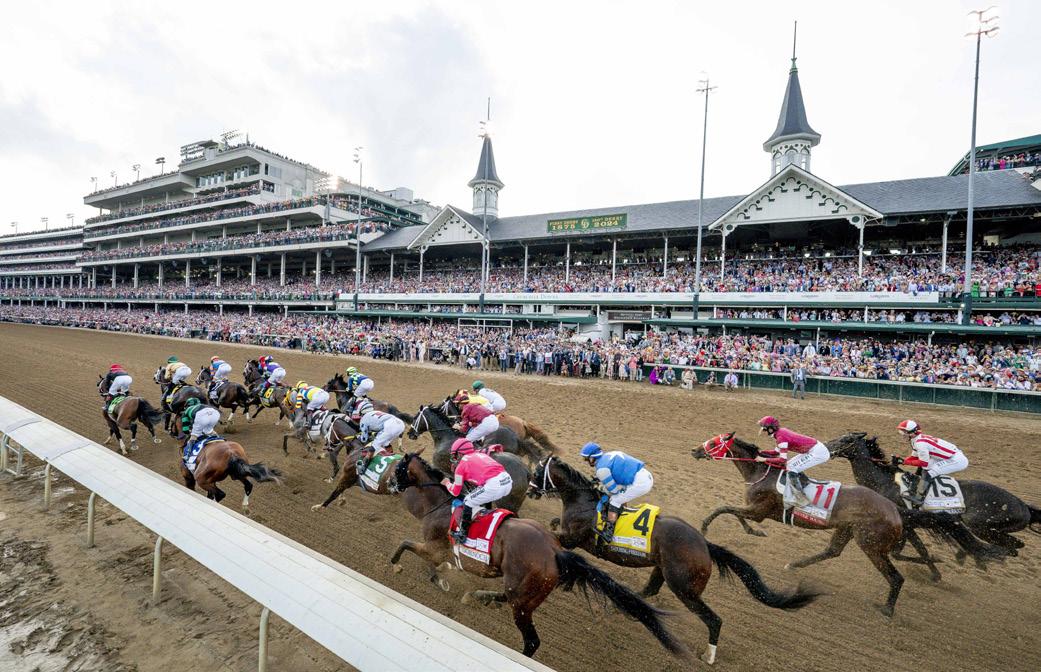

In other North American news, Ascot, The Jockey Club and Churchill Downs have extended their Wild Card Initiative for American runners and European horses travelling to the States.
Launched last year, it ties together Royal Ascot, The Derby Festival and the Kentucky Derby meeting at Churchill Downs in a commitment by all three parties to create links between historic races in the UK and high-profile, top quality turf races in the USA. The ultimate aim is to build the international profile of these races by increasing the number of runners travelling from the US to the UK and vice versa.
Continuing on from last year, a runner from each of the Edgewood Stakes for three-year-old fillies and the American Turf Stakes for three-year-old colts will receive an entry for The Oaks and Derby respectively. An invitation will also be offered to a runner from both races for Royal Ascot.
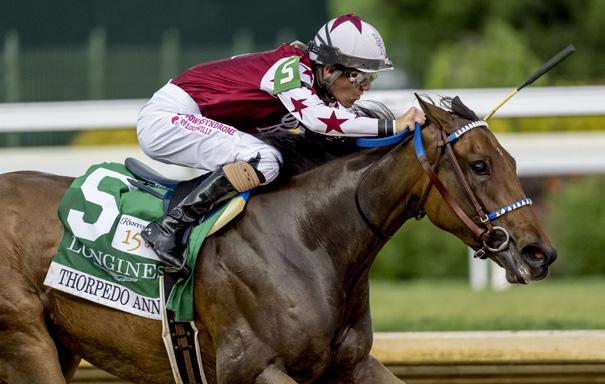
A runner from the Gr.2 Edgewood Stakes, 8f/1600m, $500,000/ €463,135/£387,900, run on Kentucky Oaks Day, Friday 2nd May, will receive an entry and travel incentive for the Gp.1 Coronation Stakes on the Friday of Royal Ascot, 20th June, as well as an invite to The Oaks on Friday 6th June.
Similarly, a runner from the Gr.1 American Turf Stakes, 8f/1600m, $1m/€926,155/£776,186, run on Kentucky Derby Day, Saturday 3rd May, will receive an entry and a travel incentive for the Gp.1 St James’s Palace Stakes on the opening day of Royal Ascot, Tuesday 17th June, as well as an invite to The Derby on Saturday 7th June.
Those two races join the existing Gr.2 Twin Spires Turf Sprint Stakes, 5.5f/1100m, $500,000/€463,135/£387,900, and the Gr.1 Old Forester Bourbon Turf Classic Stakes, 9f/1800m $1m/ €926,155/£776,186, both run on Kentucky Derby Day, which also provide Wild Card entry to Royal Ascot. The Twin Spires Turf Sprint Stakes links into the Gp.1 King Charles III Stakes and the Old Forester Bourbon Turf Classic Stakes offers the option of either the Gp.1 Queen Anne Stakes or the Gp.1 Prince of Wales’s Stakes.
In return for the above incentives for USA-based runners, a runner from both the Gp.1 Queen Anne Stakes, 8f/1600m, and the Gp.1 Prince of Wales’s Stakes, 10f/2000m, receives an entry and a travel incentive to run in the Colonial Downs’ Gr.1 Arlington Million Stakes, 10f/2000m $1m/€926,155/£776,186, in mid-August.
In addition, a runner from the Gp.1 Falmouth Stakes, 8f/1600m, at Newmarket’s July Festival will also receive an entry and travel incentive to run in the Gr.2 Beverly D Stakes for three-year-olds and up fillies and mares, 1m 1.5f, $500,000/ €463,135/£387,900 on the same day as the Colonial Downs Arlington Million.
Of particular note is the fact that, in the event that the winners aren’t able to take up their invite, racecourses may then also invite placed horses. The elimination procedures in these races will remain as they are now. Nick Smith, Director of Racing and Public Affairs at Ascot Racecourse, says, “We are delighted to extend this initiative to include the two Gp.1 three-year-old races over a mile at Royal Ascot. In recent years we have seen top-class clashes between the Guineas winners from Britain, Ireland and France in the St James’s Palace and Coronation Stakes so if we could add the best of the American Classic generation over a mile on turf to those races as well that would be really exciting.

“We look forward to working with Churchill Downs and the UK Jockey Club on this exciting plan once again and hope to build on the recent growth in interest from American connections of having runners at Royal Ascot. Their participation always adds hugely to the meeting and, with NBC once again set to broadcast the whole week.”
Gary Palmisano, Vice President of Racing for Churchill Downs Incorporated, adds, “We are thrilled to continue and expand this partnership with Ascot and The Jockey Club. This partnership further strengthens the international connection between our historic race meets. Churchill Downs has long been committed to showcasing world-class racing and we look forward to hosting some of the world’s best turf horses over Kentucky Derby weekend.”
PHOTOGRAPHY: ANGELO LIETO / COGLIANESE PHOTOS, CHRISTINE KOZAK / NYRA, ECLIPSE SPORTSWIRE, GALOPPFOTO.DE, IEBF, JOE CONROY PHOTOGRAPHY, NICOLE HAINS / ASCOT, SCOOPDYGA / FRANCE GALOP, TROND PEDERSEN




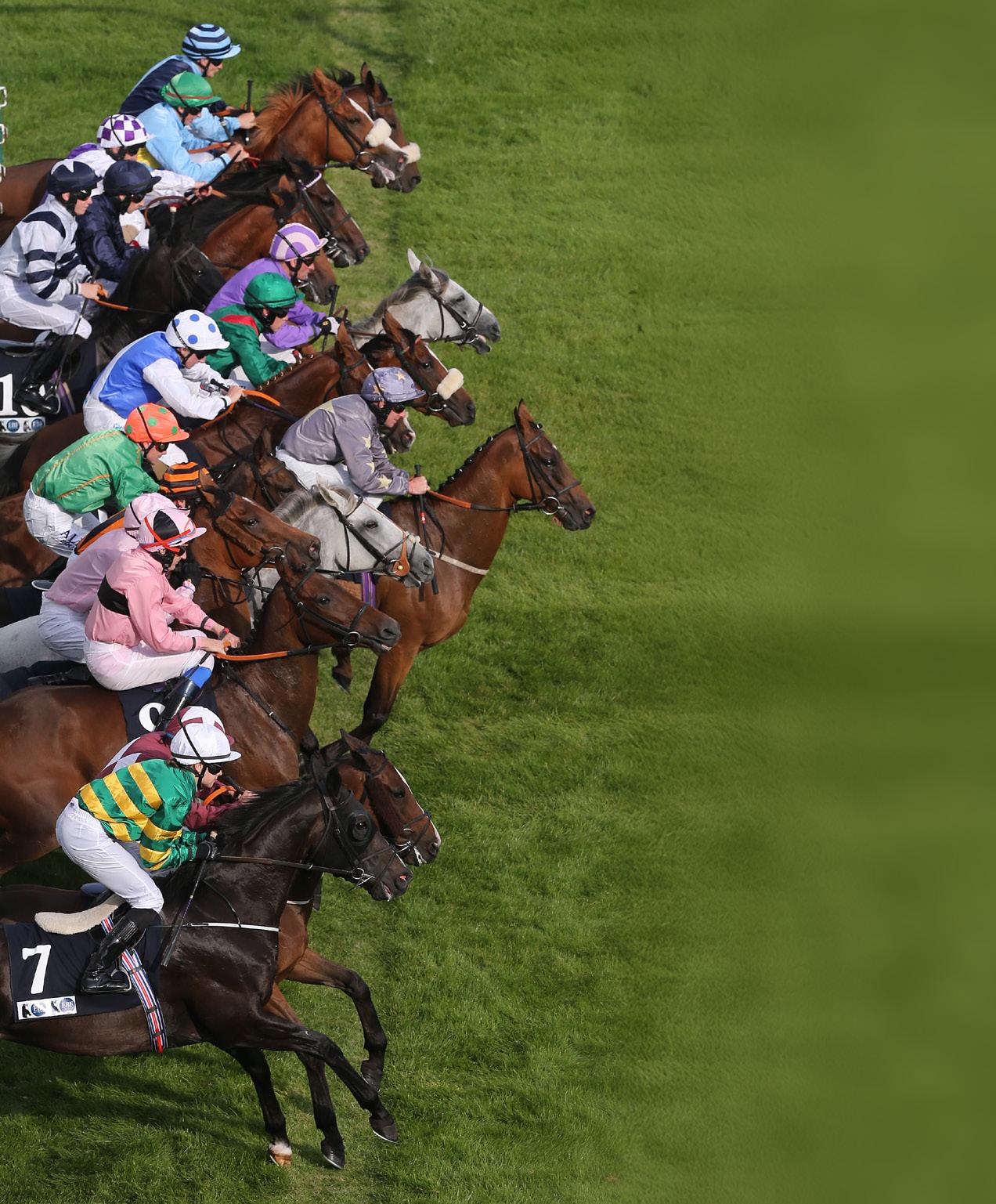
Early entries only ever enter the public forum for the really elite races. Further down the chain however – and not a lot further down - the coverage they generate is on the very slim side of limited. As a reason for the raft of early entry deadlines in place throughout Europe, publicity doesn’t stack up.
And with ante-post betting becoming ever more unattractive, punters aren’t paying the same attention they used to either.
The primary function of early entries is to raise revenue.
“I suggest that any racecourse executive who nowadays claims that early closing races are primarily for anything other than fundraising purposes, is being disingenuous,” Andrew Cooper, clerk of the course at Epsom and Sandown, tells us.
There is a price to pay for this, according to Mark Johnston, the legendary ex-trainer, whose finger remains very much on the pulse even if he has turned the licence over to his son, Charlie.
“If you want to have the best horses in the race, you make the closing date for entries as late as possible, so that people enter the horses that are best suited to the race and are most likely to run and win,” says Johnston. “But that doesn’t gather enough entry fees and hence you have all these early closing entries.”
How much is raised? Where does it go? Are owners bearing the brunt of an inability by racecourses to secure greater commercial support?
“One of the biggest issues, when you start to get below the details and talking about prize money, it’s probably more elements of transparency,” states Louise Norman, CEO of the British Racehorse Owners’ Association (ROA).
“Where does the money go in? How does it come back out? That’s a big issue for owners… that builds a lack of trust. So if you haven’t got trust, if you haven’t got transparency, we’ve got a bit of an issue.”
The trend towards shorter periods of time from early closing to race day generally, is a clear acknowledgement that no amount of accumulated revenue can justify not having the best horses in the elite races, as Johnston refers to.
A detailed look at entries in Britain, Ireland and France

Six-day entries are the standard, and are overseen by the British Horseracing Authority, but thereafter, racecourses can offer early closing. Some are historical, such as the Derby and the Classics, but courses must apply to the BHA if they want to make a new race an early closer.
Apart from the Derby, Group 1 races must close no more than nine weeks before running, Group 2s at seven weeks and heritage handicaps a maximum of six weeks. Group 1s/2s for two-year-olds, no more than seven weeks.
The closing date for first entries for the Derby this year was February 23, with the race due to take place on June 7. There is a second entry stage on April 23. There are three confirmation deadlines in between those initial entry

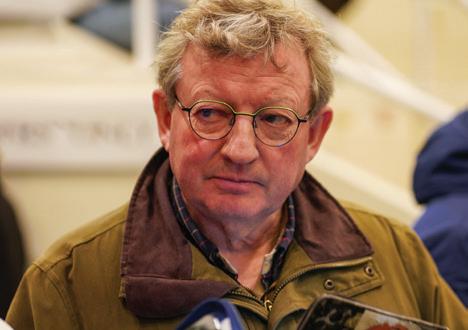
stages, adding £11,000 to the £3,000 (first entry) or £12,000 (second entry) outlay. To supplement by noon on June 2 will set you back £75,000.
Stakes for all pattern races are 1% of the total prize fund for Group 1s, 0.85% for Group 2s and 0.7% for Group 3s. Those figures are higher at racecourses that have signed a Premier Prize Money agreement: 1.25%, 1% and 1%. No more than 25% of those sums can be charged at entry point.
Supplementary fees cannot exceed 10% of the total prize fund but there is encouragement in the BHA general instructions (BARGI) to ensure the supplementary fee “shall be sufficient such as to make this route relatively unattractive (i.e. ideally more than 5%).”
Prize money for 2025 is just above £188m, and the owners’ contribution to that has risen to more than £25m. Indeed, owners’ contribution to prize money in Britain has increased by more than 35% since 2021. And even this year, the owners’ increase was 5.1%, whereas the racecourses’ contribution went up by only 2%.

Meanwhile, prize money overall has increased by less than 15% in the past decade or so, while costs have increased by 40%. None of that makes pretty reading for owners and it shouldn’t for anyone with a long-term interest in the sport.
It is the racecourses that decide what value they’re going to run a race for, and this invariably includes an assumption about how much in entry stakes they’re going to get, and therefore, what their contribution to the prize fund may be. The Levy Board contribution will remain unchanged so if they get more or less in entry fees, that either adds or deducts from what it will cost them.
There have been some notable changes to early entry processes.
The Derby is an interesting case model. Epsom introduced a yearling entry scheme in December 1991 for the 1993 Derby, with a March three-year-old entry option as a back-up. This was to generate sufficient contributions from owners to be able to increase prize money significantly to £800,000. With 634 entries at £200 a yearling, that goal was achieved.
Andrew Cooper inherited that structure when appointed clerk of the course at Epsom in 1996. With the entries declining to 448 by 2018 and the race now worth £1.5m, it was time to reconsider. Following discussions with owners, trainers and breeders, and the Covid pandemic muddying the waters, Cooper instigated the introduction of three-year-old entries in 2022.
“Ninety horses entered in February and just two in April,” Cooper details. “By the final confirmation stage in race week, this new structure had generated in total £598,000 of a £1.5m purse (39%).
“In my view the strength of this latest structure is that it produces in February a list of realistically ongoing potential Derby horses, whilst at least matching the entry income to us of the previous scheme. Whilst the cost of yearling entry was deliberately kept low - most recently £560 per horse - there was always an understandable level of dissatisfaction with some professionals at paying for entry to a race before the horse in question had ever raced, and potentially hadn’t even been named or galloped in earnest.”

Mark Johnston has praised the changes made to the Derby entry process, arguing that it has produced a better race.
“On balance I tend to agree - the right and best horses are still lining up at Epsom, but via arguably a more conventional and reasonable or affordable route,” Cooper declares. “I don’t believe the calibre of the Derby has altered - but there is probably less likelihood now of horses such as Golden Horn (2015) joining the field at the supplementary stage at a costly premium.”
Royal Ascot have reverted to a normal entry system for their four Group 2s and reverted to a normal entry system and are also returning entry fees for all horses that declare in the King George VI & Queen Elizabeth Stakes in full, except for supplementary entries.
The BHA have introduced a number of races that have a second entry stage before the supplementary stage for two-yearold races in particular this year, again, with a view to providing perhaps more realistic opportunities.


On the Flat, all Group 1s, Group 2s, 3yo+ Group 3s and €100,000 handicaps are early closers. Group 1 early closing dates vary while Group 2s generally close five weeks before race day, Group 3s three weeks ahead and premier handicaps two weeks ahead.
Over jumps, all Grade 1s and €100,000 handicaps have early entries but the lead-in is quite short at three weeks for Grade 1s and a fortnight for the valuable handicaps.
Cumulative cost to run via various entry stages in all races is 1% of the prize fund, while supplementary fees in weight-for-age early closers are 10%, apart from the Irish Derby and Irish Champion Stakes. It will be €100,000 to supplement to the Irish Derby this year, for a guaranteed prize value of €1.25m.
The Irish Classics once closed in April of the two-year-old season but in 2005, the first entry dates were changed to September. In 2014 the Irish Derby and Irish Oaks moved to a November closing – November 6 for this year’s renewals on June 29 (Irish Derby) and July 20 (Irish Oaks).
It is €2,500 to make your initial entry for the Irish Derby but €20,000 if waiting for the second entry point on May 14, by which time, two forfeit stages of a cumulative €6,250 in stakes will have passed. There is one more forfeit stage on June 24 for the Derby that will cost €3,750. That is the same day as the supplementary deadline.
“In response to stakeholder feedback, the structure of the fees at the various entry and forfeit stages of the Derby have been reviewed and reduced over time,” HRI’s director of racing, Jonathan Mullin informs us.
“The early closing system in Ireland remains under review on an annual basis and it has been the subject of tweaks and adjustments over time, particularly the Irish Derby and Irish Oaks.
“The Irish Derby is further supported by an extensive number of races in which the winner, or the first four in the case of the Derby, Prix du Jockey Club and Irish 2000 Guineas, qualify for a refund of their entry fees if they run in the Irish Derby.”
Curragh CEO, Brian Kavanagh backs the current system, with its added second entry and supplementary entry stages, as well those aforementioned incentives regarding entry fee refunds.
“This has worked well in the past and I think it is fair to say that every horse that wants to run in the Irish Derby has the opportunity to do so,” Kavanagh opines.
Prize money in Ireland increases by €1m to €70.9m for 2025, helped by an increase in government funding via the Horse & Greyhound Fund.
According to Horse Racing Ireland, owners’ entry fees contribute approximately 25% of the overall prize money budget, which comes to around €18m this year. This is a higher percentage than in Britain but less than in France.
HRI guarantees the prize money in all races from its budget, whether the contributions from the sponsor and entry fees reaches the race value or not.
It should be noted that in Ireland, executive contributions from racecourses are voluntary, rather than mandatory, as is the case in Britain. Some of the bigger tracks make contributions to prize money for their feature races to increase competitiveness, particularly if attempting to attract an international element. These racecourse contributions from the racecourses in Ireland are completely independent of entry fees, as these are collected by HRI.


Group 1 entries have their own specific entry dates with the French Classics in February (the Poule d’Essai des Poulains on February 19 at a cost of €1,500), the Prix de l’Arc de Triomphe (May 14 @€8,300) and the group races of Arc weekend at the end of July.
Other Group 1 races close between six and eight weeks prior to the day of racing. Group 2 and Group 3 races now close between four and a half and five weeks prior to the day of racing. Up until 2024, it was three and a half weeks.
Entry fees for these races are now 0.65% of total prize fund, a reduction of almost 30% for Group 2 races (€355) and 37.5% for Group 3 (€210).
There is an opportunity to enter a horse in a pattern race in between closing and supplementary for 2% of the prize fund and those second entries will close at the latest on the Tuesday of the week preceding the race. The exception is the three Group 2 races on Arc weekend, when the second entry closes on a Tuesday in mid-September.
The supplementary entry fee is the same as at Group 1 level, 7.2% of the prize fund. The exceptions here are the Arc, the Prix du Jockey Club and the Prix de Diane. There is also an opportunity for a second supplementary stage.
There is a penalty for withdrawing a runner after declaration. One recalls the high profile case of Fantastic Moon in last year’s Arc, when connections were anxious to withdraw due to the testing ground but opted to run as they would have taken a hit of 1.1% of the total prize pot without a veterinary certificate - €55,000.
Prize money was maintained at around €289m, with the breakdown shared equally – a third each between France Galop, owners via entry fees and sponsorship.
There is an Owners’ Pool, which stems from entry and supplementary entry fees in flat black-type races and 32% of money offered in Group 1 races is funded from this pool. It also finances the majority of any prize money increases.
When France Galop changed the entry conditions for Group 1 races by bringing entry dates forward and standardising the percentage of entry fees, it boosted the Owner’s Fund. This policy has been extended in 2025 to Group 2 and Group 3 races.
“Early entries are positioned at strategic dates so that a greater number of horses are entered in pattern races,” a spokesperson for France Galop’s race planning and programme department notes.
“In 2025, the changes made regarding the closing dates and entry fees in Group 3 and Group 2 races are part of an ongoing process started in 2024 in Group 1 races. The goal is to gain clarity for professionals about the entry process and its fee thanks to a greater consistency in the rules applied from Group 3 to Group 1 races.
“The money from entry fees goes straight back into all the prize money offered in pattern and listed races. This is an independent account which must never be in debit balance. We are very careful about that.”

Tim Donworth is an Irish trainer based in Chantilly and while acknowledging that early entries are a costly nuisance, he likes the system in his adopted country.
“In France, we have really good forfeiting systems for every race, not just the big races,” Donworth imparts. “So you have the right to forfeit out of the race at forfeit stage. Then we have a three-day declaration. Then you have a second forfeit stage the day after declaration.
“So we can play with the entries a lot more than you can in England and Ireland. We have visibility of who’s forfeited and who’s declared on the entry site with red circles and green circles. You can supplement into every single race in France so you can be a bit tactical with that.
“You’re always afraid to get owners to cough up money and the horse ends up not being that good but it’s a risk you have to take for the Classic races in particular and it’s a system that does generate a lot of money.”

Brian Kavanagh has an interesting perspective as the CEO of Curragh Racecourse. He was CEO of HRI for 20 years and is also a former chair of the European Pattern Committee and the European & Mediterranean Horseracing Federation.
“If the funding model was different, you would most likely have a shorter entry cycle and lower costs,” avers Kavanagh. “The ratings of Irish group races are generally strong and meet the standard required which suggests that the right horses are getting into the races. We are constantly looking at the ratings of our pattern races.
“Likewise, our average field sizes in Ireland are generally higher than France and Britain, which points to an entry system doing its job.
In Britain, Louise Norman is battling hard to improve the lot of her membership in light of some of the damning statistics related to prize money and costs. The ROA are leading on a project with the BHA in a strategic partnership around owner relations.
“We’ve got to evolve because we’re gonna get left behind, when you look at other sports,” says Norman.
“As part of our project with owner relations, we can show that the owners, through training fees, registration fees - forget the purchases; if you add those on top it would go into the billions –but you add all those other things up and it’s over £500m that owners contribute every year to British racing. They’re the biggest contributor of all.
“The modern owners now are very different to what they were 20 years ago, so we’ve got to be challenging the status quo. We’ve got to stop tweaking things, make real change.”
George Murphy is a front-of-house figure now in his father, John Murphy’s training operation, and indeed, was the one that sourced White Birch. Now owned by Chantal Consuelo RegaladoGonzalez, the five-year-old has won half of his ten races, but frustratingly for connections, has not been able to make the track since beating Augustin Rodin with ease in the Group 1 Tattersalls Gold Cup at Curragh Racecourse last May.


Third in the Derby in 2023, the son of Ulysses has been an improver with age and with an ability to act on soft ground, would undoubtedly have been a major contender in the Arc last October, had he not been sidelined. And all those middle distance targets for older horses in Ireland, Britain and France would have been on his schedule.
They still are and the entry fees will be paid again this year, as they were last season. But Murphy has no issue with that.
It is a closing date for first entries of September 25 for an Irish 2000 Guineas, just as an example, that makes it difficult, if you are not in a money-no-object situation. Or even a June 25 cut-off point for the National Stakes, which is part of the Irish Champions Festival programme on September 14.
“It’s different with an established horse like White Birch,” says Murphy. “It’s easier to map out your plan.
“I think the big issue is more the two year old races, or the Guineas and Derby, for example. They’re very early. I think when you’re dealing with an older horse that’s proven at Group 1 level, they’ve generally won a lot of prize money, and it’s probably not as big of a deal to be early or to lose out on a few engagements.”
The Murphys have entries for Crosshaven and Plaza Athenee in both Irish Guineas, despite the pair having not yet been seen in public.
“I suppose for an owner, a lot of the early entry fees are quite expensive, especially for two year olds, when you might have to make them before a horse has even run. That’s sometimes a tricky situation to explain. And you’re also taking a gamble that you think a horse is good enough.
“You can be left with egg on your face if you have entered a horse you think is very smart. And vice versa too, if you didn’t enter one that was a little bit slower to mature. And then it gets very expensive to put them in.
“There’s no doubt those good races have to close earlier than a five-day entry, but months in advance is maybe a little bit extreme, I think, for the juvenile races and the early-season three-year-old races.”
Sales races can divide opinion. They are the one sphere, we are told by executives, where entry fee revenue can match or exceed the advertised prize fund.
Johnston is bemused by them: “‘Oh you’ve got a chance of winning a million next year by buying this yearling,’ it’s amazing how many fall for it, just like they fall for lottery tickets. But it’s very bad value overall. The odds are not good.”
On the other hand, Rod Millman, who at the time of writing was just three winners shy of the 900 landmark, is a fan, however. He credits sales races for keeping his Devon operation afloat and reports that owners are excited now about possessing that lottery ticket, regardless of the odds.
Millman has won the Super Sprint at Newbury twice, via Lord Kintyre in 1997 and Betty’s Hope in 2019, and picked up a lot of place money too, while also targeting other sales races fairly successfully.
“For a trainer like me - most of our horses are at the cheaper end of the bracket – you have lots of races that you can target them at. Obviously there’s the Super Sprint, which I’ve been very lucky in. You’ve also got the sales races at Newmarket, Fairyhouse, the Goffs races. There’s a chance of a big pay day and you’re selling the owner that dream of a cheap horse that could just make it.
“Betty’s Hope, we bought for three grand won the Super Sprint and there’s more stories like that for other people. It helps give the smaller trainer a leg-up. Lord Kintyre kept me in racing and Betty’s Hope gave me a nice pension pot!”
Kavanagh provides some stats which suggest that trainers are becoming slower to pull the trigger on making entries.
“One thing that has been noticeable in recent years is that trainers are being more careful with their entries,” Kavanagh reveals. “Average entries were 24.6 in 2019 with average runners at 11.8 per race. By 2024, while the average entries had reduced to 22.8, the field sizes had remained steady at 11.5 per race.
“This suggests that trainers are increasingly entering horses only when they intend to run, whereas previously there were more of what you might describe as “have a look” entries.”
While chatting to us, Andrew Cooper wanted to acknowledge “the considerable financial contribution” made by owners via entry fees, and to thank them for it.
He emphasised that everything generated by entry fees went into prize money and also that this would continue to be the case while the current financial model persisted.
And this is the rub. This is the common, accepted situation that must improve. The failure of racing, compared to so many other sports, to create robust commercial partnerships.
In Britain, Project Pace has been set up by the industry, with a view to attracting a big marquee sponsorship for a group of elite flat races, similar to the Barclays and the Premier League for example, where the money is supposed to go in at the top and trickle down to other spheres.
It would be a start.


Dr Marián Šurda has once again produced his fascinating tables of Champion Trainers and Jockeys across a range of European countries. This is the third year that we have featured these tables, and we have taken the opportunity to publish all three years. Comparison reveals some interesting facts.
For the third year in a row it was Great Britain, amongst all these European racing nations, whose Champion Trainer boasted the highest earnings.
For the first time in the three-year period covered, Ireland’s Champion earned more than France’s Champion.
For the first time, a trainer became Champion in more than one of the ‘Big 3 countries’ with Aidan O’Brien triumphant in Britain as well as his native Ireland.
After two years when Jean Claude Rouget was Champion in France, André Fabre wrested the title back proving that age is no barrier when it comes to training horses – both being septuagenarians.
Also making their first appearance on our table, as a national Champion Trainer, were:

• Mehmet Kaya Turkey
• Jan Erik Neuroth Sweden

• Cathrine Erichsen Norway

• Maciej Jodlowski Poland

• Zuzana Kubovicova Slovakia

• Nadine Verheyen Belgium

In future issues, we will be finding out more about these new national champions and what it is like to train in the countries concerned.
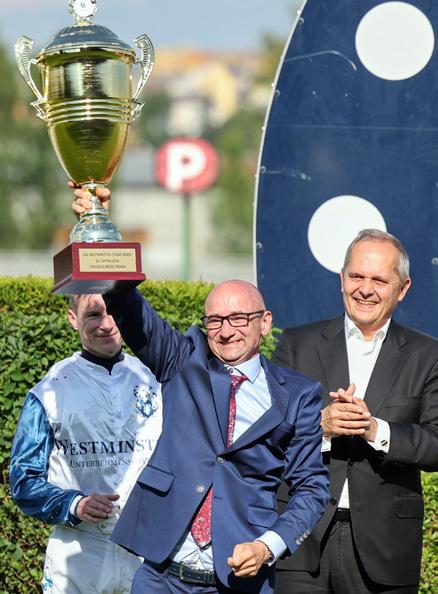
“I’ve noticed a change in the wellbeing of their backs and their condition since we’ve been using Fairfax”
- William Haggas

Economics, Winning the Dante, York, in the Fairfax Bridle
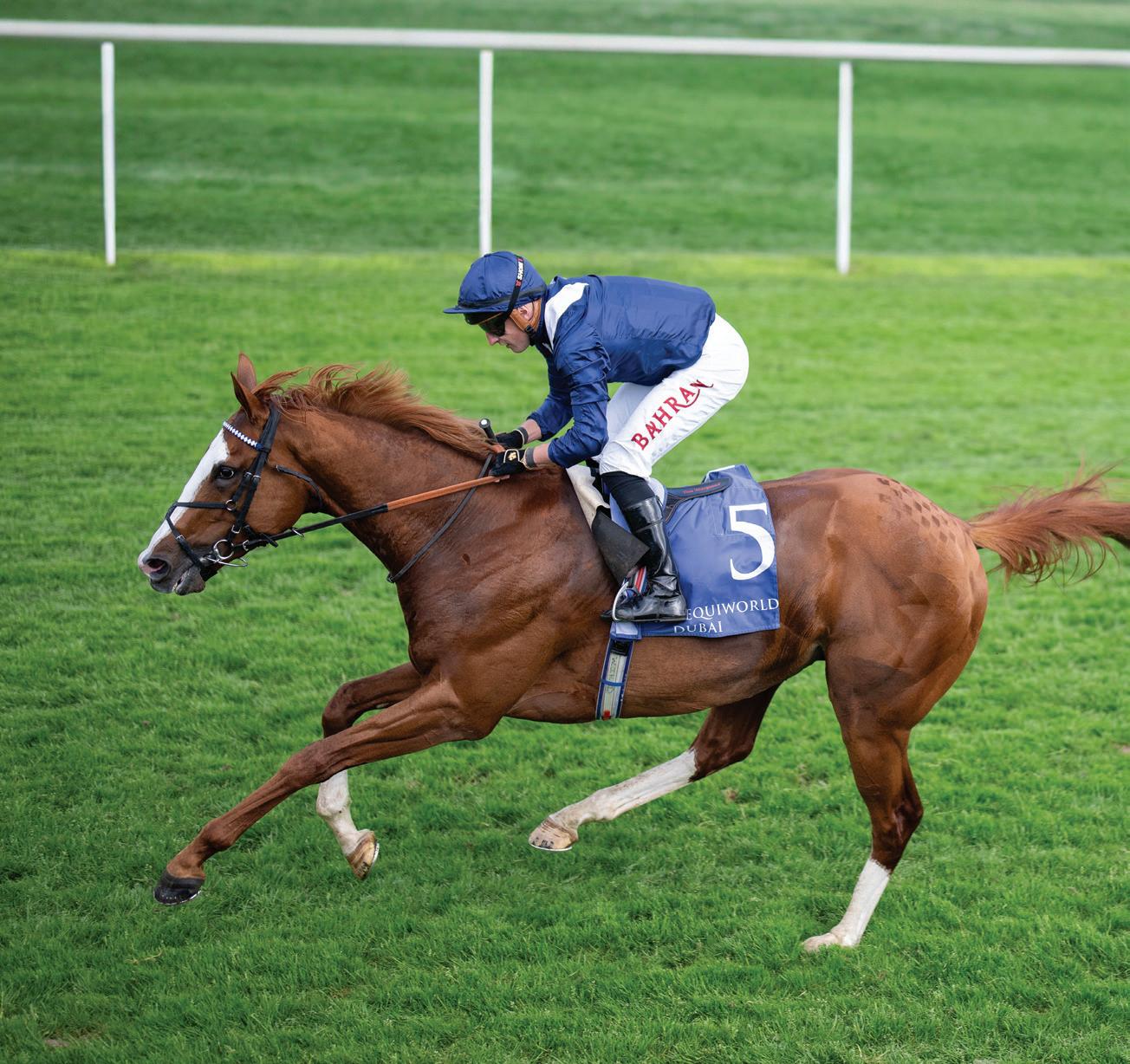




















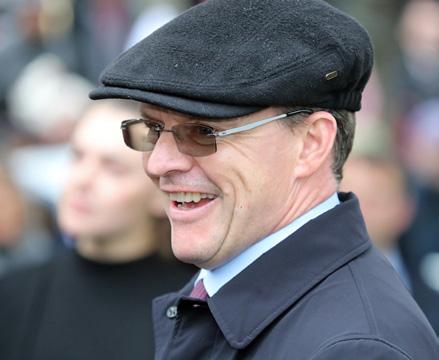


































































































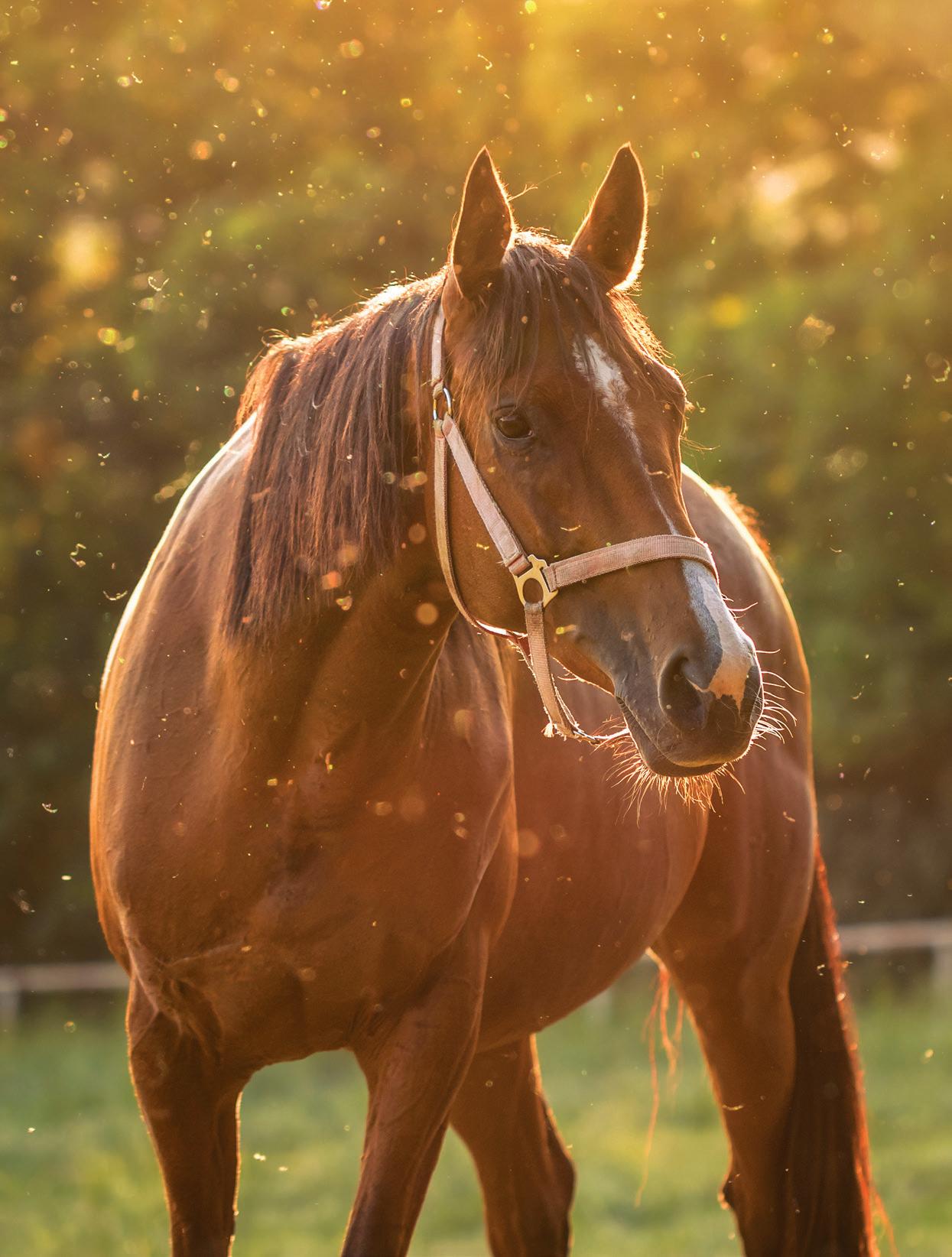
As obligate nasal breathers horses are predisposed to inhaling respirable dust, mould, pollen and other irritants from the environment. Whilst they have defence mechanisms to deal with it, the horse can be overloaded with the amount they are exposed to.
Springtime brings an array of newfound pollen from trees, grasses, and crops including the infamous oilseed rape (OSR). This pollen offensive comes in addition to the other allergens in the horse’s environment often surpassing the threshold of irritant load. This can result in respiratory based “spring allergies” with inflammation in the airways leading to allergen based equine asthma. Either subtle signs such as poor performance and reduced stamina will appear and/or more obvious clinical signs such as coughing and nasal discharge.1 Horses will tire early due to the reduced amount of oxygen being taken up by the blood from the lungs.
Plants are polyploids and show many gene duplications so cross reactivity among species in which different antigens appear similar to the immune system can amplify the horse’s response to pollen and is particularly the case for grass pollens.2
Generally intact pollen grains range from 10–100 μm in size, this is bigger than respirable particles which are classified respirable at <5 μm. Therefore, pollen has not generally been implicated in Equine Asthma and tends to be considered more of an irritant than allergen. However, a study by White et al identified an association with pollen in a group of horses with Severe Equine Asthma (SEA) while looking at bronchoalveolar lavage fluid (BALF) samples compared to healthy horses.2 The effects of pollen on the horse is an area where more research is needed.
Oilseed rape on
It’s well documented that oilseed rape (OSR) is a concern for trainers with some experiencing underperforming horses while surrounding fields are flowering oilseed rape crops.
Whilst it’s still unclear if there’s truly an allergic component to it, it certainly seems to irritate a lot of horses and vets see pollen in the tracheal washes when OSR is in flower.
A study in people comparing spring allergy symptoms of people living near OSR and those living far away, found small but significant excesses of cough, wheeze, and headaches in spring in the oilseed rape area.3 Interestingly they also found counts of fungal spores were mostly higher in the rape than the non-rape areas so perhaps pollen is not the culprit but fungal spores on the crop…?
This is worth noting as fungi is proven to cause respiratory problems in horses. A study by Dauvillier et al found horses with fungal elements observed on the tracheal wash (TW) cytology had 2 times greater chance of having equine asthma than horses without fungi.4 They also found the risk of being diagnosed and likelihood of fungi in TW were higher when horses were bedded on straw or fed dry hay which are key sources of fungi in the horse’s environment.
Practical solutions to OSR have been for trainers to purchase neighbouring fields or pay their neighbouring farmer not to grow the OSR.
From the farmer’s perspective OSR has been an essential part of the arable crop rotation for many years now. It is a crop specially planted to give the cereal crops a ‘break’ from the cycle of weeds, pests and disease that build up in the soil. This helps to improve the yield of the crops that are grown afterwards, such as wheat.
It used to be good for removing grass weeds too but has become less useful for this purpose in recent years due to weed resistance. In fact, a number of previously positive reasons to grow OSR are no longer standing up. A flea beetle which previously could be treated with a neonicitinoid is no longer licenced for this use, soil borne diseases have become a problem, and the crop does not do well in the wetter winters.
Ultimately it is now less profitable. This is good news for trainers with farmers starting to use the crop less often and perhaps grow it every 6th year rather than every 3rd year in a field. Its use is on the decline in UK/Ire and this can been seen in government figures, in 2023-24 all regions in England saw decreases in the oilseed rape area with the largest proportional decrease seen in the North East and the overall decrease of OSR grown in the UK of 27%.5 While in Ireland Winter oilseed rape declined by 30% in 2024.6
Now the interesting question in time is how much will the incidence of spring allergies reduce with the reduction in oil seed rape?
Dr. Emmanuelle Van Erck Westergren, founder of Equine Sports Medicine Practice in Belgium cautions about the effects of global warming on seasonal allergies. Global warming is altering fungal behaviour and distribution, offering conditions that provide opportunities for fungi such as Apergillus and increases the risk of mycotoxins. In addition the burden of pollen is increased by warming temperatures.
Regular, routine tracheal washes (TW) are useful as a quick and easy “screening” procedure. They help monitor how inflamed the airways are by looking at the neutrophils and macrophage cells. Normal samples are typically of low to moderate numbers of nucleated cells, the nucleated cells being mostly macrophages, with <10% neutrophils. An elevated proportion of neutrophils in the TW is considered to indicate airway inflammation, and cutoff values for neutrophil percentage have been set at 20% for TW.

Rye, perennial
Timothy
Orchard Grass (cocksfoot)
Sweet Vernal
Meadow Fescue
Meadow Grass (Kentucky bluegrass)
Plantain
Mugwort
Ragweed
Dock, yellow/curly
Lamb’s Quarter
Daisy
Dandelion
Nettle
Clover
Oil Seed Rape
Ian Beamish partner at Baker McVeigh Lambourn equine practice says he uses the tracheal wash to see “how the army is looking” in terms of number of cells and how many of those cells are dying on the battlefield.
He also warned “Ultimately, it can be a struggle to determine the actual cause of inflammation of the airways. Whilst spring allergies is a strong possibility at this time of year it could be any number of allergens from the environment causing it or simply the addition of more burdening the system. And then it could also be a virus! It’s important to remember racehorses are immune suppressed from being in full training so they are susceptible to low grade viral disease which can present with similar poor performance.”
To establish if the horse is truly allergic or if it is simply an irritation of the airways there is a diagnostic blood test for allergens. Measuring allergen-specific IgE antibodies present in the serum, can help to identify environmental allergens for both allergen avoidance purposes and to select for inclusion in allergen-specific immunotherapy (ASIT). This can be a helpful aid for diagnosing allergic disease but has been known to give occasional false positives so cannot be relied upon. Establishing a specific allergy is unfortunately very difficult.
Performance Horse Consultant and highly experienced equine vet Peter ‘Spike’ Milligan advises to first and foremost control what you can.
“Reducing contact with pollen can be extremely challenging so first focus on what you can control. Irrespective of the time of year, regularly re-evaluate the stable environment as well as the forage and bedding quality. This includes how they are stored, prepared and used to ensure the allergen and irritant load is as low as possible.”
Alder
Birch
Hazel
Privet
Oak
Beech
Ash
Scots
Willow
Horse Chestnut
Sycamore



The pollen count measures the number of pollen grains in a given volume of air and can indicate if it is a day the horse will be exposed to high concentrations of pollen. Pollen count is affected by the season, weather and even the time of day. The largest concentrations of pollen are found on days of high radiation and wind, early in the morning when pollen is first shed when the air is warming and rising and in the evening as the pollen in the air descends to nose level with the afternoon air-cooling.
The pollen count can be checked daily on weather apps. Where possible, it’s advisable to adapt the horses training schedule in line with the pollen count and keep training sessions less strenuous on the days the pollen count is high.
Treatment of horses with allergen-induced equine asthma focuses mainly on decreasing and controlling airway inflammation.1 The standard and effective cornerstone treatment is to give a systemic or inhaled corticosteroid and if necessary, a bronchodilator can also be used.
The preferred method to administer these tends to be via a nebuliser because inhaled therapy delivers the drug directly to the lungs and helps to loosen mucous. In addition, a lower dose can be used reducing the chance of side effects and shortening the drug withdrawal time required prior to racing.
Recent advances in treatment include a specifically designed inhaler with a different inhaled steroid, ciclesonide, studies have demonstrated improved clinical signs in a group of horses with mild to severe equine asthma.7,8
However, whilst corticosteroids are very effective and efficient at relieving airway obstruction, they have limited residual effect





ABOVE: The preferred method to administer corticosteroids is via a nebuliser which delivers the drug directly to the lungs and helps to loosen mucous.
after treatment stops and long-term administration is usually limited due to the risk of laminitis, immunosuppression, and interactions with endocrine metabolism. 9 The drug withdrawal period also impacts the racing schedule. So, what treatments can be used which interfere less with their training and racing plan?
Firstly, creating a barrier between the horse’s airways and the pollen with a nasal spray and/or the use of a nose-net are lowcost options for training that could be worth a try. This could help to reduce the irritant load on non-race days.
Oilseed rape (OSR) is a concern for trainers with some experiencing underperforming horses while surrounding fields are flowering oilseed rape crops.

If the horse is truly allergic to certain pollens, then de-sensitisation injections can be used with no withdrawal period necessary. Known as allergen-specific immunotherapy (ASIT) it is a safe long-term treatment which has been used successfully for allergen-induced Equine Asthma. The efficacy of the treatment can vary however, studies suggest that approximately 75% of cases treated showed a good response, with either no need or a reduced need for steroids.
Immunotherapy aims to make the horse tolerant to the environmental allergens that have been diagnosed as responsible for their clinical signs by introducing increasing amounts of the allergen to which they are sensitive. These desensitisation vaccines are administered to the horse subcutaneously. The initial treatment lasts for approximately 10 months, with a dosage regime that gradually increases until the maximum tolerated dose is reached. This is then followed by maintenance treatment. The length of time for a response has been reported to vary between individual horses and can be anywhere from 4 and 12 months. Treatment can be ongoing as premature discontinuation may result in the clinical signs recurring.
Developments in orthobiologics has brought a new noncorticosteroid anti-inflammatory alternative for use in affected horses. Alpha-2-macroglobulin (α2M) is a naturally occurring protein within the blood and is the horse’s natural defence against inflammation.10 Plasma proteins are filtered from the horse’s own blood, leaving an isolated, concentrated alpha-2-macroglobulin product which can be nebulised using a nebuliser. This offers a potential drug-free way to treat and also an effective antiinflammatory in joint disease.
Principally the greatest threat to respiratory health year-round is from environmental sources which you can control – the forage, the bedding and the overall stable hygiene environment, this should never be overlooked.
References:
1. Couetil L, Cardwell J, Garber V, et al. Inflammatory airway disease of horses — Revised consensus statement. J Vet Intern Med 2016;30:503-515
2. White S, Moore-Colyer M, Marti E, Coüetil L, Hannant D, Richard EA, Alcocer M. Development of a comprehensive protein microarray for immunoglobulin E profiling in horses with severe asthma. J Vet Intern Med. 2019 Sep;33(5):2327-2335. doi: 10.1111/jvim.15564. Epub 2019 Aug 20. PMID: 31429513; PMCID: PMC6766494.
3. Soutar A, Harker C, Seaton A, Brooke M, Marr I. Oilseed rape and seasonal symptoms: epidemiological and environmental studies. Thorax. 1994 Apr;49 (4):352-6. doi: 10.1136/thx.49.4.352. PMID: 8202906; PMCID: PMC475369.
4. Dauvillier J, Ter Woort F, van Erck-Westergren E. Fungi in respiratory samples of horses with inflammatory airway disease. J Vet Intern Med. 2019 Mar;33(2):968-975. doi: 10.1111/jvim.15397. Epub 2018 Dec 21. PMID: 30576012; PMCID: PMC6430897.
5. Gov.uk website - Accredited official statistics Cereal and oilseed areas in England at 1 June 2024. Updated 29 August 2024. tinyurl.com/c52kr3wx
6. Teagasc Crop Report - Harvest report 2024. www.teagasccropreport.ie tinyurl.com/76xfyd64
7. Lavoie J, Bullone M, Rodrigues N, et al. Effect of different doses of inhaled ciclesonide on lung function, clinical signs related to airflow limitation and serum cortisol levels in horses with experimentally induced mild to severe airway obstruction. Equine Vet J 2019;51:779-786.
8. Ciclesonide [prescribing information] Duluth, GA: Boehringer Ingelheim Animal Health USA Inc. 2020.
9. Mainguy-Seers S, Lavoie JP. Glucocorticoid treatment in horses with asthma: A narrative review. J Vet Intern Med. 2021 Jul;35(4):20452057. doi: 10.1111/jvim.16189. Epub 2021 Jun 3. PMID: 34085342; PMCID: PMC8295667.
10. Alpha-2 Macroglobulin for the Management of Equine Asthma Summary Results of a Pilot Study Dan Dreyfuss, DVM.
The Flexineb® E3 is a portable, silent equine nebuliser. Battery or mains-operated, it can be used for daily airway maintenance therapy prior to racing and the targeted delivery of inhaled medication for the management of equine airway disease.
Nebulisation of non-prohibited substances complies with FEI General Regulations.


In racehorses, exercise-associated sudden death – or EASD – is a very rare event but, the miserable events at Cheltenham last November where three horses died on the same day, drew considerable negative attention to the condition and highlight a need for better understanding of why it happens as well as motivating vets, researchers and horsemen to do more to prevent it.

Cheltenham drew a spotlight to the problem but EASD was already the focus of international effort: in June 2024, Woodbine Racecourse, Toronto hosted the International Horseracing Federation’s (IFHA) Global Summit on Equine Safety and Technology where EASD was one of two major workshop topics. This international event was sponsored by Cornell University’s Harry M. Zweig Memorial Fund for Equine Research, The Hong Kong Jockey Club Equine Welfare Research Foundation, and Woodbine Entertainment Group. Specialist veterinary clinicians, pathologists and researchers spent two days sharing knowledge and ideas and debating how tangible improvements to equine safety and welfare in racing could be made towards reducing the prevalence of both EASD incidents and severe musculoskeletal conditions.
The term EASD is used to describe a fatal collapse in a previously healthy horse either during or shortly after exercise. Currently, across the world, different time-windows are used by regulators which makes quantification of the problem challenging. A benchmark definition is needed so that the occurrence rates can be audited and the EASD workshop team advised that an international definition is adopted to define EASD as within approximately one hour after exercise. Figures from the BHA show that in the UK, the 2024 EASD incident rate was 0.04% or 4 horses per 10,000 starts – which with just under 90,000 runners translates to 36 EASD losses for the year which is why the triple Cheltenham deaths were so extraordinary. The UK’s rate is comparable with other nations such as Australia and a little lower than the USA although the different definitions used in different racing jurisdictions make direct comparisons challenging.
The most authoritative international study looking at causes of EASD was performed with the Horserace Betting Levy Board supported by a group in the University of Edinburgh’s Royal Dick School of Veterinary Studies. This report showed that


determination of cause of death is significantly impacted by individual pathologist’s interpretation of findings, however, in broad terms about a quarter of cases of EASD have a clear and definitive diagnosis of cardiopulmonary failure and a further 10-15% have necropsy findings which are strongly suspicious of cardiac or pulmonary failure; around 10% of EASD cases are due haemorrhagic shock brought on by rupture of a major blood vessel which is most commonly within the abdomen, while unfortunately around 20% of cases are unexplained despite detailed examination. A range of other rare conditions including brain and spinal problems, often relating to trauma, account for the remainder.
Within the cardiopulmonary failure category, it is generally accepted that the majority relate to cardiac arrest. This means that the cardiac rhythm is disrupted but, in fact it is actually very difficult to prove that a cardiac rhythm disturbance has been the trigger mechanism of death during a post-mortem examination. In the June 2024 IFHA summit, a significant amount of the workshop was dedicated to discussing current knowledge of cardiac rhythm disturbances, why they occur and how they might be detected in future.
Cardiac arrest can be likened to a perfect storm where multiple adverse factors combine with devastating impact. Unlike catastrophic bone fractures or tendon injuries, cardiac arrest does not necessarily relate to an accumulating pathway of builtup microdamage and because of this, it is very difficult to predict cardiac arrest might occur.

ABOVE: This horse had an episode of distress on the racetrack when vets detected that the cardiac rhythm was irregular. Looking back over its training record, episodes were noted when the heart rate was higher than usual and examination of the ECG traces showed that there were cardiac rhythm disturbances. In this example, the lower panel shows a plot of heart rate over time: the spikes in the heart rate indicate individual premature depolarisations which is confirmed by examining the ECG above which shows a premature complex followed by a pause.


ABOVE: This horse has had episodes of atrial fibrillation previously: on the day this ECG was recorded, his rider and trainer noted that he was not working well. The heart rate during the training session was excessively high, approaching 250 beats per minute. The lower panel shows a plot of heart rate over time and this shows first the heart rate takes a sudden jump upwards (red arrow) and becomes fuzzy, indicating there the intervals between beats are varying. As the heart rate slows down this variation from beat to beat becomes more obvious and the ECG above confirms the rhythm is very irregular. The rhythm disturbance self-corrects at a heart rate just over 150 beats per minute (green arrow) and thereafter the plot is smooth indicating a regular heart rate. The case shows that without the training wearable, the diagnosis could not have been made because well before the horse returns to his stable, the cardiac rhythm is entirely normal again.
For a cardiac rhythm disturbance (aka an arrhythmia) to develop three elements are required: a substrate, triggers and, in some cases, one or more modulators. A substrate refers to the structure of the heart, this can be an area of scar tissue but the heart structure does not necessarily need to be pathological and the changes in muscle content which arise as a result of athletic training may also be a substrate.
A trigger reflects a change in the cellular and tissue environment such as alteration in concentrations of different electrolytes or development of low oxygen concentrations in the tissues yet changes in electrolytes and lowering oxygen concentrations occur every time a horse gallops. Modulators are an electrophysiological characteristic of the heart which might be a permanent feature of an individual’s cell make-up or more often might be a transient state such as a variation in the nervous system brought on by excitement, stress or perhaps pain.
The key point is all these independent factors have to combine to precipitate a cardiac arrest – indeed a horse might go through its life uneventfully despite the presence of a particular substrate
or it may experience these triggers on a daily basis and come to no harm. It is the coalescing of multiple factors at a given moment that precipitates the rhythm disturbance that leads to cardiac arrest.
Arguably the biggest challenge we currently face in this arena is lack of knowledge of what is normal in the exercising horse. There is very little understanding of structural and electrical remodelling of the equine heart in response to exercise. We do know that the heart, just like any other muscle, will increase in size in response to training and we also know that in horses competing over longer distances such as steeplechasers, a big heart confers an athletic advantage. Exercise training can also lead to scar-tissue formation but in both human and equine athletes the importance of this pathology is uncertain. There is some evidence that fit horses also have altered cardiac electrical characteristics but again, knowledge in this field is very sparse.
Electrical activity in the heart muscle cells is controlled by ion channels – these are proteins that are sited within the cell

ABOVE: Vets currently rely on resting and exercising electrocardiograms (ECG’s) to identify horses with arrhythmias.

ABOVE: Increasingly more trainers have been using wearable devices during routine training to refine their training programmes.
membranes which effectively act as gates opening and closing to allow electrolytes such as sodium, potassium and calcium to move in and out of the cell and in doing so the electrolytes carry the electrical current.
Channelopathies – or abnormalities in these ion channels - have an important role in the development of rhythm disturbances but right now, research on equine ion channels has been limited… but that is changing rapidly. Researchers in Surrey, Copenhagen and various US universities are working to understand equine channels and the genetic and acquired factors that determine how they function. As knowledge accumulates it may be possible to include tests for the molecular make -up of an affected individual in post-mortem exams – the so-called “molecular autopsy” which is improving diagnosis rates in human cardiac arrest suffers.
So far equine studies have not found conclusive evidence of genetic mutations associated with EASD. But there is evidence for heritability in the thoroughbred: observations from Australia which have shown some stallions’ and at least one mare’s progeny have higher rates of EASD associations suggesting that it is likely that there are genetic elements at play in EASD. One of the key recommendations of the IFHA’s EASD workshop was that tissues from both horses impacted by EASD and those dying of other causes should be banked and shared amongst researchers to underpin and promote research studies in this area.
Currently vets rely on resting and exercising electrocardiograms (ECG’s) to identify horses with arrhythmias. However, there are a number of limitations to using ECG as a screening and diagnostic tool:
• ECGs can be technically difficult to perform during exercise as they are affected by motion artefact; leading to reduced quality of the trace.
• ECGs currently must be manually interpreted, which is time consuming and leads to significant intra- and inter-observer variability.
• There are no universal guidelines on how to perform the ECG; i.e. exactly where to place the electrodes, which affects the trace produced.
There is no consensus on interpretation of the results of an ECG examination in terms of the clinical significance of any abnormalities detected and whether the clinical presentation impacts criteria for interpretation. Indeed, we need to understand more about what is ‘normal’, before we can identify horses with an ‘abnormal’ trace.
Over recent years, increasingly racehorse trainers have been using wearable devices during routine training. Generally, the trainer’s motivation is to collect data on speed and fitness variables in their horses to refine their training programmes but several of these devices also have the capacity to include an ECG trace. The ECG can then be accessed if the horse has a problem during a training session and, usefully, the horse’s past record can also often be interrogated. The large numbers of recordings that are currently being made represents an untapped resource for collecting ECG information from large numbers of horses to better understand cardiac responses during exercise in both healthy and unhealthy individuals.

BELOW: There is an urgent need to develop AI systems which can screen training ECGs to identify those that warrant further attention.



It has been known for some time that healthy horses frequently have mild rhythm irregularities – generally described as premature complexes or premature depolarisations – these minor fluctuations in rhythm occur at all phases of exercise and particularly as their heart rate is slowing rapidly at the end of a gallop. But the dividing line between what is normal variation and what is clinically concerning is not clear-cut. We do not know exactly how much beat-to-beat variation can be classed as normal versus a sign of significant arrhythmia and we have little understanding of the relationship between premature depolarisations and other factors such as stress, exercise intensity, medical interventions and adverse clinical events.
As a result, veterinary clinicians are looking forward to the ongoing expansion of wearables as an exciting new window into equine cardiac function. Yet, the scale of the unexplored data collection currently going on in training brings with it a challenge – with so many ECG traces being rapidly collected, how can we address the mammoth task of actually looking at them? Artificial intelligence (AI) is revolutionising many aspects of modern life, including medical diagnosis. There is an urgent need to develop AI systems which can screen training ECGs to identify those that warrant further attention. And, although a large number of wearable devices are available on the commercial market, these products often lack validation which is needed before we can use the data they collect to make clinical decisions on individual animals and use the data as a research resource.

Racetrack arrhythmia/collapse are, in reality, low probability but high impact events which can be difficult to manage due to their traumatic nature and the fact that they are often played out in the public eye. This is compounded by the availability of medical equipment and limited treatment options that may be futile.
However, when these events do unfortunately occur, they represent a golden opportunity to collect diagnostic information and biological samples which could be used to prevent future EASD events in other horses in the future. The combination of an ECG history, a video of the horse as it suffers the event, information from necropsy if the horse dies, and tissue banking offers valuable research insights.
The nearest parallel event from human sport is the cardiac arrests which are occasionally seen in footballers. Through the effort of football’s regulators, today pitch-side emergency medical facilities are excellent and large numbers of trained staff are in attendance, all leading to the best possible outcomes for sportsmen when medical problems arise. When looking to perform cardiopulmonary resuscitation and treatment attempts in the collapsed horse, the animals’ size is a major challenge; human defibrillators simply do not work in large animals.
We need more information on emergency medications that can be used in the presence of arrhythmias of unknown origin. These drugs need to be quick to administer, available and suitable to be carried by a racecourse vet, safe, effective and affordable. The IFHA’s EASD group identified that in pressurised situations, predetermined protocol approaches to both emergency treatment and necropsy procedures are invaluable and the group is working to develop these protocols for dissemination across racing jurisdictions.
As EASD is such a rare event, it is impossible to believe that the risk of EASD can ever be removed entirely, but given the recent technological development in both veterinary science and wearables for training, there is reason to be optimistic that in the coming years, we will at last be able to improve diagnosis rates, identify some of the contributing risk factors and even potentially provide more effective emergency treatment options for these unusual but tragic episodes in our horses.


Equimetrics - providing smart equine monitoring solutions for the sports performance and veterinary industries.
S-PRO – Sports Performance
• Records heart rate, movement, speed and stride data.
• Tracks post-exercise recovery and fitness levels.
• Provides training analysis, comparisons, and shareable reports via the app.
V-PRO – Clinical & Remote Monitoring
• Continuous remote monitoring of patients both in the clinic and off site.
• Easy ECG capture at rest and during exercise.
• Real-time alerts and cloud-based data access through the app.

Order now or contact us for more information: info@equimetrics.ie
Order now or contact us for more information: info@equimetrics.ie



All horses can be infected with internal parasitic worms, which can cause health issues, including weight loss, diarrhoea, and colic. The most common worms affecting racehorses, and other horses, are the small strongyles (cyathostomins) and the common equine tapeworm, Anoplocephala perfoliata.
Horses are infected by ingesting parasites from contaminated grazing, whether it be a field, turn-out paddock or opportunistic grazing on training grounds or racetracks.
Recent reports of dewormer resistance in A. perfoliata are very concerning, especially as there are few available products to treat these parasites and no new drugs are expected to enter the market soon. These relatively large parasites typically reside at the junction of the small and large intestines and can cause colic. The worms attach in clusters to the intestinal wall, which can cause mechanical obstruction and mucosal damage.
Blockages can cause impaction, potentially necessitating surgery. Moreover, the presence of tapeworms may lead to intussusception, where one segment of the intestine telescopes into an adjacent segment, also requiring surgery. Studies indicate that having as little as 20 tapeworms can cause significant damage to the intestinal wall (Pavone et al. 2010). Therefore, it is crucial to prevent such burdens from accumulating in horses.
There are two types of dewormers (anthelmintics) available for treating tapeworms: praziquantel and pyrantel (given at double the dose used for treating roundworms). In the UK and EU, there have been several anecdotal reports of reduced effectiveness of anti-tapeworm drugs. A recent research study on a thoroughbred farm in the US evaluated the performance of both tapeworm dewormers (Nielsen, 2023).
The results demonstrated treatment failures in foals and broodmares in which tapeworms survived treatment. This was the first formal report of suspected drug resistance in tapeworms. Resistance occurs when parasites survive deworming treatments and pass on reduced sensitivity to the drugs to subsequent generations. Repeated treatments with the same drug can lead to parasite burdens that cannot be cleared and may result in clinical disease.
Given the threat of resistance in this species, it is essential to reduce the overuse of anti-tapeworm medications. Implementing more sustainable control methods is now crucial for the long-term effectiveness of these important dewormers. These control methods must include:
• Maintaining a clean grazing environment
• Regularly monitoring parasite burdens
• Deworming only those horses that truly need treatment .
Tapeworms differ from other common equine worms because they develop inside mite intermediate hosts on paddocks (Fig. 1). Horses become infected when they consume hay or grass that contains tapeworm-infected

ABOVE: Tapeworms (Anoplocephala perfoliata) in the intestine of a horse.
mites. Mites are infected by eating eggs passed in the dung of infected horses. Where horses have access to grazing paddocks, it is essential to remove dung daily and dispose of it well away from both the grazing area and any water sources. Extra caution should be taken with horses that have grazed away from the yard and newcomers to the yard (see quarantine recommendations below).
Regular testing is essential for effectively managing tapeworm infections. Faecal egg count (FEC) tests are unsuitable for detecting tapeworms. These detect worm eggs shed in dung, but are not reliable indicators of the overall parasite burden in individuals, particularly since immature worms are not detected. FEC methods are also influenced by the variable release of egg-containing segments from adult tapeworms.
The main purpose of FEC tests in tapeworm control is to assess the effectiveness of deworming treatments. If tapeworm eggs are detected in dung samples taken two weeks after treatment, this is a significant finding. However, the absence of eggs in a FEC does not mean that tapeworms are not present. If resistance is suspected, this should be discussed with a veterinary surgeon.
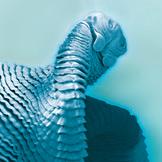
Horses can become infected by consuming forage mites along with grass. The larval stage of tapeworms is released from the mites after they are ingested.
Tapeworms live in the intestine. The ingested larvae develop into hermaphroditic adults that contain segments filled with eggs.

Infective larvae develop in mites within 8 to 20 weeks.
Development rate is temperature dependent.

mite populations increase in spring and summer on paddocks increasing the opportunity for transmission.
Tests that measure antibodies to tapeworm provide valuable information about levels of infection and should be used to guide treatment decisions. Antibody tests are available in blood and saliva formats.
In the blood test, samples are collected by a veterinary surgeon and sent to the laboratory for analysis. This test measures levels of tapeworm-specific antibodies in the blood, with results reported back to the veterinary surgeon as “serum scores.” These scores are categorised as low, borderline, or moderate/high, and treatment is recommended for horses with results in the borderline or moderate/high categories.
The non-invasive saliva test involves taking a sample from the horse’s mouth using a specially developed swab (Fig. 2) and does not require a veterinary surgeon. The swab containing the saliva sample is mailed to the laboratory in a preservative solution, ensuring stability for at least three weeks. At the laboratory, the saliva sample is assessed using a special three-ELISA system that accurately measures tapeworm-specific antibodies, with the results reported as “saliva scores”. Similar to the blood test, the saliva test categorises results as low, borderline, or moderate/ high, with treatment recommended for horses that have results in the second two categories.
Because antibodies take time to decrease after effective treatment, horses should not be tested again until 4 months after the last deworming for blood tests or 3 months for saliva tests.
Worms use suckers to attach. More than 20 worms can cause serious
Segments are released periodically and tapeworm eggs are excreted in dung. Forage mites eat the eggs found in dung.
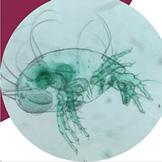
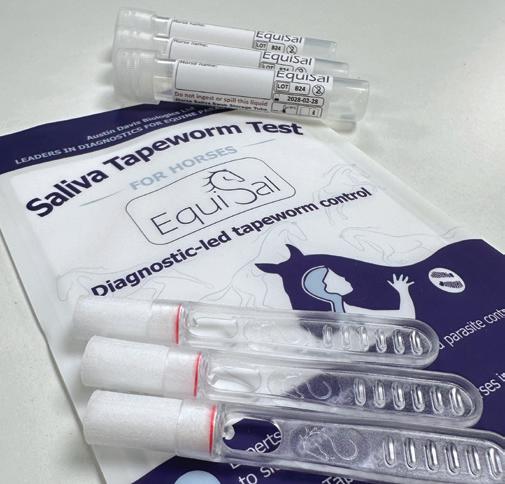
By reliably detecting tapeworm burdens, antibody tests enable treatments to be targeted to only those horses that need treating and therefore reduce the risk of dewormer resistance. Results from tapeworm testing have led to significant reductions in the use of dewormers; from 2015 to 2022, over 164,000 horses in the UK were assessed using the saliva test, with only one-third recommended for treatment (Matthews et al. 2024).

Apply best practice worm control for horses in training
New guidelines advise diagnostic-led programmes for worm control in horses1
Horses in training are generally at low risk of worm infection*
Testing low infection-risk horses results in substantial reductions in wormer use, reducing selection pressure for drug resistance
* When at pasture, apply excellent paddock management, including daily dung removal and low stocking densities





Strongyle worm egg shedding (FEC) patterns in adult horses mean that >70% of those tested do not need worming2


In low-risk groups, >60% of horses fall under the lowest small redworm burden threshold3 Only 1/3 of UK horses tested using the EquiSal saliva test have tapeworm infections that require treatment3
1 BEVA Anthelmintic Toolkit (beva.org.uk), 2 Relf et al. 2013. Parasitology 140:641-652, 3 Matthews et al. 2024. In Practice 46:34-41.
Diagnostic-led programme for horses in training


















Tapeworm testing frequency can be determined by conducting a risk assessment. Key risk factors include age and access to contaminated grass, as well as historical test results. These parasites can be long-lived and persist for extended periods, so it is essential to consider each horse’s history during or before training. While most horses in training are at low risk due to having limited pasture access, yearlings and two-year-olds may have higher burdens, especially if from breeding farms or other premises where there is a high level of infection. However, all ages of horses are susceptible to tapeworms. Regular assessments with a veterinary surgeon will also identify risk factors in yard management practices, including those associated with activities like short daily turnouts. A comprehensive risk assessment will:
1. Identify which tests to perform (FEC tests, small redworm blood tests, tapeworm tests) and the frequency of testing
2. Highlight the need for treatments for high-risk horses when tests do not provide information for treatment decisions
3. Provide information on worm exposure and ways to minimise infection risks.
If significant risks are detected, such as a high level of tapeworm infection indicated by testing or the frequent introduction of new horses, testing should occur every six months. Once a year testing may be appropriate in low-risk situations where previous testing has shown low evidence of tapeworm infection.
Testing identifies infected horses that could spread infection to others, allowing for prompt treatment and reducing the risk of colic. If many horses test positive, it is crucial to identify the source of infection and improve management practices to reduce spread.
In a recent case study on a UK training yard, 56 horses were tested for tapeworm antibodies. The results revealed that only 14% of the horses had tapeworm burdens that required treatment. These horses were turned out in a small paddock for just 30 minutes each day, and because dung was not removed from the area, the paddock was identified as a source of infection. The trainer was advised to remove the dung from the paddock daily and to treat any horses that tested positive for tapeworms.
BELOW: Treating yard newcomers with a broad-spectrum dewormer should be avoided due to increasing drug resistance in all common parasites.
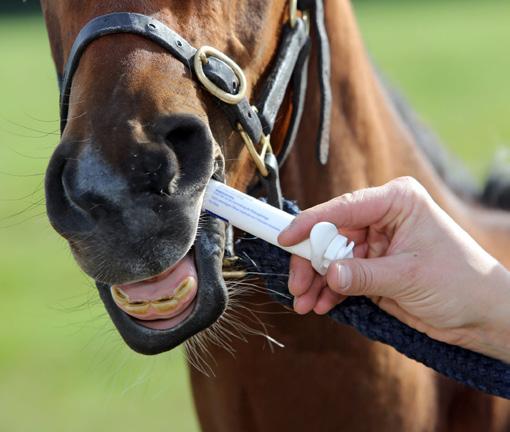


This testing protocol not only helped reduce the overall deworming frequency, but also provided the trainer with valuable information about horses at risk of colic. It also highlighted potential areas for improving parasite management practices.
Introducing new horses to racing yards requires proper assessment to determine if they have roundworm (small redworm, ascarid) or tapeworm infections. The traditional method of treating all newcomers with a broad-spectrum dewormer is outdated and should be avoided due to increasing drug resistance in all common parasites. Instead, it is recommended to assess new horses using appropriate tests, specifically;
1. FEC tests to identify if they are shedding eggs such as small redworm and ascarid eggs
2. Blood tests to detect small redworm stages that may not be detected using FEC tests
3. Tapeworm tests to identify horses that need specific treatment for this parasite.
If any of these tests return positive results, the appropriate dewormer can be selected to target the parasites present. Furthermore, if a horse tests positive in the initial FEC test, it is advisable to conduct a follow-up FEC test two weeks after treatment to determine whether the dewormer has been effective.
Every horse will encounter parasitic worms at some point in their life, making effective parasite control essential for their health and well-being. While traditional all-group dewormer treatments have been common, rising cases of dewormer resistance reveal that this approach is no longer sustainable, especially as no new anti-tapeworm treatments are expected soon.
Using tapeworm tests to determine if treatment is needed is crucial to maintain the effectiveness of existing dewormers. Many horses in low-risk environments have minimal or no tapeworm infections, making regular treatments unnecessary. Testing helps identify only those horses that truly need treatment, thus promoting the longer-term efficacy of dewormers.
In the racing industry, there is significant overuse of dewormers, with few trainers using evidence-based practices. It is essential that the spread of resistant worms is prevented, especially as racehorses move to various environments (breeding farms, sport horse yards, sanctuaries, leisure horse premises) where more vulnerable horses may reside. For this reason, the industry must adopt management-based and test-led methods to control worm populations effectively.
References:
1. Matthews et al. 2024. In Practice 46:34-41.
2. Nielsen. 2023. Int J Parasitol Drugs Drug Resist. 22, 96-101.
3. Pavone et al. 2010. Vet. Res. Commun. 34, S53-6.
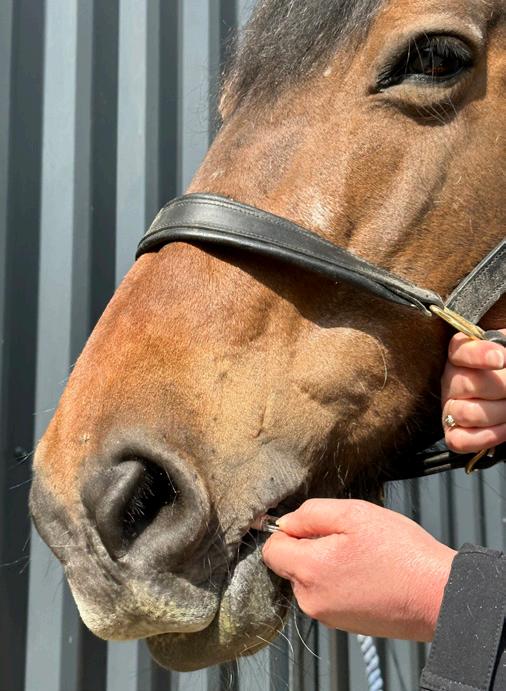

Understanding a horse’s performance strengths and weaknesses is crucial when planning their training regimen. Training thoroughbreds isn’t a one-size-fits-all endeavour—factors like racing age, track distance and surface type are just a few of the things we have to consider.


Over the years, advances in veterinary care, nutrition and conditioning have shaped the sport, helping us to produce more competitive horses. But imagine tailoring your training plan based on DNA—not just intuition. Now, there’s an increasing emphasis on a promising tool that enables you to do just that: performance genetics.
It isn’t just scientists who feel that equine genetics can change the way we understand horse racing, either. California Horse Racing Board Vice Chairman Oscar Gonzales said, “California breeding is at a crossroads—if we want to produce top-quality horses, we must embrace new technologies and analytics. By using information from thoroughbred DNA, we can make better breeding and training decisions that promote health and soundness, ensuring the best horses reach the track. Other sports are using tech to elevate their game, and so should we.”
By understanding a horse’s genetic makeup and embracing a scientific approach, trainers can fine-tune both their training programs and racing strategies. In this article, we will explore how key genetic markers—including the myostatin gene (MSTN), height and respiratory health, temperament, and genomic inbreeding values (GIV)—can influence training, optimise performance, and ultimately increase strike rates.
Performance genetics aren’t entirely new to the thoroughbred world. For years, breeders and trainers have been using the “speed” gene, MSTN, to help determine a horse’s ideal racing distance. But how does this gene affect performance, and why is it so important for training?
Myostatin is a protein that plays a crucial role in the negative regulation of muscle mass, particularly the balance between
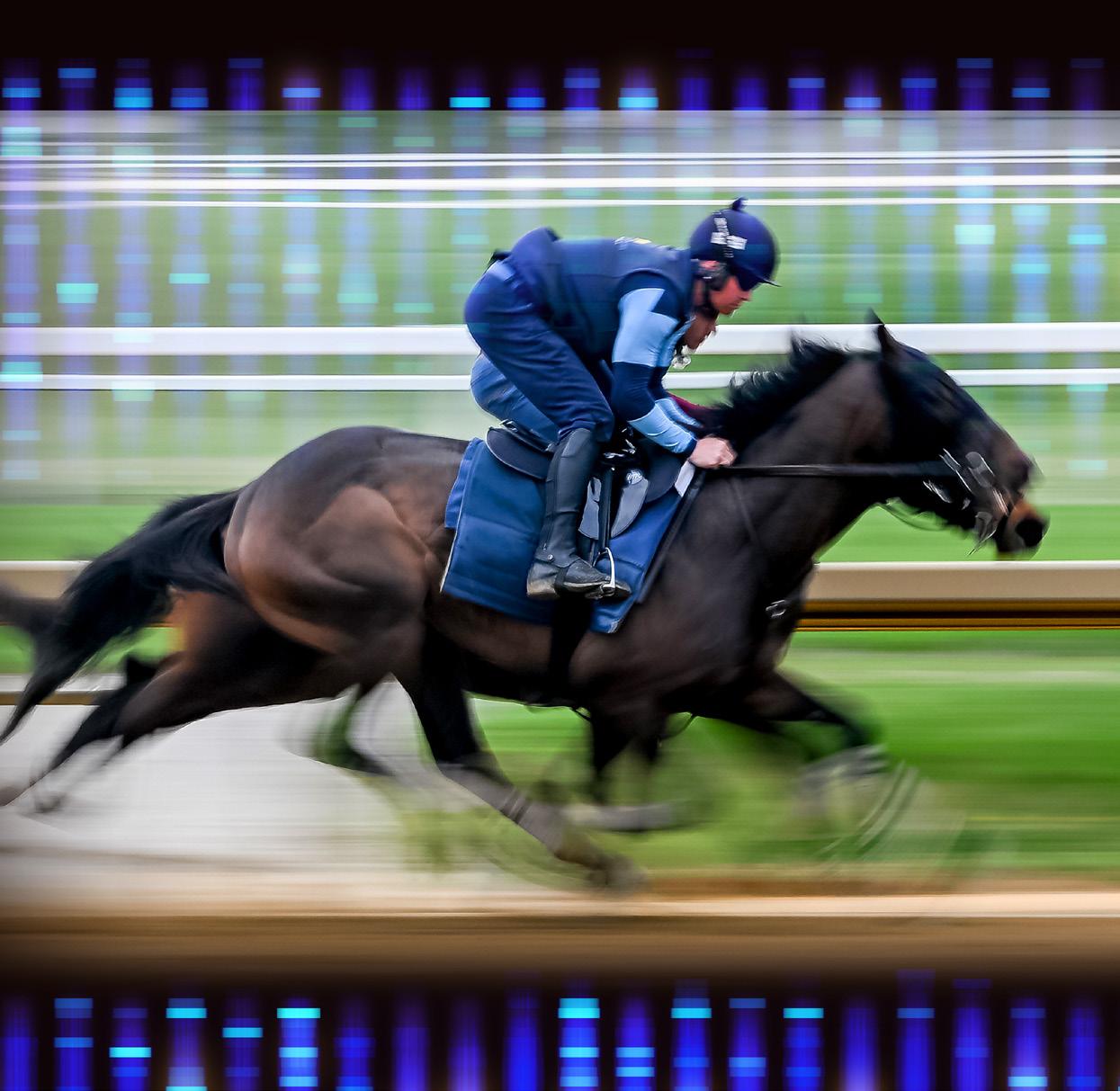
fast and slow-twitch muscle fibres. Genetically, horses can have two copies of the “Sprint” variant, two copies of the “Endurance” variant, or one copy of each—known as “Sprint/Endurance.”
Sprint-type horses are typically more muscular and compact, equipped with a higher proportion of fast-twitch muscles that enable explosive bursts of speed over shorter distances. These horses generally excel in races under 6 furlongs, physically mature faster, and often earn more as two-year-olds.1 Therefore, focusing on high-intensity, short-duration training that sharpens acceleration, and avoiding endurance-building exercises that play against the horse’s natural abilities, may help maximise their potential.
In contrast, endurance-type horses possess a greater percentage of slow-twitch muscle fibres, which contract more slowly but can sustain effort without fatiguing quickly. Typically smaller and less muscular, these horses may reach their peak performance
later than their sprint-type counterparts, which should be taken into consideration. They are particularly well-suited for longer races, typically 9 furlongs or more, and incorporating aerobic conditioning exercises into their training regimen would be beneficial to capitalise on their genetic predisposition for sustained effort.
Sprint/endurance horses are versatile and can perform well across a range of distances, benefiting from both speed and stamina. Therefore, their training should include exercises tailored for both short and long distance, depending on the longterm goals for that particular horse.
Incorporating MSTN testing into a training program enables more precise conditioning based on a horse’s genetic makeup, ultimately reducing the risk of over-training and increasing performance consistency. However, it’s essential to consider other physical traits with genetic factors, such as height (LCORL).

When selecting mating pairs for thoroughbreds, it’s common practice to evaluate physical traits alongside pedigree. Breeders often seek attributes like increased body size and muscle mass, aiming to produce bigger, faster and stronger horses. Yet, it’s important to note that larger horses physically mature at a slower rate compared to those of average height. Furthermore, research indicates that horses carrying at least one copy of LCORL may be taller but are also at a higher risk of developing Recurrent Laryngeal Neuropathy (RLN), commonly known as “roaring.”2
Roaring is a disease that results in a paralysed larynx and ultimately leads to an obstruction of airflow during intense exercise. Horses with RLN struggle to breathe normally at speed, therefore their performance potential could be limited. In addition to height, several other factors can contribute to a horse’s predisposition to RLN. Fortunately, genetic tests are available to determine a horse’s risk level: ~12x higher risk (RLN/RLN), ~5x higher risk (RLN/n), or has no increased risk (n/n) for developing the disease.
It’s important to realise that knowledge is power. By understanding the genetic risks associated with your horse, you can anticipate physical limitations and adjust training accordingly. This may involve incorporating more respiratory conditioning, closely monitoring oxygen intake under stress, or considering surgical intervention for affected horses.


Performance is not just about physicality—temperament plays a crucial role in how a horse handles the demands of training and competition. As more research is done with the assistance of thoroughbred DNA, trainers canuse genetic analysis to provide insights into a horse’s behavioural tendencies. In this case, let’s look at the temperament gene, DRD4, which tells us whether the horse is more “Curious,” “Vigilant,” or a combination of both. 3
Curious horses, defined by a willingness to be interested in or approach novel objects, are often more inclined to engage with new environments, challenges, or stimuli. This means they may be more adaptable to varied training regimes, allowing them to learn faster in new situations or settings, such as different tracks or training facilities.
That is not to say thoroughbreds who are vigilant about their surroundings do not readily learn or adapt, only that they may benefit from different training methods. These horses often possess heightened awareness of their surroundings, making them valuable assets in racing. This trait may mean they respond more readily to jockey commands and can navigate environmental factors, such as the positioning of other horses, while racing.
This horse is genetically Endurance/Endurance, making her more likely to excel at lengths 9 furlongs or greater. She also carries one copy of Vigilance and one copy of Curiosity, which studies indicate may affect her interest in novel objects and willingness to approach them.
Speed: Endurance
Temperament: Curious & Vigilant

Genomic Inbreeding Value: 15.670%
It’s essential to recognise that temperament cannot be attributed to a single gene; other factors, such as environment and stress, also play a significant role in shaping behaviour. For instance, more high-strung horses may need additional mental conditioning to cope with the pressures of race day, including exposure to noise and distractions. In contrast, calmer horses might benefit from a more stimulating environment to maintain their focus and sharpness. Trainers can leverage this knowledge to adjust everything from a horse’s daily routine to its training regimen, ensuring that the animal’s psychological needs are addressed in a way that enhances performance.
Another critical component of performance genetics is understanding the genomic inbreeding value (GIV). Inbreeding in thoroughbreds is a double-edged sword—it can amplify desirable traits, but it can also increase the risk of hereditary health issues

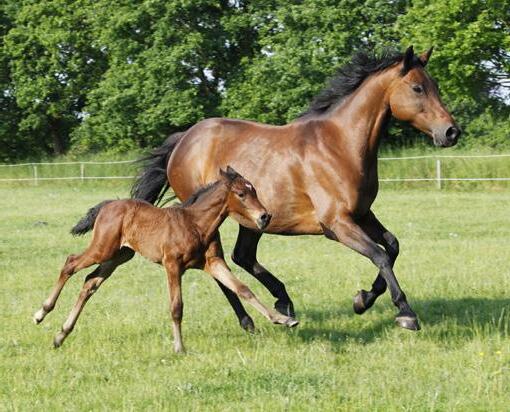
that negatively impact performance. While more research is needed, these issues may present as lower endurance, slower recovery times, or reduced competitiveness on the racetrack.
Over the past five decades, inbreeding rates have increased significantly, yet we have not observed a corresponding rise in the speed of thoroughbred horses.4,5 In fact, a 10% increase in inbreeding reduces a horse’s likelihood of successful racing by 7%, but what does this mean for performance?
Horses with a high inbreeding coefficient are often more susceptible to injuries and genetic disorders, leading to declines in overall vitality and performance. By understanding a horse’s GIV, trainers can refine their conditioning programs to emphasise injury prevention and overall health management. For example, you may consider implementing medical screenings or adopting less aggressive workout routines to minimise the risk of breakdowns related to structural weaknesses.
Conversely, horses with lower inbreeding values tend to have greater genetic diversity, which can enhance their resilience and adaptability. These horses may be able to manage more intense training schedules without the same risk of injury, allowing trainers to push them harder when necessary.
In thoroughbred racing, there is no universal training program, nor is there a guaranteed formula for ensuring your horse becomes a champion. However, by leveraging performance genetics, we can increase those odds and refine training strategies in ways that were previously unimaginable.
By understanding key genetic markers such as the MSTN gene, and the connections between height, maturation and respiratory risk, trainers can tailor their methods to meet the unique needs of each horse. Taking into consideration the horse’s temperament and genomic inbreeding value allows for further refinement.
As the science of equine genomics continues to evolve, owners and trainers that incorporate these performance factors into their training programs will be at a distinct advantage—giving their horses the best possible chance to reach the winner’s circle. Performance genetics provide a profound edge, and with the precision of modern DNA analysis, the future of thoroughbred training is shaping up to be faster, stronger and smarter than ever before.
PHOTOGRAPHY: DEPOSITPHOTOS, GALOPPFOTO.DE, SHUTTERSTOCK

With the precision of modern DNA analysis, the future of thoroughbred training is shaping up to be faster, stronger and smarter than ever before.

References
1. Tozaki, T., Sato, F., Hill, E. M., Miyake, T., Endo, Y., Kakoi, H., Gawahara, H., Hirota, K., Nakano, Y., Nambo, Y., & Kurosawa, M. (2011b). Sequence variants at the myostatin gene locus influence the body composition of Thoroughbred horses. Journal of Veterinary Medical Science, 73(12), 1617-1624.
2. Boyko, A. R., Brooks, S. A., Behan-Braman, A., et al. (2014). Genomic analysis establishes correlation between growth and laryngeal neuropathy in Thoroughbreds. BMC Genomics, 15, 259. https://doi.org/10.1186/1471-2164-15-259
3. Momozawa, Y., et al. (2005). Association between equine temperament and polymorphisms in the dopamine D4 receptor gene. Mammalian Genome, 16, 538-544. PMID: 16151699
4. Hill, E. W., Stoffel, M. A., McGivney, B. A., MacHugh, D. E., & Pemberton, J. M. (2022). Inbreeding depression and the probability of racing in the Thoroughbred horse. Proceedings of the Royal Society B, 289, 20220487. http://doi.org/10.1098/rspb.2022.0487
5. McGivney, B. A., Han, H., Corduff, L. R., et al. (2020). Genomic inbreeding trends, influential sire lines, and selection in the global Thoroughbred horse population. Scientific Reports, 10, 466. https://doi.org/10.1038/s41598-019-57389-5
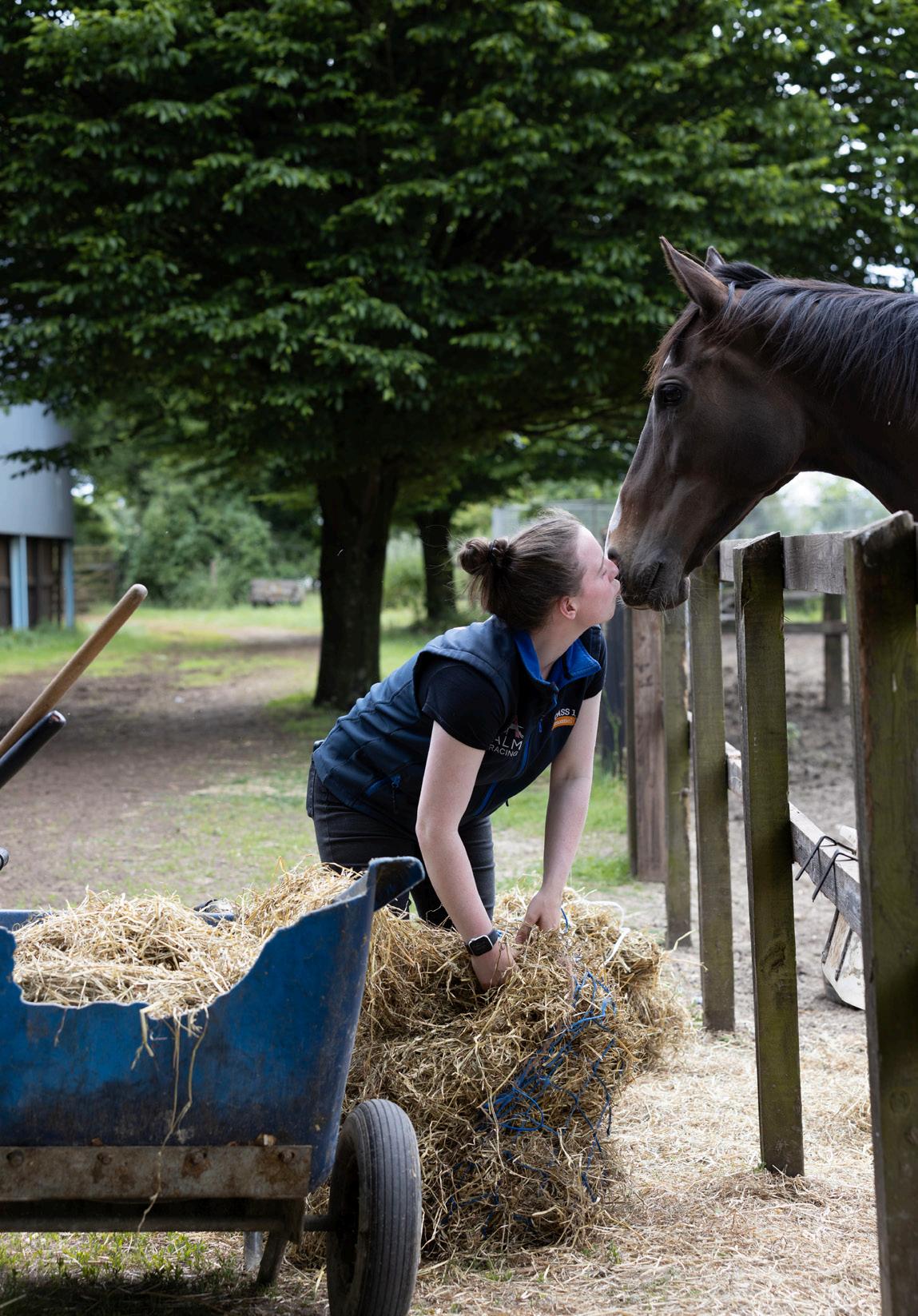
Have you ever found yourself scrolling through social media, browsing job search pages dedicated to the racing industry, or simply chatting with trainers and others in the field, only to be struck by the flood of job postings from racing yards and stables across Europe actively seeking work riders, stable staff, and ground staff?
It seems that, no matter the country, the demand for these vital roles is relentless. This stark reality brings to light one of the most urgent challenges facing the horse racing industry today: the shortage of people willing to step into these essential positions, particularly within the stables. The lack of skilled and dedicated staff poses a serious threat because the stable is the beating heart where our four-legged athletes are nurtured, trained, and primed for victory on the track.
Without a passionate and committed workforce operating behind the scenes, the entire racing ecosystem stands on shaky ground. Identifying the root causes of this labor crisis and uncovering effective solutions is crucial to safeguarding the future of the sport and ensuring that racing continues to flourish with the support of devoted individuals.
Understanding why the racing industry is facing such a severe staff shortage requires a closer look at the underlying factors contributing to this issue. Several elements could be at play, including a general decline in interest among younger generations in pursuing careers within the racing sector.
Additionally, lifestyle changes, evolving career preferences, and a perception that jobs in the industry require a level of commitment that may not align with modern work-life balance expectations could all be influencing the decline in new recruits. Exploring these reasons in depth can provide valuable insight into the root causes of this workforce crisis and help guide the search for viable solutions.
Firstly, a key element that must be considered is the nature of the work itself. As Guillaume de Saint-Seine, President of France Galop, pointed out, “the work of stable staff and in stud farms is potentially attractive because it is close to nature, but at the same time, it is a job that requires significant physical effort, with more demanding working hours than in other sectors.”
This contrast, between the appeal of being in close contact with animals and nature, and the physical intensity and time commitment required, can have a major influence on how these roles are perceived.
Furthermore, the early working hours, weekend shifts, and the need to adapt to the rhythm of the horses often leave little room for flexibility, which can deter individuals used to more conventional schedules. In some regions, a lack of access to affordable housing near training centres or stud farms can add further complications, especially for younger staff or those relocating from urban areas. While some individuals may be drawn to the unique environment and lifestyle that this work offers, others may find it too challenging or incompatible with their expectations.
Another important element to consider is the broader cultural transformation reshaping the way people approach work. As Guillaume Hernberger, President of AFASEC (the Association de Formation et d’Action Sociale des Écuries de Courses - which translates to the French racing stable employee training association) highlighted, “we have to consider that we are dealing with a new generation that has lived also the COVID, that has led
to a big change of work that can be done like house working, but our racing industry of course cannot do that because it is a job that requires a work in presence.”
The pandemic has accelerated a shift in expectations: remote work, flexibility, and digital autonomy are no longer seen as perks but as essential components of modern employment. For many young professionals, having the freedom to manage their time independently and maintain a healthy work-life balance has become a top priority.
This is precisely where the racing industry finds itself at a crossroads. While many sectors have adapted to remote and flexible models, the horse racing world remains firmly anchored in physical presence, early mornings, and hands-on tasks. This creates an inherent mismatch between what the industry can realistically offer and what younger generations increasingly look for in a job.
The growing preference for autonomy, digital accessibility, and adaptable schedules has redefined what people expect from the workplace, especially younger generations. Yet, due to its very nature, the racing industry cannot pivot toward remote roles. The work requires daily, in-person care and routine-based tasks that cannot be replicated virtually. This structural rigidity places the sector at odds with broader labor market trends, complicating both recruitment and retention.
Beyond structural challenges, one of the most pressing yet often overlooked issues is the limited visibility of career opportunities within the racing industry. In many parts of the world, this sector still struggles to position itself as an attractive and accessible professional path, especially among younger generations. While some countries have developed more effective strategies to promote the industry, in others there remains a strong need to raise awareness and broaden its appeal.

Too often, the racing world is perceived as a niche domain, associated only with jockeys or trainers, leaving a wide range of roles: technical, managerial, veterinary, and beyond, largely unknown. Without proactive communication, many young people simply don’t consider this industry as a viable career option.
To overcome this barrier, it is essential to invest in awareness campaigns, partnerships with educational institutions, and storytelling initiatives that highlight the diversity, purpose, and passion that define the world of racing. By making these opportunities more visible and relatable, the industry can begin to capture the interest of a new generation of professionals.
Once these underlying causes are acknowledged it becomes clear that the racing industry must adopt a dual approach focused on both attraction and retention strategies.
It is not only essential to draw in new talent, but also to ensure that this workforce remains engaged, motivated, and committed over time. Building long-term career pathways, improving working conditions, and fostering a sense of purpose are all key components in this effort. In this context, several countries have already started to implement concrete measures. Notably, both France and the UK are actively developing comprehensive programs aimed at enhancing the appeal of the industry while also strengthening workforce stability.
The UK has recently taken a concrete step in addressing workforce challenges with the launch of the Horseracing Industry People Board (HIPB) Strategy, “the government body and then the stakeholders took a pause and said we have been very good at looking at horses and horse welfare, but maybe now we should focus on the other major part of the industry, which are the people” says HIBP board member, Tallulah Wilson.
The strategy outlines pressing issues such as national labor shortages, shifting workplace expectations, and new employment regulations, while also recognising existing strengths, like an 80% staff retention rate in racing yards. However, deeper structural challenges remain. Nearly half of stable and stud staff report bullying and harassment, 45% of yard employees plan to leave within two years, and mental health concerns affect over 70% of the workforce. The average age of new entrants has risen from 23 to 28, and dissatisfaction with pay and working conditions is growing.
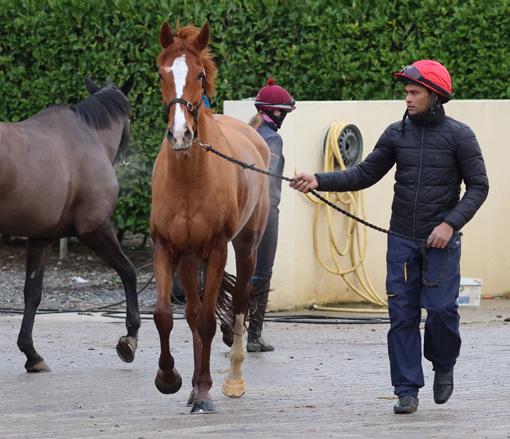
A theme recognised by trainer Daniel Kübler, “employers and employees need to change their attitude and culture around what a workplace looks like, and I think that’s really critical with trying to attract the next generation to the workforce, is that generation have very different expectations to the previous one, but the industry’s got to understand and adapt. The days of when people were prepared to work six, seven days a week with animals has changed and it’s not good to say ‘that’s how the industry is,’ we have to say ‘how can we adapt instead’.”
Recognising this disconnect is essential if the industry hopes to remain competitive and relevant. To bridge the gap, it must rethink how it communicates career opportunities, highlighting not only the purpose and passion behind the profession but also the unique, irreplaceable human-animal bond that no desk job can replicate.
External pressures further compound the issue: a nationwide labour shortage, growing urbanisation (with 84% of the UK population living in cities), and a declining working-age population, projected to drop by 1.2 million by 2034.

Additionally, 83% of Generation Z consider diversity and inclusion policies a key factor in choosing a job, an area where the racing industry still faces perception challenges. The sector’s “always-on” culture, intensified by a 50% increase in evening fixtures over the last decade, contributes to fatigue and unsociable working hours.
While many promising initiatives are already underway, such as the new drug and alcohol testing scheme, the HIPB Strategy clearly signals that a people-centered transformation is no longer optional, but essential.
Although external political factors, such as Brexit, are not directly addressed within the strategy, they remain part of the broader context in which these challenges exist. As Kübler observed, “this is something that must necessarily sit outside the strategy we’re proposing, because it cannot influence the current political context and immigration policy. That said, the BHA [British Horseracing Authority] has made and continues to make efforts to facilitate visa access, but the reality is that our government wants to see industries making every effort to recruit and develop home-grown talent first.” This reinforces the importance of a comprehensive, long-term approach to workforce development within the sector.
The HIPB Strategy presents a well-structured and comprehensive plan to address workforce challenges in British horseracing. It is organised around five key thematic areas, each with defined objectives and actions. Recruitment focuses on increasing the supply of skilled and diverse people through clearer pathways into the industry, including targeted campaigns and strengthened links with training providers such as the British Racing School and National Horseracing College.
Training and Development aims to enhance skills across all levels by improving the training offer, promoting apprenticeships, simplifying funding models, and introducing tools like a Rider Competency Matrix and Skills Passport. Employment Practices target the improvement of working conditions, with initiatives to reduce unsociable hours, implement flexible work models, and support employers in workforce management.
Inclusion addresses the need for more diverse and welcoming workplaces, with action plans on gender equality, ethnic diversity, and anti-sexual misconduct campaigns, alongside an Employer Quality Standard to raise workplace benchmarks.




Wellbeing is another core pillar, aiming to foster a culture of safety and mental health support through regular surveys, expanded services, and a drug and alcohol testing policy. These thematic areas are supported by two strategic enablers: Communications and Engagement, to improve internal outreach and cross-industry alignment, and Data, to ensure evidence-based decision-making through better workforce analysis and monitoring tools.
The strategy is accompanied by a detailed three-year action plan, with 15 priority projects ranging from recruitment campaigns and trainer course redesign to mentoring programs, equality actions, and workplace standards improvement. To ensure progress, the strategy includes a robust monitoring and evaluation framework, with clear performance benchmarks.
Targets include reducing the average vacancy rate from 24% to 10%, increasing retention rates for Work Riders by 10%, and halving the current 19% skill shortage. Further goals aim to raise the proportion of staff engaged in continuous development from 15% to over 50%, reduce the percentage of staff intending to leave within two years from 27% to 20%, and improve employer satisfaction with training to 70%.
In terms of inclusion, the ambition is to increase the share of women in key stakeholder boards from 28% to 40%, and staff agreeing their employer promotes diversity from 67% to 90%.
The People Board will be responsible for overseeing the delivery of this strategy, tracking results, removing barriers, and ensuring that workforce issues remain a central industry priority.
A full review is planned for 2026, alongside the development of a long-term governance model to sustain progress. This strategic and measurable approach sets a solid foundation for building a more sustainable, inclusive, and resilient workforce across the British horseracing industry.
France is also investing significantly in workforce development, particularly through the support of AFASEC, a key organisation operating across 14 locations, including 5 training schools, 7 social residencies offering affordable housing for employees, and 1 reintegration centre dedicated to supporting individuals with work-related injuries or disabilities.
Under the leadership of Guillaume Hernberger, the organisation has undergone a remarkable transformation. As he explained, “when I started as director in 2021, we were at the lowest number of students ever, just 580, and everyone was saying the sector no
longer attracted people. But I didn’t believe the problem was the industry itself. I told my colleagues we had to get moving, go out there, and convince the younger generations that this is a sector full of opportunities. Thanks to a fully funded training program supported by France Galop and the government, we were able to show that this could be a much more exciting and fulfilling career path than many others. And in 2024, we reached 750 students, the highest in years. That proved to us that we still have the capacity to attract. I’m also proud to say that 2024 was a record year in terms of newly trained riders.”
This positive turnaround clearly shows that, when adequately promoted and supported, the racing industry can still appeal to younger generations. However, having re-established its ability to attract new talent, the next critical step is to focus on retention, ensuring that those who enter the profession through structured training pathways remain engaged and committed over time.
Another key pillar of AFASEC’s action is the AFASEC Recruitment Agency, which supports trainers and breeders in recruiting staff suited to their operational needs. This service assists not only with domestic hiring but also through international recruitment partnerships with countries such as Mauritius, South Africa, India, Venezuela, and Central Africa.
As Hernberger explains, “what we wanted to do, which differentiates us from other countries, is to take a global approach.” Nevertheless, the initiative faced early challenges.
“Sometimes the person trainers interviewed via video was not the same as who arrived. Or in some cases, foreign workers could only arrive after 12 weeks due to lengthy documentation processes and by then the trainer no longer needed them. So we said: we need to act as a blockchain to guarantee both the quality of recruitment and the quality of the job.”
To overcome these obstacles, AFASEC has developed a dual accountability model. On one side, for example, institutions like the Jockey Club of Bangalore vouch for the credibility and reliability of candidates, while on the other, AFASEC guarantees employers that if a placement doesn’t work out, they will relocate the candidate elsewhere.
Moreover, AFASEC also provides initial accommodation and support upon arrival, ensuring smoother integration. As Hernberger emphasises, “we are not stealing the workforce we are skilling it.” In 2024 alone, the recruitment department facilitated around 300 placements, with two-thirds from within


the EU and one-third from outside. To support and scale this international recruitment effort, France Galop, under the leadership of Director Guillaume de Saint Seine, has also engaged directly with national authorities.
Thanks to discussions with the government, efforts are underway to simplify administrative procedures for hiring nonEU workers in the racing sector. As de Saint Seine explained, “I spoke with the Minister, presenting her with an overview of how the French racing sector operates and the challenges we face in recruiting staff. I asked whether there could be any support in easing the bureaucratic process for bringing in workers from outside the EU. The Minister responded positively and is currently assessing the matter with her team. We don’t yet have a final answer, but the prospects appear promising.”
Curiously, in a country where horseracing is no longer experiencing its golden years, a promising initiative has emerged from Italy. The Final Furlong Association has launched an extracurricular training pathway, presented within an agricultural high school, aimed at introducing students to the equine world.
The program, which includes a European-recognised certification, represents a first step toward guiding young people toward potential future careers in the sector. Some students have even had the opportunity to undertake internships in France, thanks to a collaboration with AFASEC and several partner stables.
Although the project was initially developed independently by the association, it has sparked strong interest from the Italian Ministry of Agriculture (MASAF), which has shown openness to supporting the initiative and exploring a formal collaboration. This could mark a new opportunity to bring fresh energy and visibility to the Italian racing sector. Could it be the beginning of a new chapter?
All across Europe, the racing industry is facing similar challenges, but also showing encouraging signs of renewal. From structured strategies in the UK and France to grassroots initiatives in Italy, it is clear that attracting and retaining a new generation of professionals requires not only concrete action but also a cultural shift. Rethinking working conditions, investing in education, and improving communication around career opportunities are all key pillars for the future. As Hernberger humorously questioned during a conversation: “Why does work in the stable start at 5 a.m.?” a simple but powerful reminder that even long-standing traditions can, and perhaps must, evolve in order to meet the expectations of tomorrow’s workforce.











